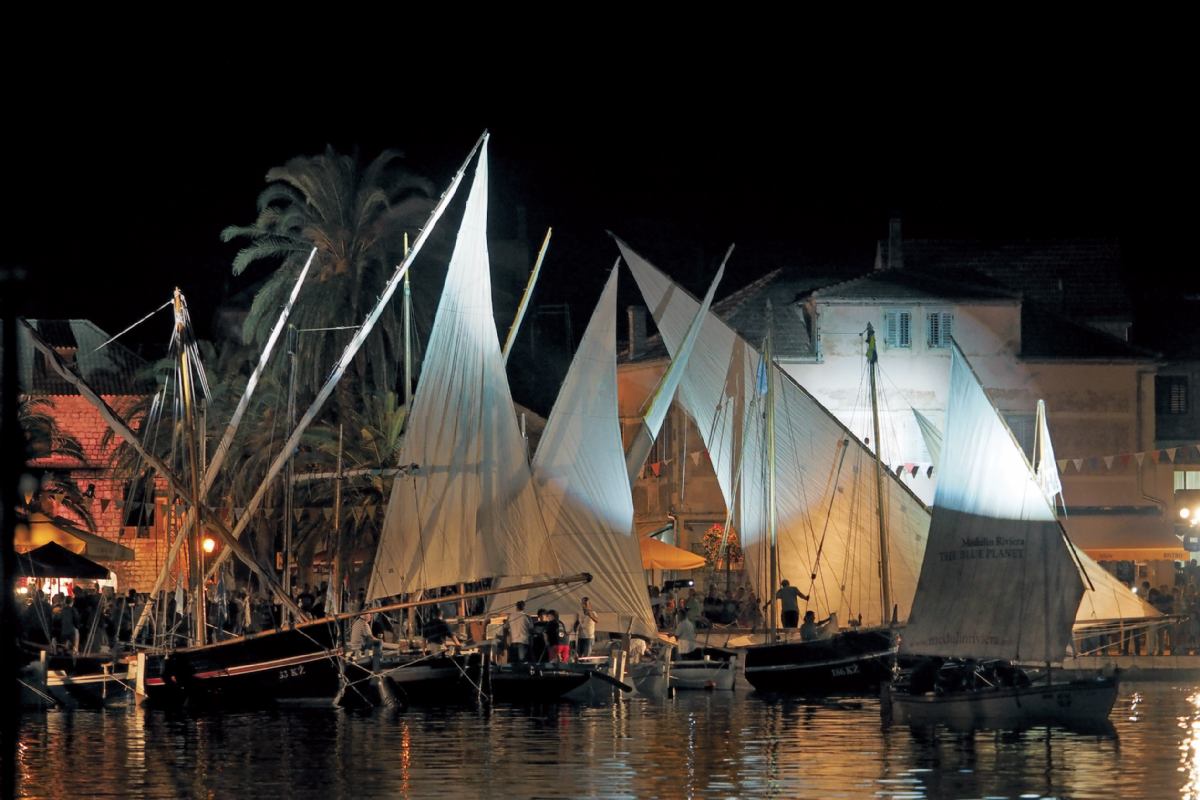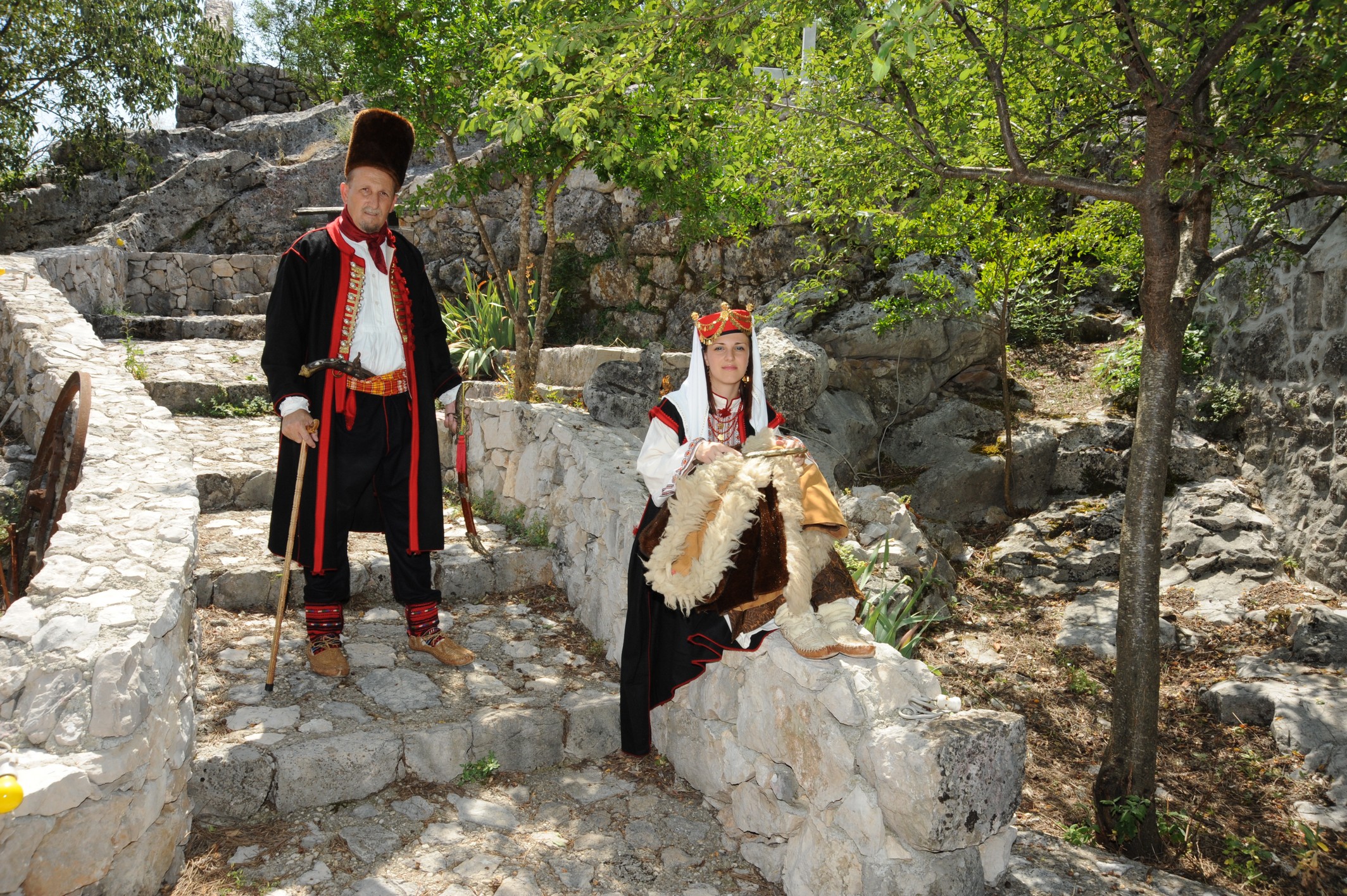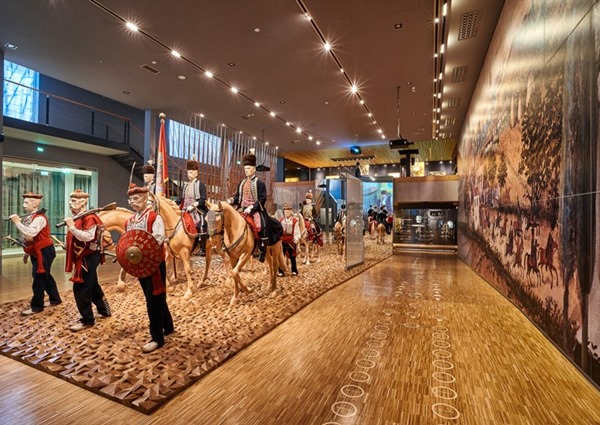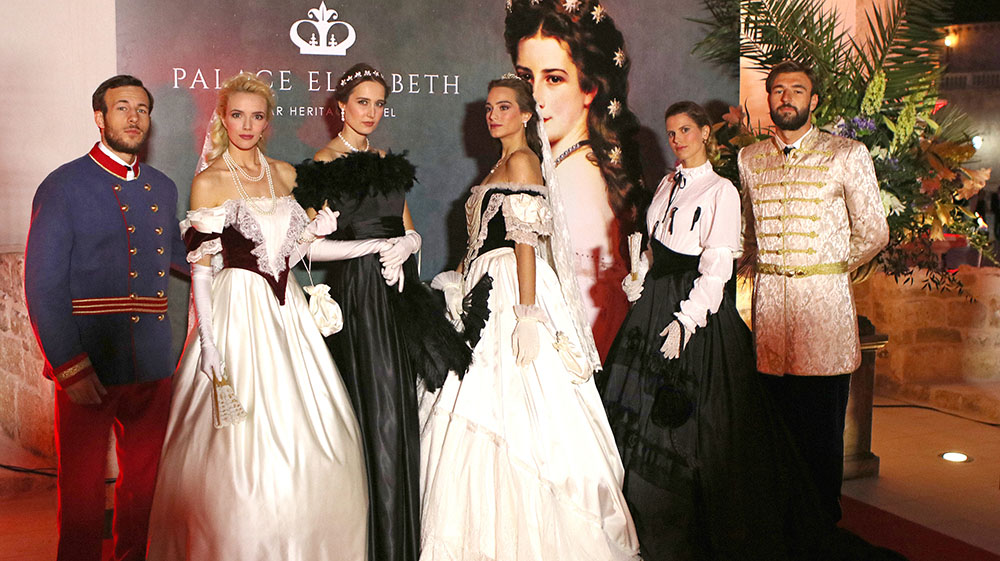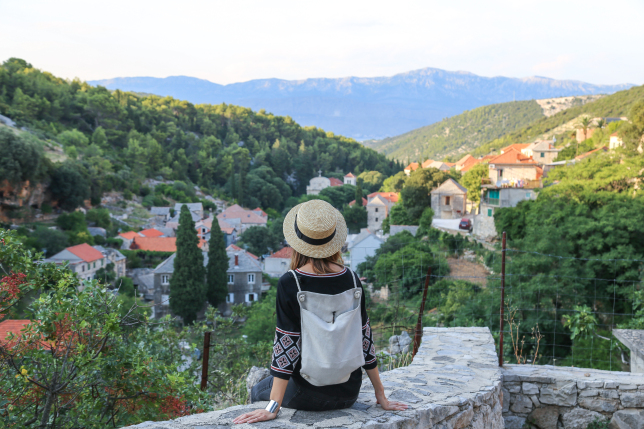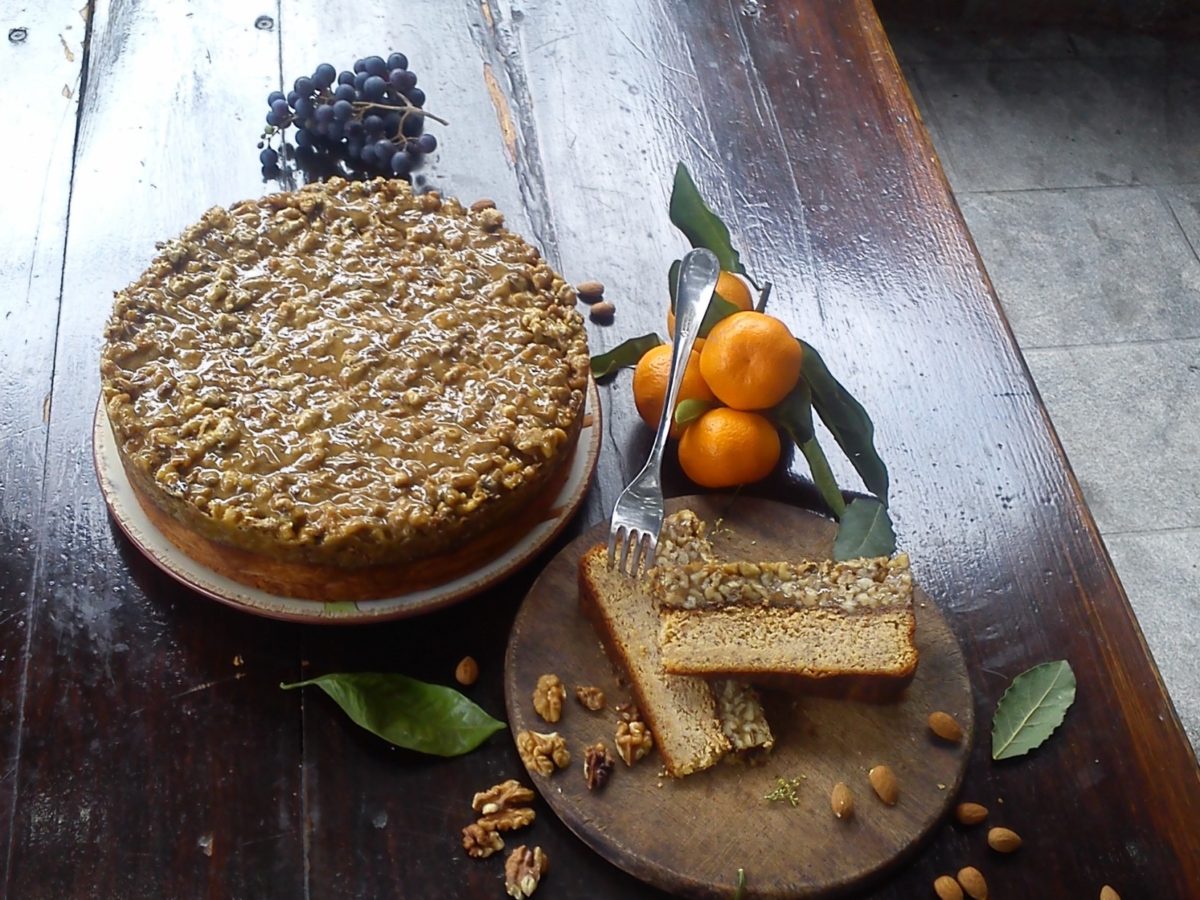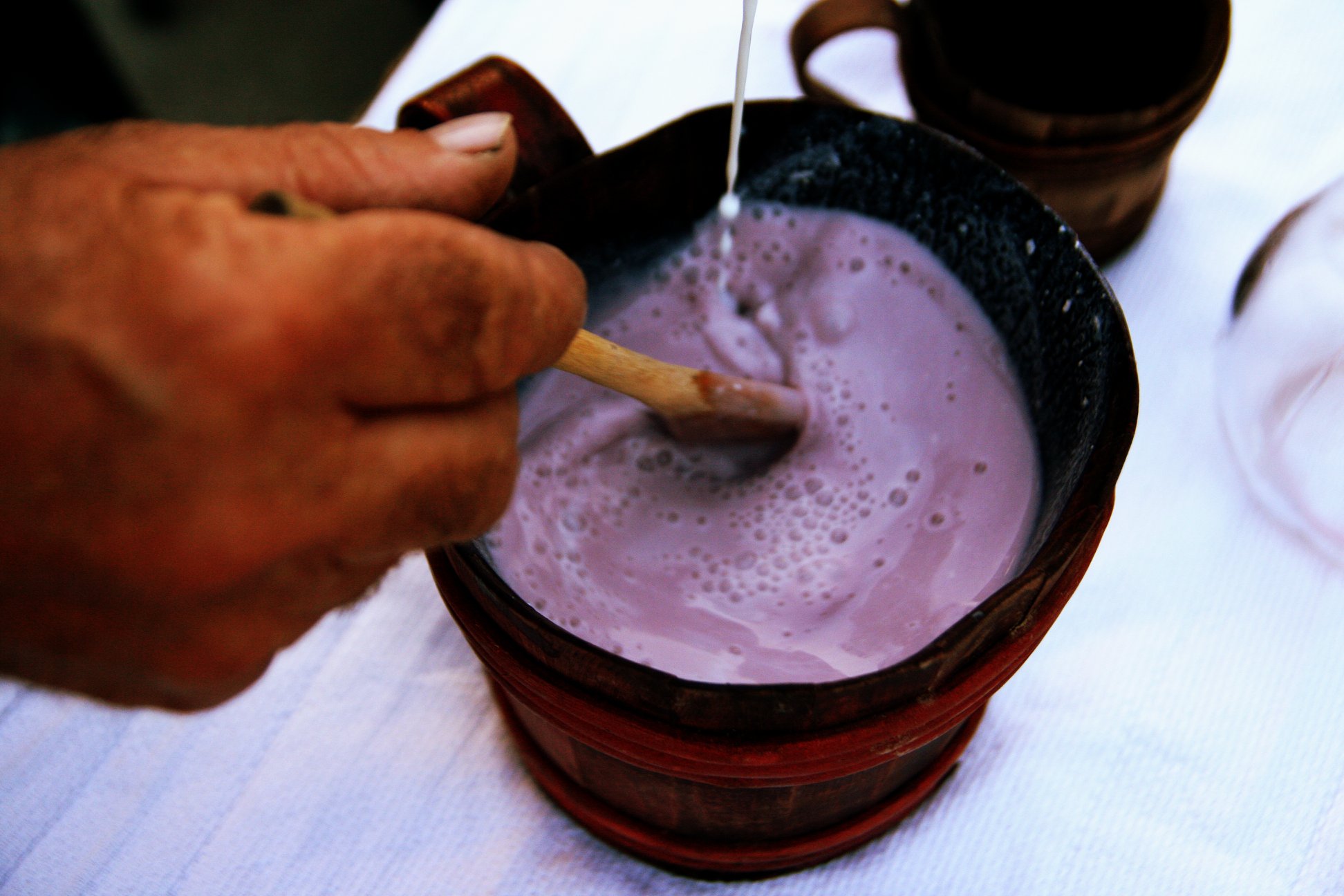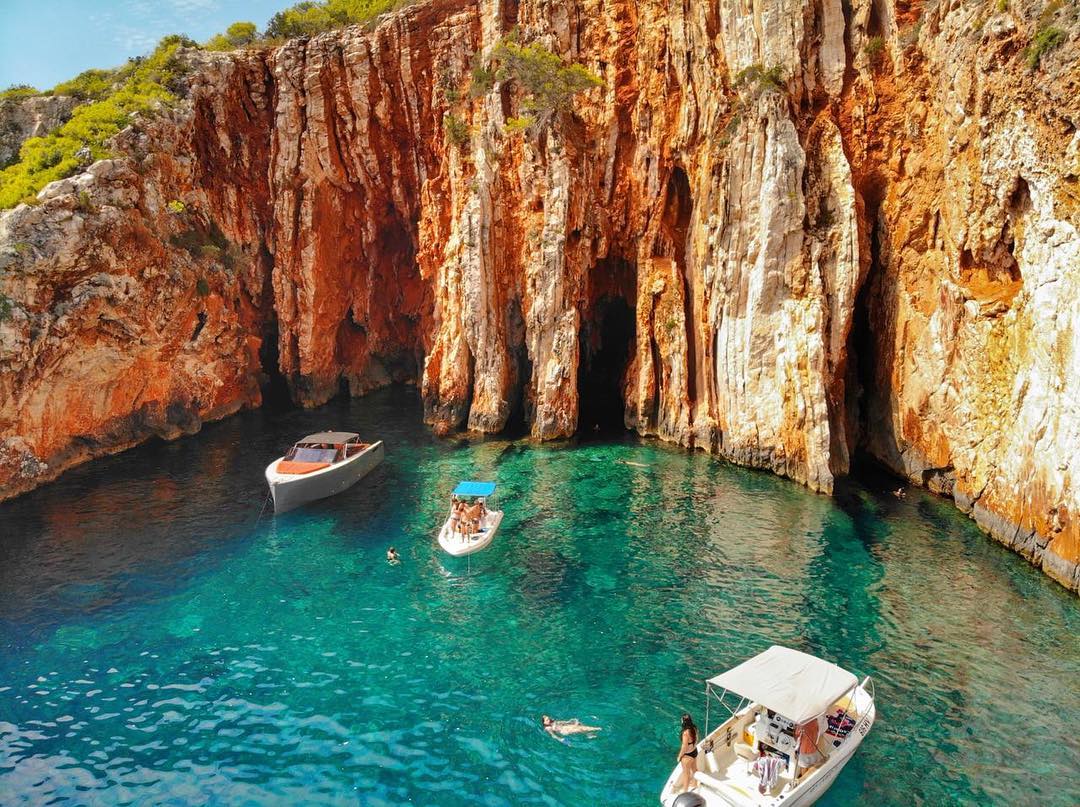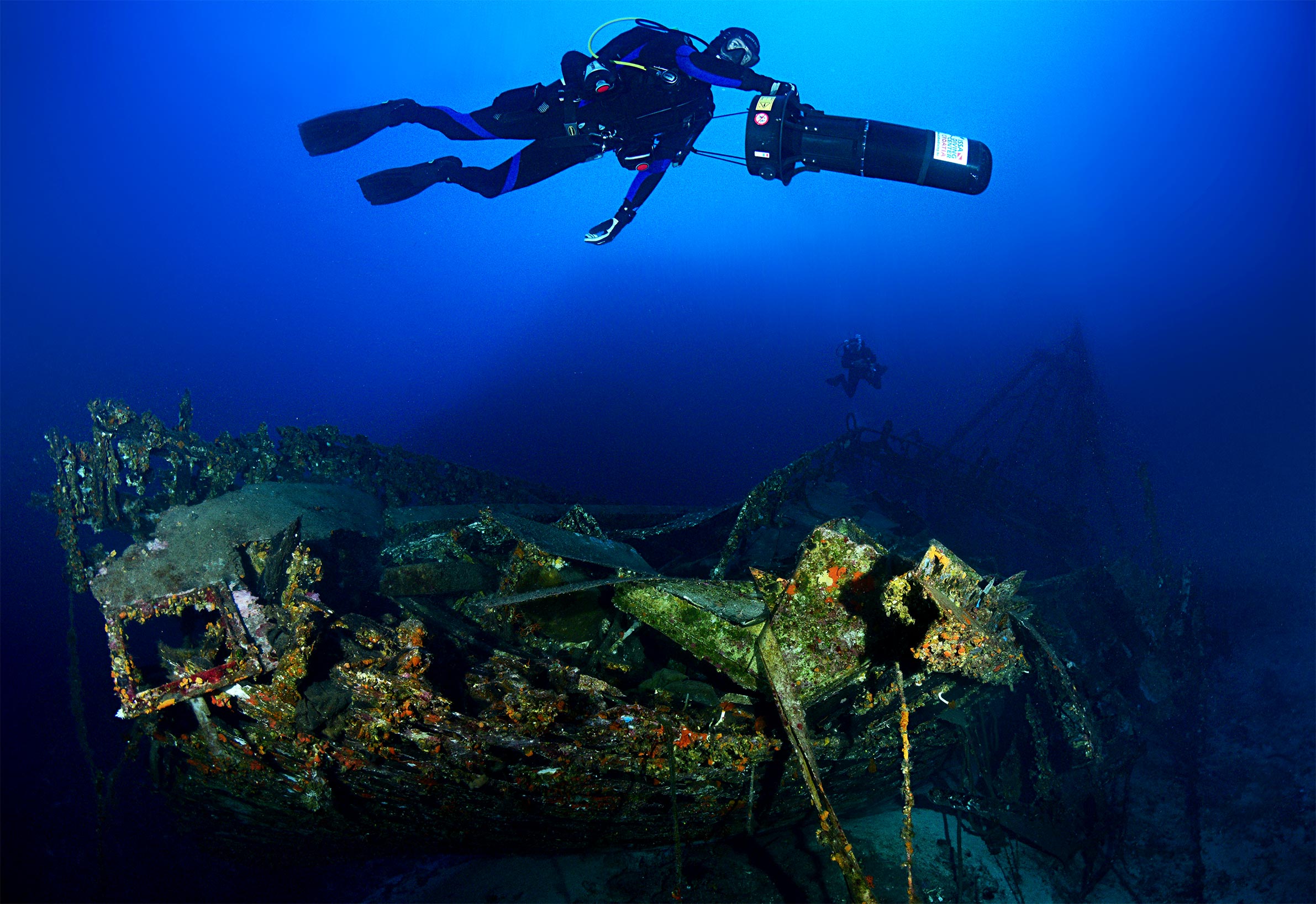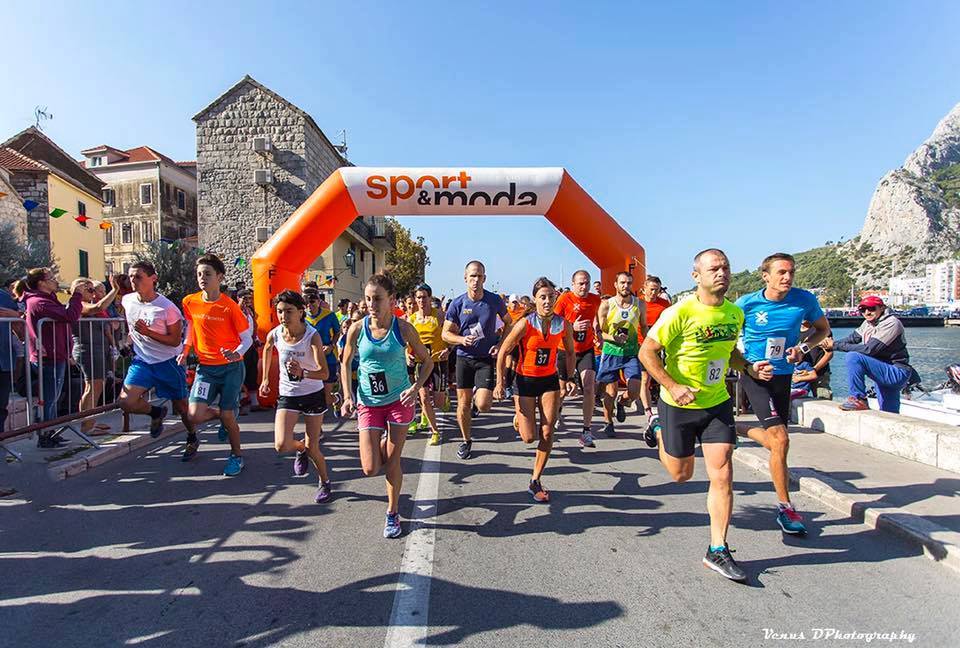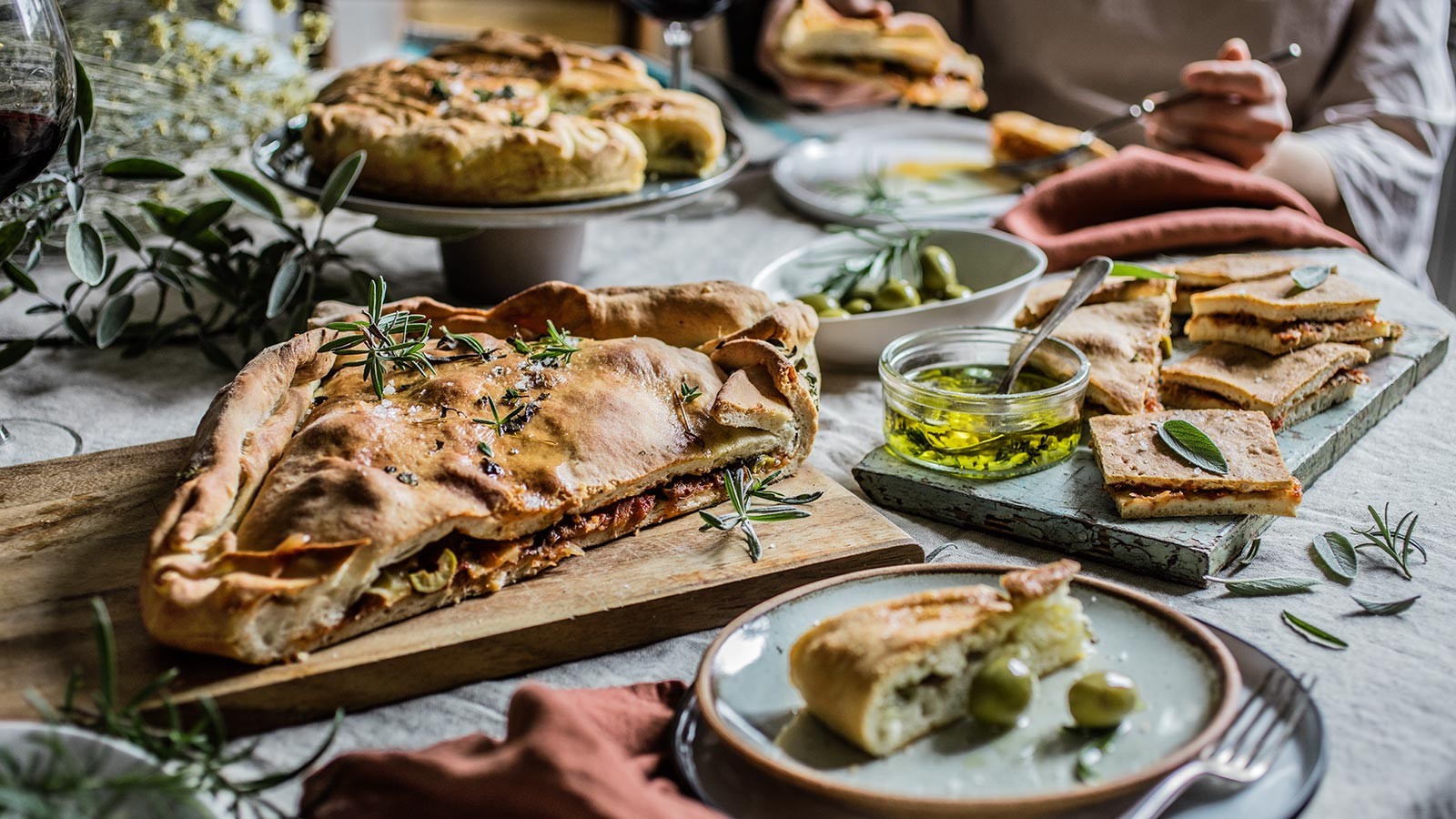Central Dalmatia maritime heritage - Orginal cultural-tourist offer, full of mysteries and stories from the past
Crystal clear beaches, romantic bays and walkways, incredible gastronomic offer is what brings tourist from all over the world to the very heart of Dalmatia.

But Central Dalmatia also has its own maritime heritage, original cultural-tourist offer, full of mysteries and stories from the past, which have additionally enriched and enhanced tourist and cultural offer of this region.
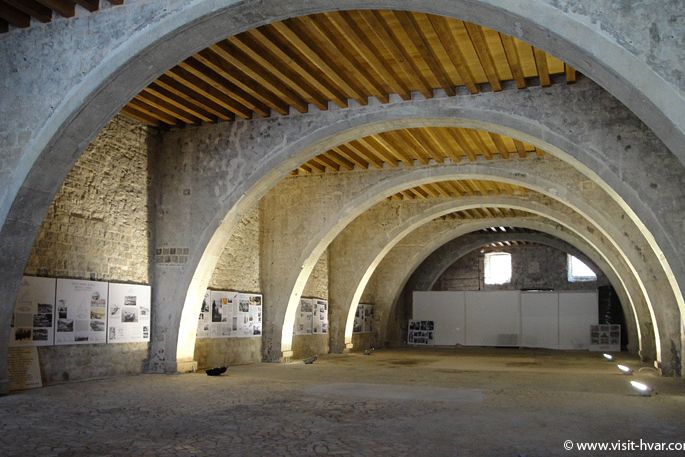
Hundreds of tourists excitedly retell the stories of encounters with pirates, participating in the craziest nautical battles, riding on traditional vessels or cheering in races of traditional boats. These are the most important tourist attractions that you must see and experience for yourselves:
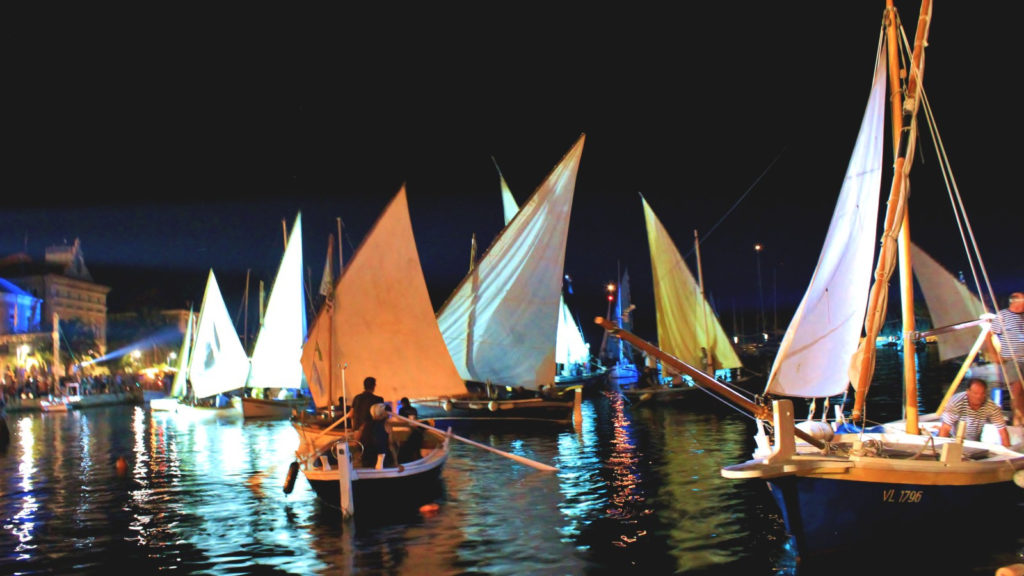
1. ”Dani u
vali” (“Days in the bay”), Stari Grad on Hvar
After this manifestation, an international
festival of the sea and the sailors, was discovered by the press, a story of
about 100 traditional vessels of leut,
gajeta and falkuša type has
reached million people.
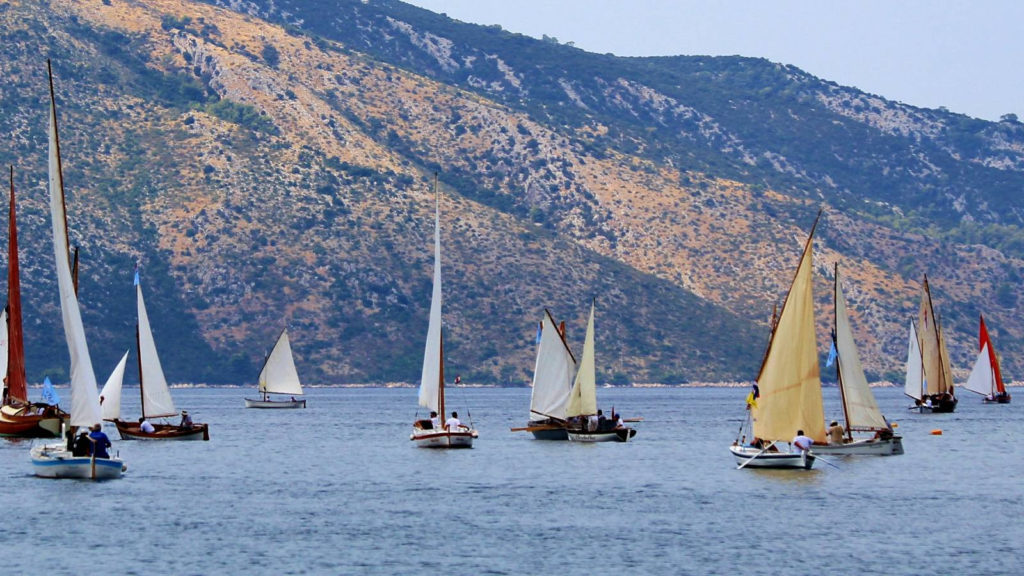
This extraordinary tourist attraction is held every other year. Numerous boats saved from oblivion sailing five nautical miles along the Stari Grad bay is a scene one has to experience in person!

2. Omiš Pirates
It is a
real challenge to meet face to face with disguised ancestors of former Omiš
pirates, who once were the most notorious warriors of the Mediterranean. Irresistibly
attractive is to enter their game, measure swords with them and try to escape
from their captivity. Strong pirates are revived every summer on the shallows
near Omiš, bringing the story of Kačići knights who ruled this heroic town in
12th and 13th century and their 24 years long successful
struggle against the Venetian conquerors.
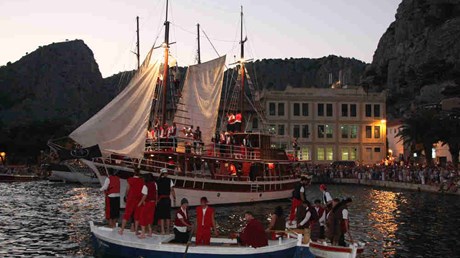
3. Pirate Battle
In encounters with pirate ship called Sagittae Venetians had a lot to deal with. This is demonstrated every summer by the most attractive and the most popular naval battle in Dalmatia, Omiš Pirate Night.
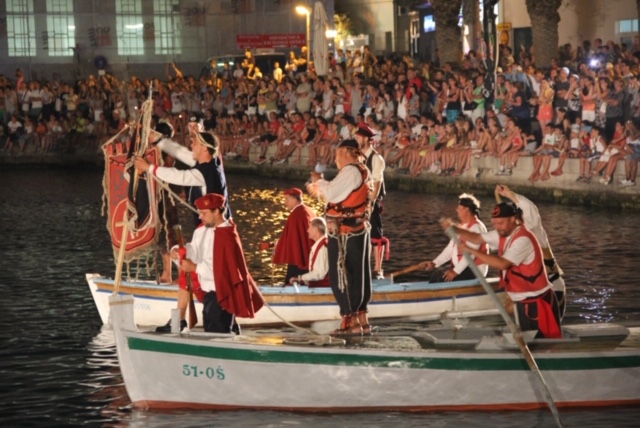
Around hundred costumed heroes participate, tens of thousands of people watch it, and it brings a night full of adrenaline, old battle ships, noise and shooting. And audience ovations, delighted with spectacle under an old pirate base, Omiš fort Mirabela.
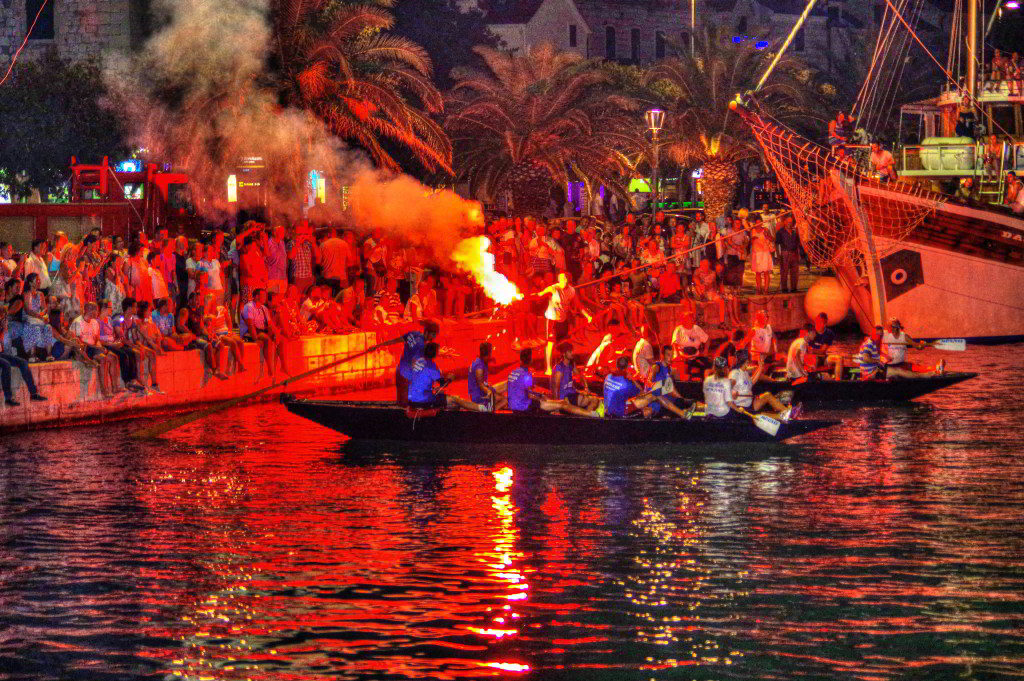
4.Makarska Battle
Battle Mucules
actually evokes warrior heroism of Neretva people over Venetians. It is traditionally
held in Town port on the Day od Croatian Navy. In demonstrating the battle even
150 people participate, delighting thousands of spectators with this war
spectacle.
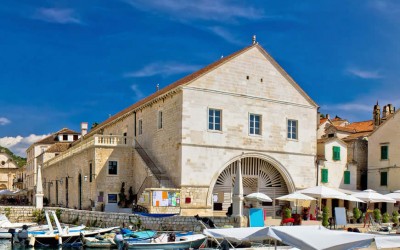
5. Arsenal in
Hvar
Arsenal is
the most recognizable Hvar’s image, formerly used as repairing space for
galleys and a military naval repository. Hvar people think of this tourist
attraction as the most important edifice of their town, who got its present look
in 19th century.
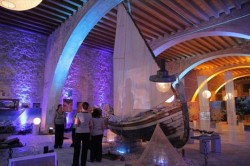
6. Vis Battle
Vis is one the most serious locations for navy battles enthusiasts. They come to this remote island to feel the energy of the archipelago, where on 20 July 1866 a conflict occurred between the fleets of Habsburg Monarchy and Kingdom of Italy.

The clash happened in Vis channel and ended in a defeat of Italian navy. The cause of the conflict was Italian desire to occupy its former territories, lost by Venetians.

More: www.dalmatia.hr
Photo: www.dalmatia.hr, archive of TB of Split Dalmatia county
Visit idyllic Ethno-eco villages of the Split-Dalmatia County
Who is to say that as summer goes on, we have to wrap ourselves in our houses, and wistfully wait for winter to pull out the cold days, until we can again celebrate sprint? No way!
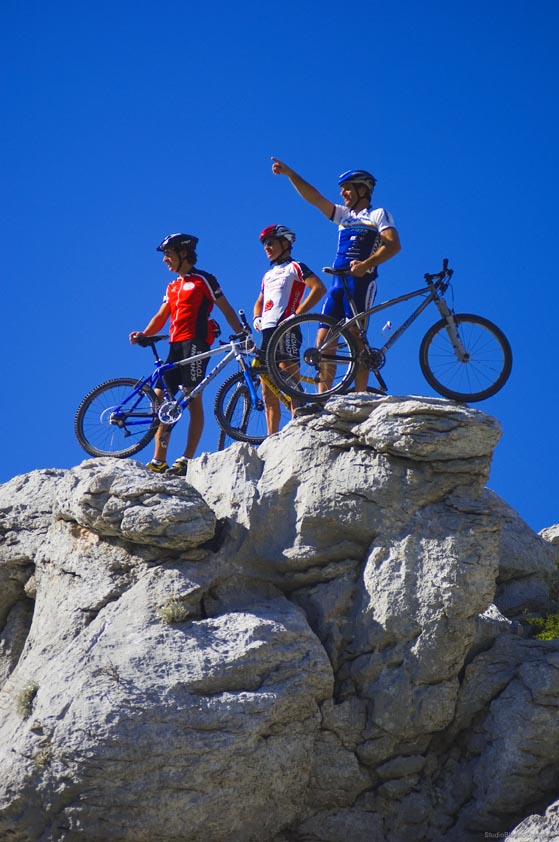
Now starts the perfect period for vacation, as the post-season offers many opportunities, one of them being a tour of the idyllic Ethno-eco villages of the Split-Dalmatia County.
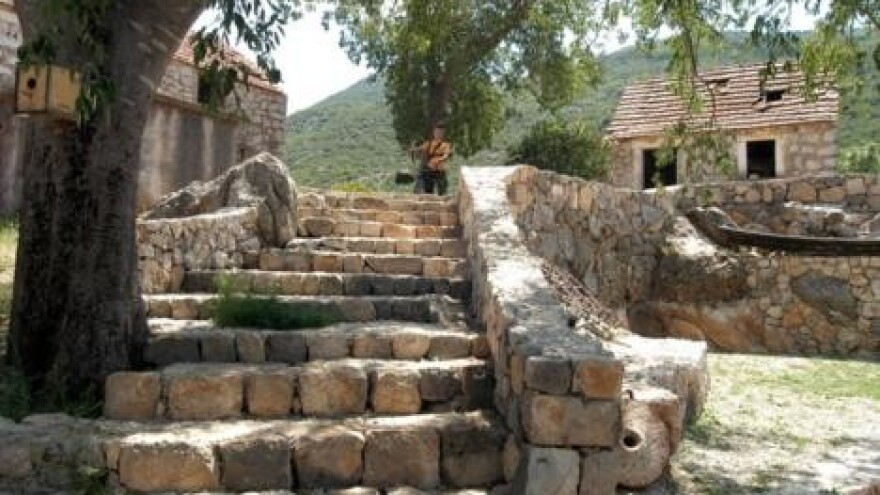
This is a very high-level project, which was initiated by the county 14 years ago, in cooperation with the local self-government units. Through this project, the County invested over 5,600,000 kuna by year 2009, with the aim of developing rural tourism as a new added value in its offer.
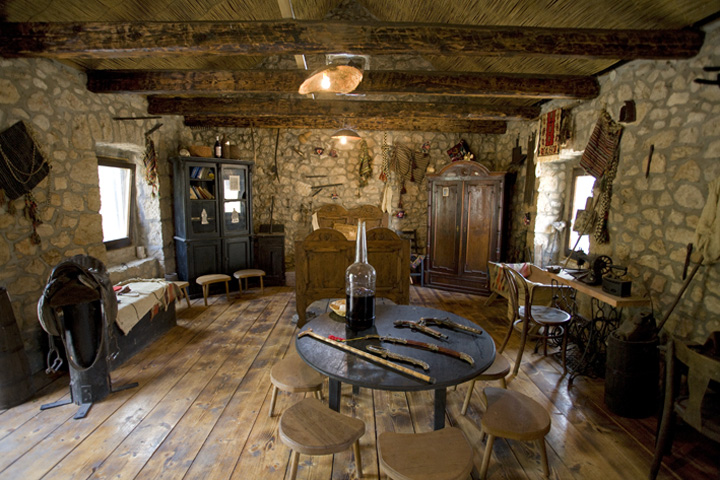
The motive was clear - with this project the County made it possible to stop the trend of bulk-selling of old stone houses, to invite back the people who have migrated from these locations, and to restore life. The project revived the once neglected, empty sites, turning them into excursion locations both for local and foreign tourists.
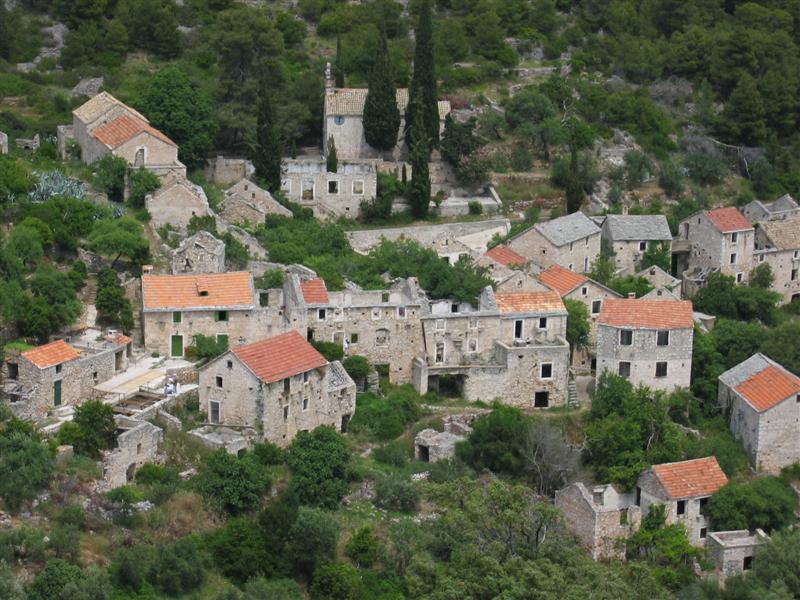
There is no greater beauty than the restored stone, no better views than those of the preserved traditional buildings, the beautiful "solurati", fireplaces and tavern areas, the massive "vacada" stones (cube-carved stones) that guard the faces of former homes, the finely grouted joints, wooden blinds and dry walls.
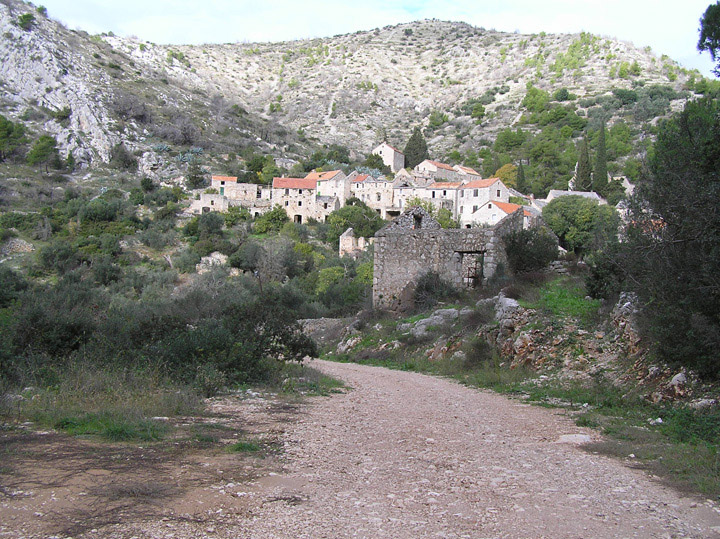
Why are we inviting you to these villages? Because it's time to get to know the magic of our Zagora, and locations int he hearts of our islands, to go out into nature in the time of fall and winter, liberated from loud sounds of murmur, traffic, noise. Why? So you can experience a special kind of entertainment, which will be remembered for many reasons.
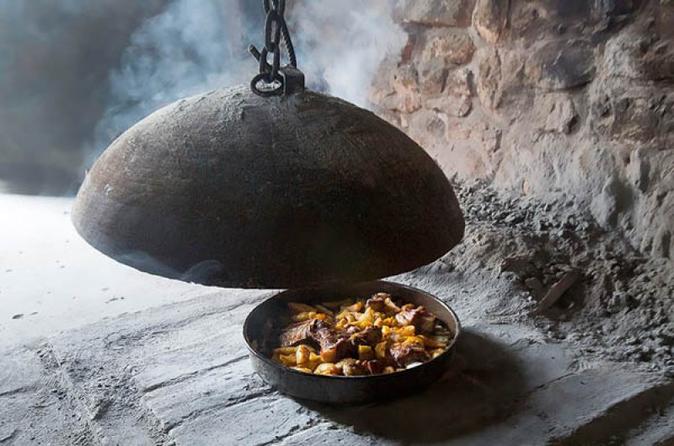
Ethno-eco villages offer many options, they are ideal holiday destinations in the true sense of the word. You will be greeted with warm houses, homes full of massive fragrant woodwork.
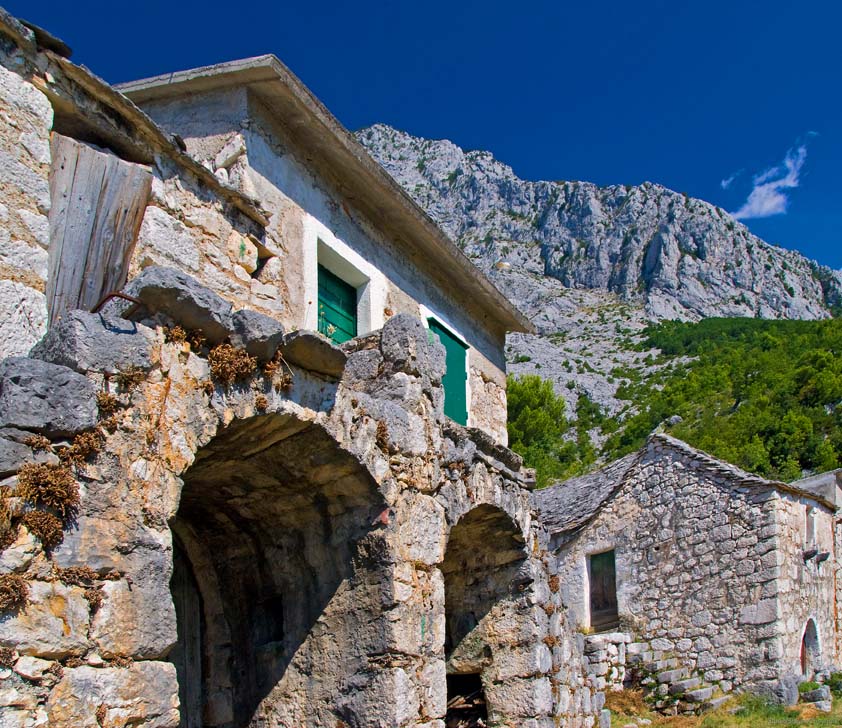
Old red-and-white curtains on small windows, an atmosphere that gives immense tranquility. You will feel the magic of socializing, you will be cycling, hiking, running, mountaineering. If you spend the night, you will get to sleep by the warm fireplaces, and listen to the fire crackling from the old stoves.
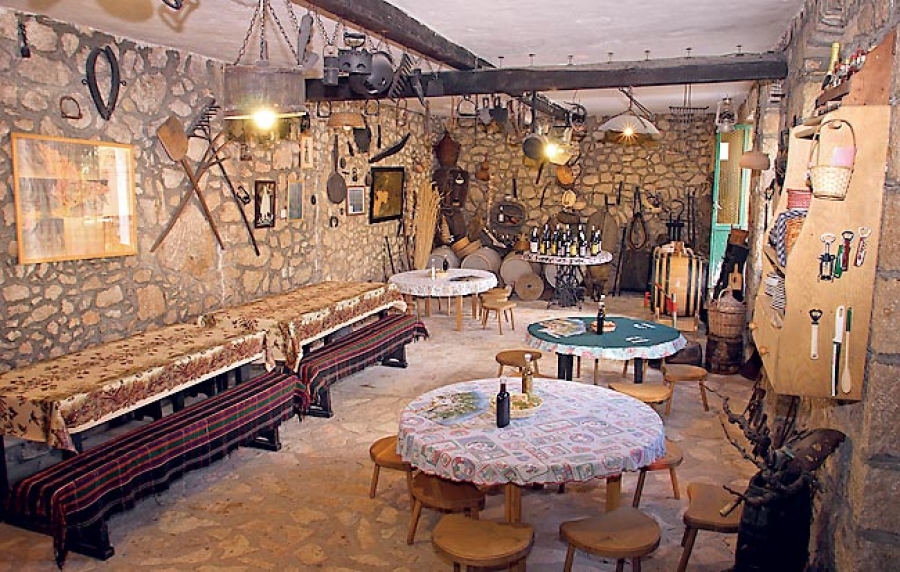
And that's just the beginning. In the morning, your hosts will prepare you breakfast, so different from the standard, grab-a-quick-bite ones. Homemade butter and marmalade, hot bread and cakes, fresh milk. Homemade cold cuts, honey from the hives of local beekeepers. Homemade juices of elderberry, blackberries, cherries.
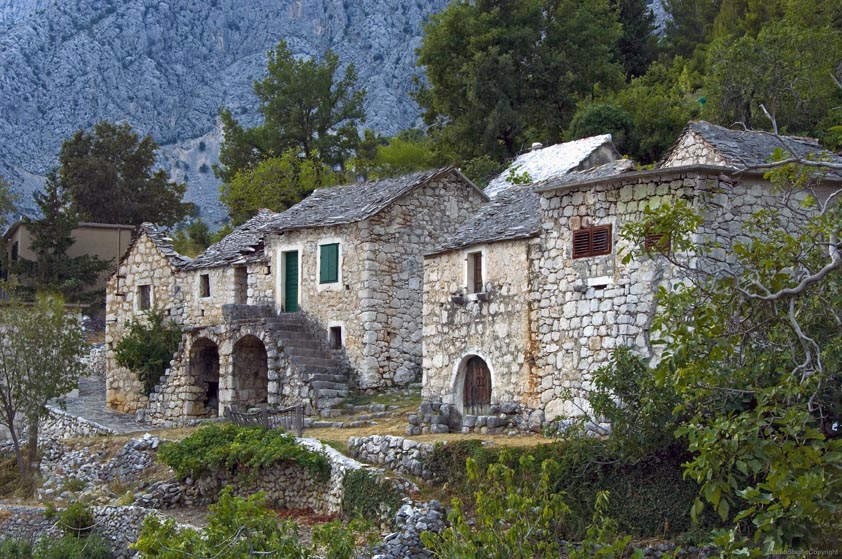
You won't even have a break from the taste explosion, and you'll be in for a fresh new serving of delicacies. What to choose, which one to try? We will not even try to comfort you, the choice won't be easy! And you are not even supposed to be given an easy choice – you must try it all, as these are treasures coming from our fields, from the barns, from the domestic cultivation, from the nearby streams.
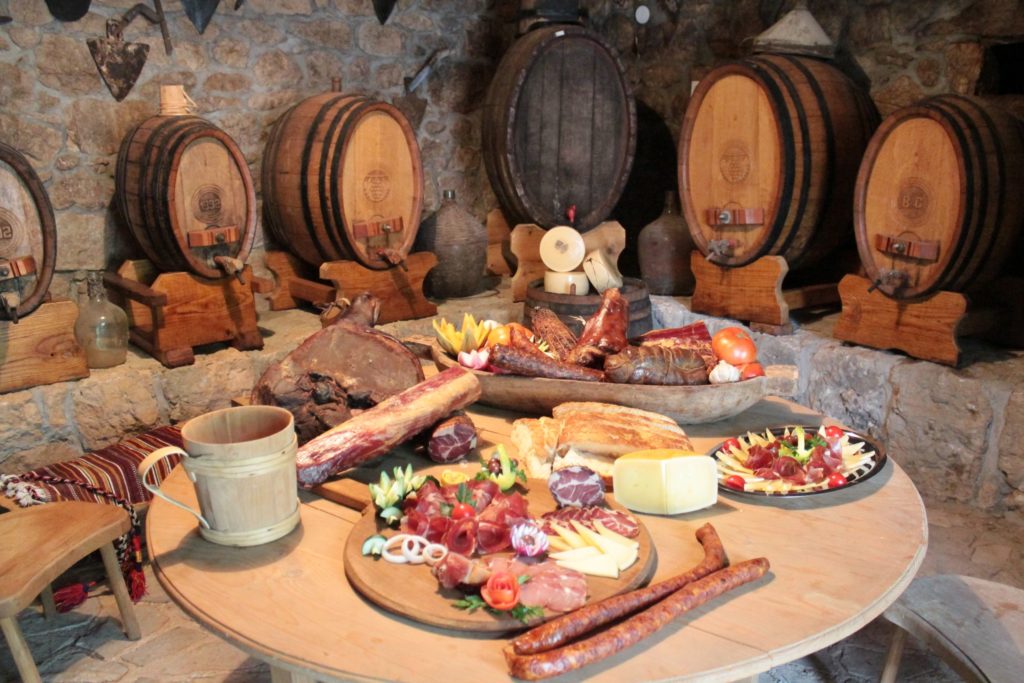
But here, let us give you a small hint – do try the homemade soup, cooked lamb, roasted in a "škrovada" pan, or on a spit, our "vitalac". "Dolce garbo", baked veal, snails and capons, trout and homemade potatoes, prosciutto and herbs-infused cheeses. Homemade desserts and cakes with almonds or walnuts, poppy-seed or walnut rolls ("makovnjača" and "orahnjača") and pancakes stuffed with homemade jam.
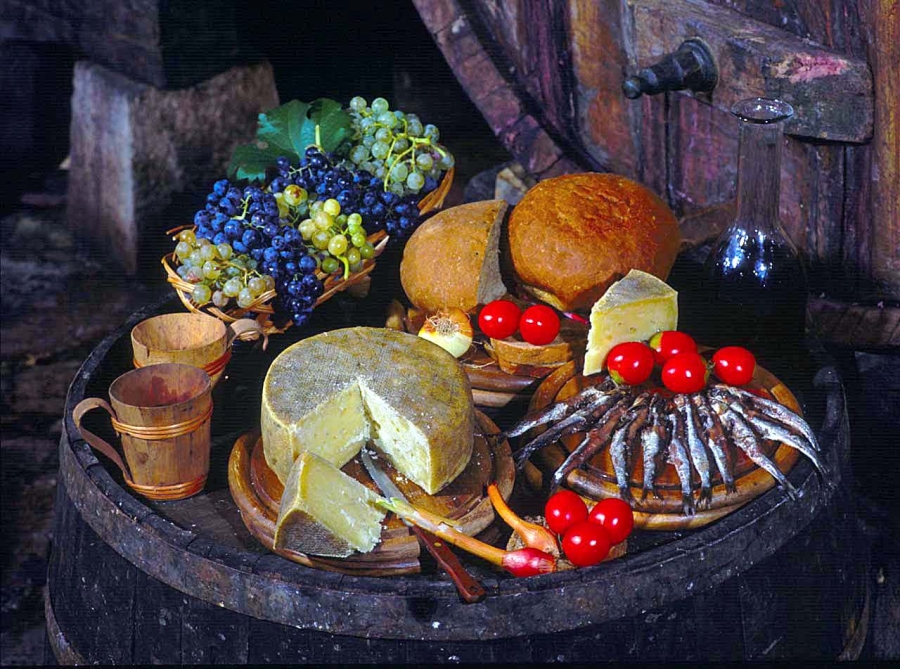
Trust us, you can't have a taste of these kinds of dishes just anywhere, you can only experience something like this in a true home-like environment. In locations that have taken only the best from the present and the past. And they offer it to you with their hearts wide open! So just head to one of the best Ethno-eco villages in Split-Dalmatia County:
- Topići, Topići-Bast (Baška Voda)
- Zorače, Malo Grablje, Velo Grablje, Brusje (Hvar)
- Humac (Jelsa)
- Podhumlje (Komiža)
- Tugare Ume, Čažin Dolac (Omiš)
- Dol (Postira)
- Gornji Proložac Podi (Proložac)
- Blace (Solin)
- Grohote (Šolta)
- Podi Grab Bugar., Gornje Voštane i Grubišići (Trilj)
- Kokorić, Veliki Godinj (Vrgorac)
- Karoglani (Zmijavci)
- Murvica (Bol)
- Gornja Podsrtana, Stara Podstrana (Podstrana)
- Lolić i Mijanovići (Split)
- Brdaci (Zec), Divojveići, Etno eko selo Škopljanci Radošić
- Botić-Opor (Prgomet)
- Naklo-tavnice (Lokvičići)
- Jesenice, Duće (Dugi Rat)
- Mala Rudina (Stari Grad)
- Bekavci Kričar (Brela)
- Rušinovići, Drvenik Veli Kačine (Trogir)
More: www.dalmatia.hr
Photo: www.dalmatia.hr, archive of TB of Split Dalmatia county,

New ‘’Cetina region’’ mobile app brands Sinj and the Cetina region as an unmissable tourist destination
The purpose of the application (app) is to bring the beauty and attractions of the Sinj and Cetina area to the end users, and to present this area as an attractive tourist destination with numerous tourist facilities available throughout the year.
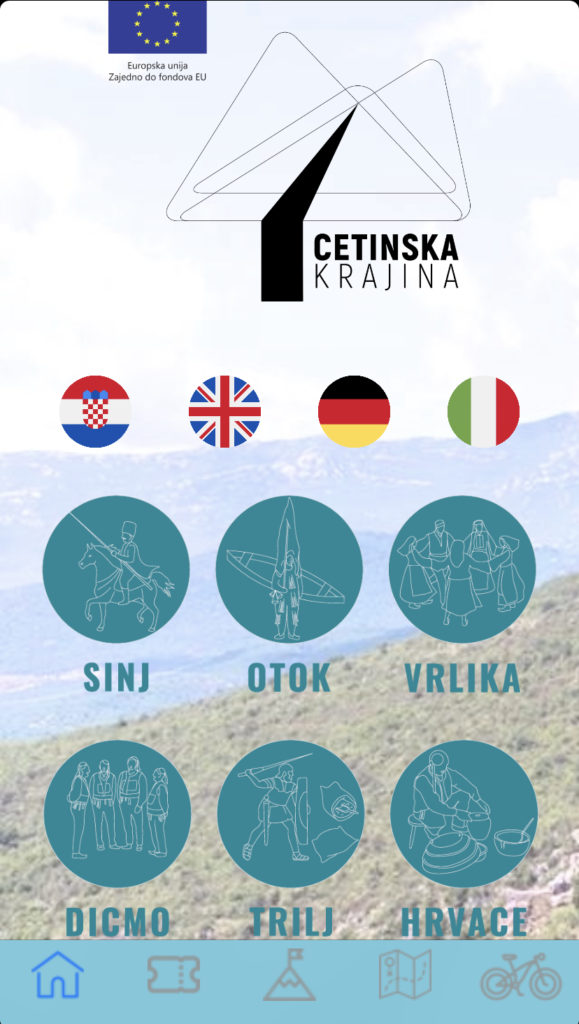
Cetina Krajina (The Cetina Region) is a new mobile application that serves as a guide for visitors to the Cetina region. The application provides an overview and information on activities, events and places to visit and experience in the Cetina region. The presentation of the mobile application will be held on October the 14th, 2019 at a press conference in Sinj, organised by the RERA public institution for the coordination and development of Split-Dalmatia County, a partner of the project "Sinj u sridu", which will also present the other marketing and promotional activities of the project.
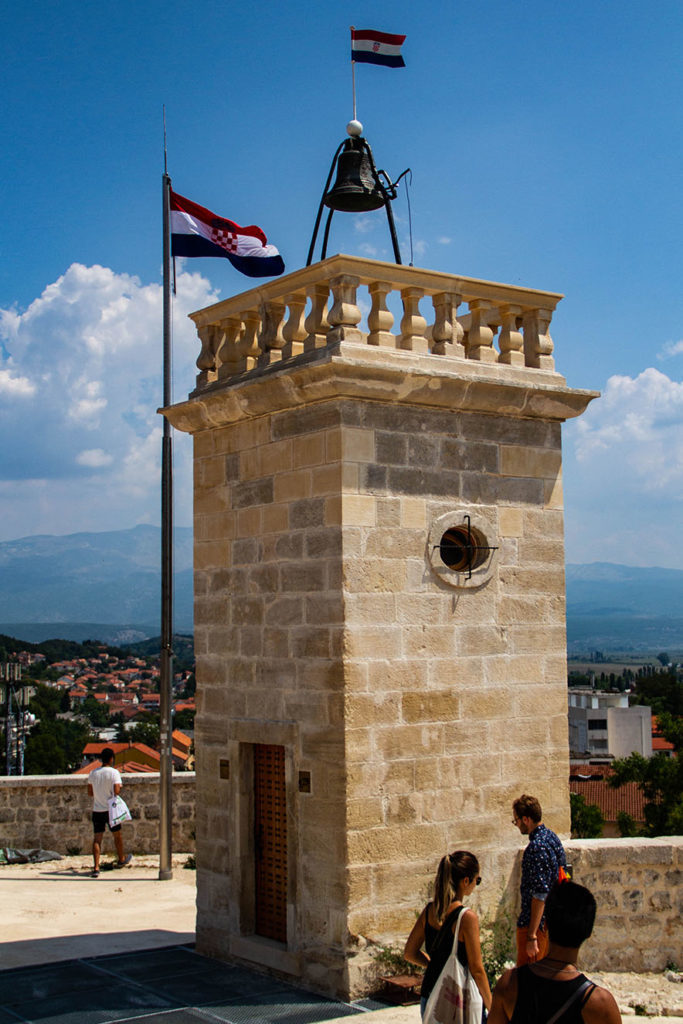
The conference, or rather presentation, is intended for all relevant tourism stakeholders: tourist boards, agencies, the media and all other interested parties, and will be held on Monday, October the 14th, 2019 at 10:00 am at the City Hall, Dragašev prolaz 24, in the Town of Sinj.
The application - a multimedia, interactive guide through the
Cetina region
For those seeking an adrenaline rush, the app offers a detailed view of as many as 19 cycling routes as well as an address book of useful contacts.

Those who want to find out where the natural and cultural heritage of the Cetina Krajina is located can find all of that information by selecting a map with brief descriptions of the site or by downloading a ‘’Guide through the Cetina Region’’ by selecting turquoise circles on the homepage of the application.
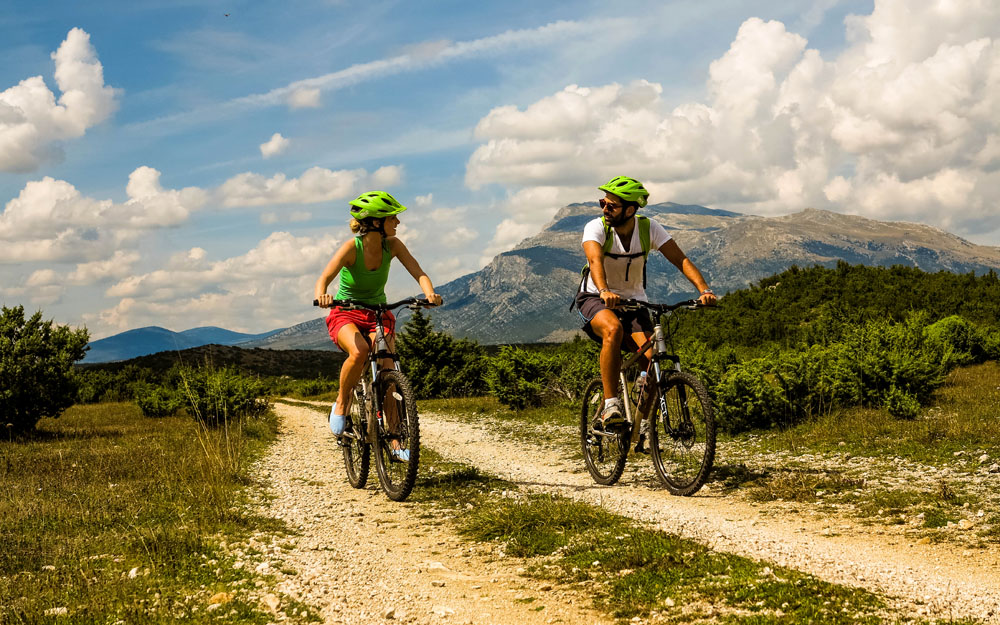
The bicycle routes and natural and cultural heritage are mapped
through Google Earth, so users are provided with directions (navigation) to get
to the desired points on the map. The application works in a way that is fully
customised to the user and their needs.
If you would like to know more about the Cetina region
or the megaproject "Sinj u sridu", visit the website of Cetina region
by clicking the link (www.cetinska-krajina.hr) at the bottom of the application
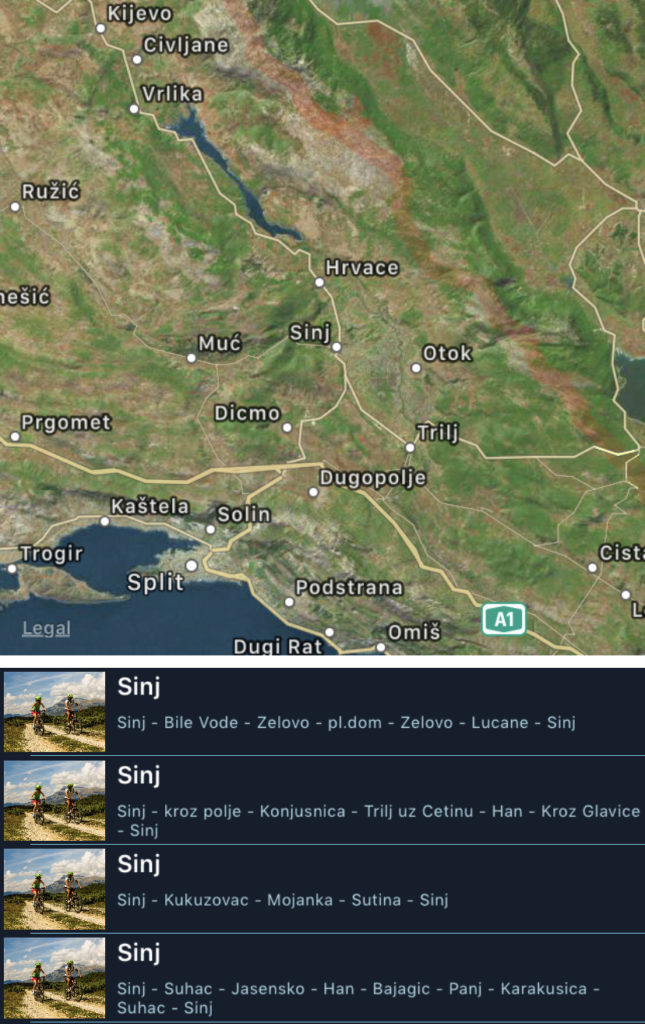
The free Cetina Region app is available for both Android and iOS devices.
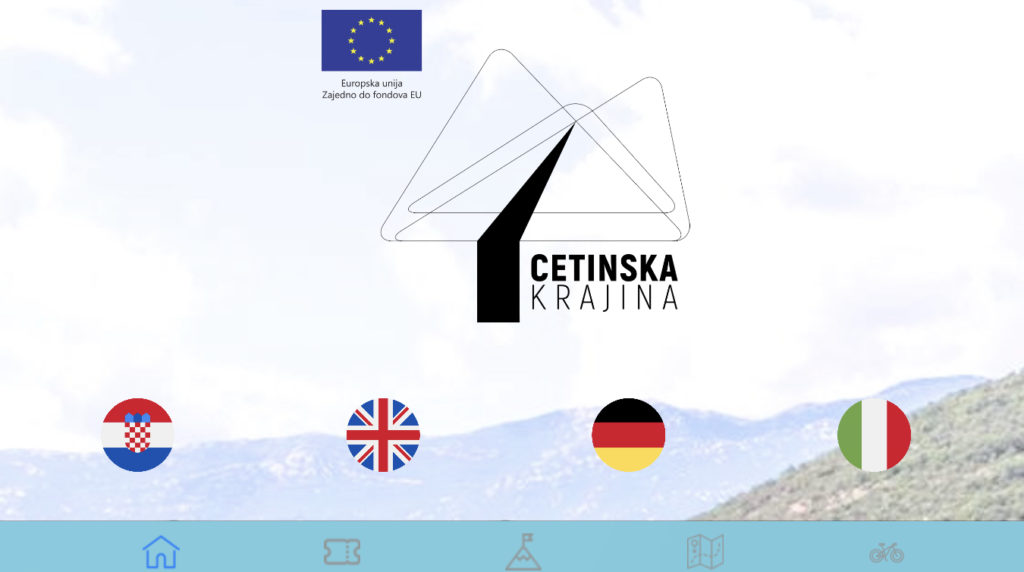
This modern version of the mobile application is the result of the knowledge, efforts and close cooperation of RERA public institution and the digital team of the Sibenik-nased company Kocka d.o.o. and is available in as many as four languages - English, German, French and Croatian.
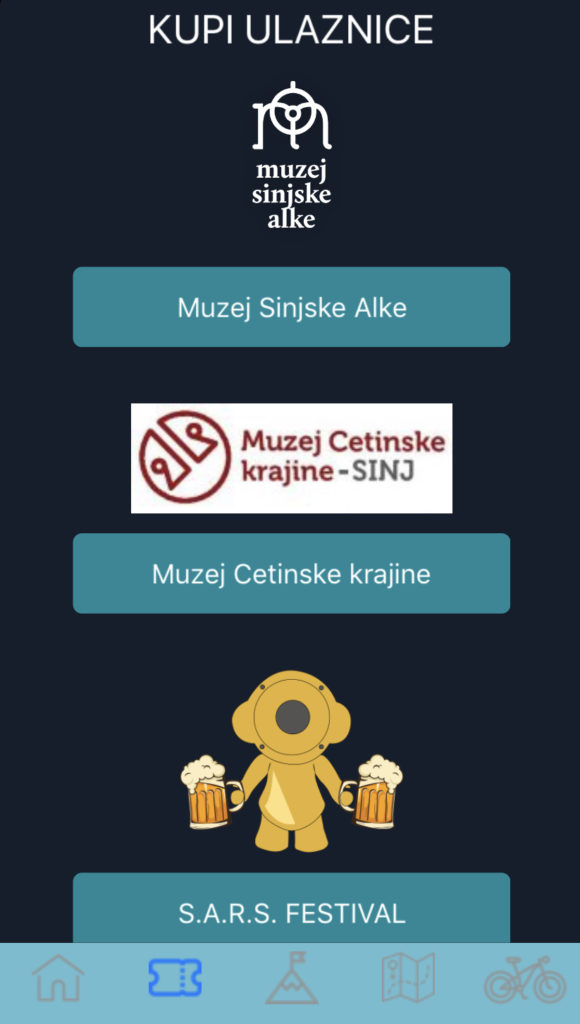
The application can also be accessed via QR codes in the brochure
- guide, website, in-app and at designated locations.
The mobile application is part of the marketing and promotional
activities of the Sinj u sridu project, a project co-financed by the European
Union from the European Regional Development Fund and the Competitiveness and
Cohesion Operational Program, a project aimed at the renewal and glorification
of the unique cultural heritage of the Town of Sinj with a view to its greater
valorisation.
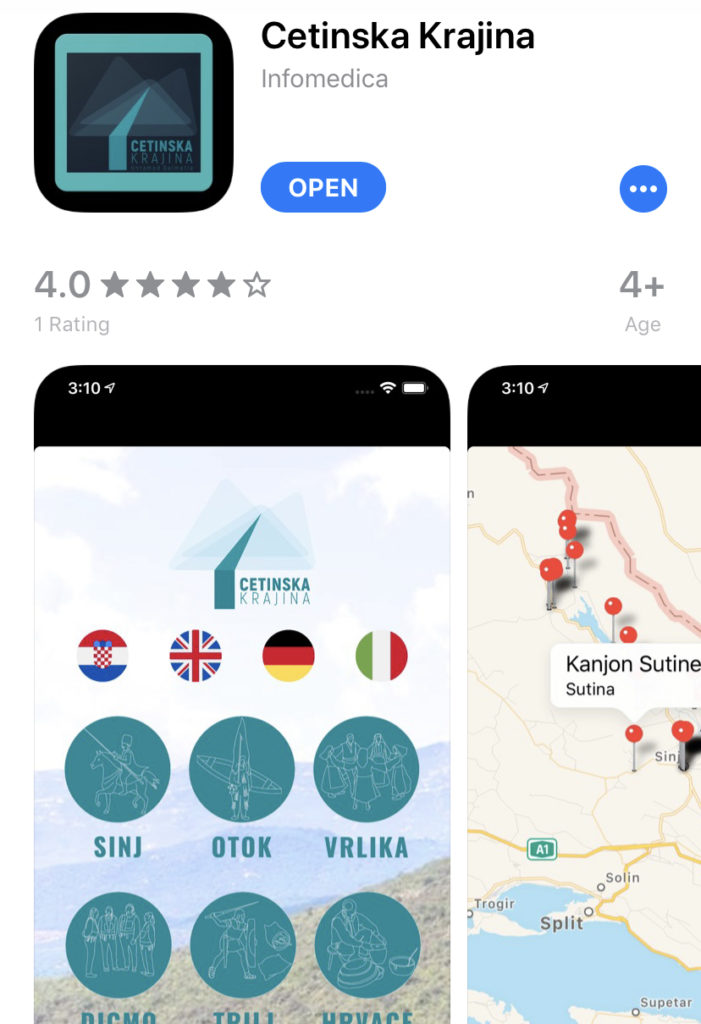
The backbone of the project is made up of the reconstruction, renovation and revitalisation of Sinj’s cultural assets such as Fortress Grad, Fortress Kamičak and the clock tower, the Museum of the Cetina region and the renovation of the streets of the historic town of Sinj as a whole.
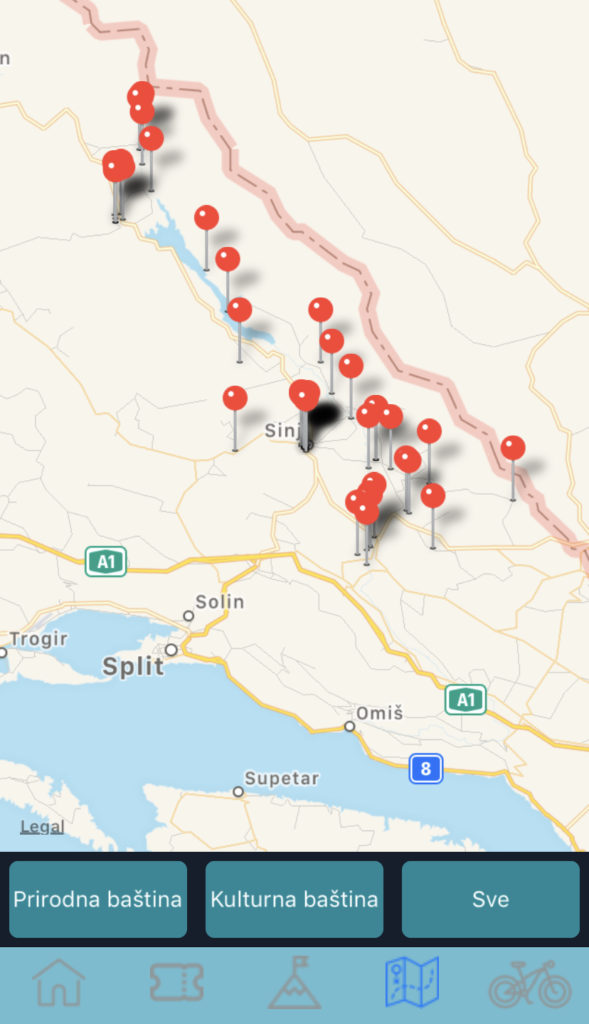
Their renewal and revitalisation will be the basis for the
development of a number of thematically related cultural and tourist content
(festivals, performances, presentations of traditional crafts, souvenirs,
multimedia, and new products, etc.) that will turn Sinj into a tourist
destination which will boast numerous tourist facilities throughout the entire
year.
In addition to the Town of Sinj, five project partners relevant
to the social and economic development of the region and the management of
cultural heritage are involved, namely the Tourist Board of the City of Sinj,
the Alka Knights Association of Sinj, the Museum of the Cetina Region of Sinj,
the Public Institution RERA S.D. for the Coordination and Development of the
County of Split-Dalmatia and the Production Plant FLORAMI, Sinj.
The total value of the project “Sinj u sridu” amounts to HRK
66,594,231.17, of which the European Union grant totals HRK 55,597,793.26.
Want to find out more? Visit: www.cetinska-krajina.hr
The project “Sinj u sridu” was co-financed by the European Union from the European Regional Development Fund and the Operational Program Competitiveness and Cohesion.
Content of promotional article is sole responsibility of JU RERA for coordination and development of Split-Dalmatia County and under no circumstances does it reflect the attitude of the EU and/or the governing body.
For more information visit www.strukturnifondovi.hr

Museums and galleries of Cetina region
There are so many reasons to love, even adore the Cetina region! For some it is Our Great Lady festivity in Sinj, while others are enchanted with miraculous Alka, visited by more and more people every summer.
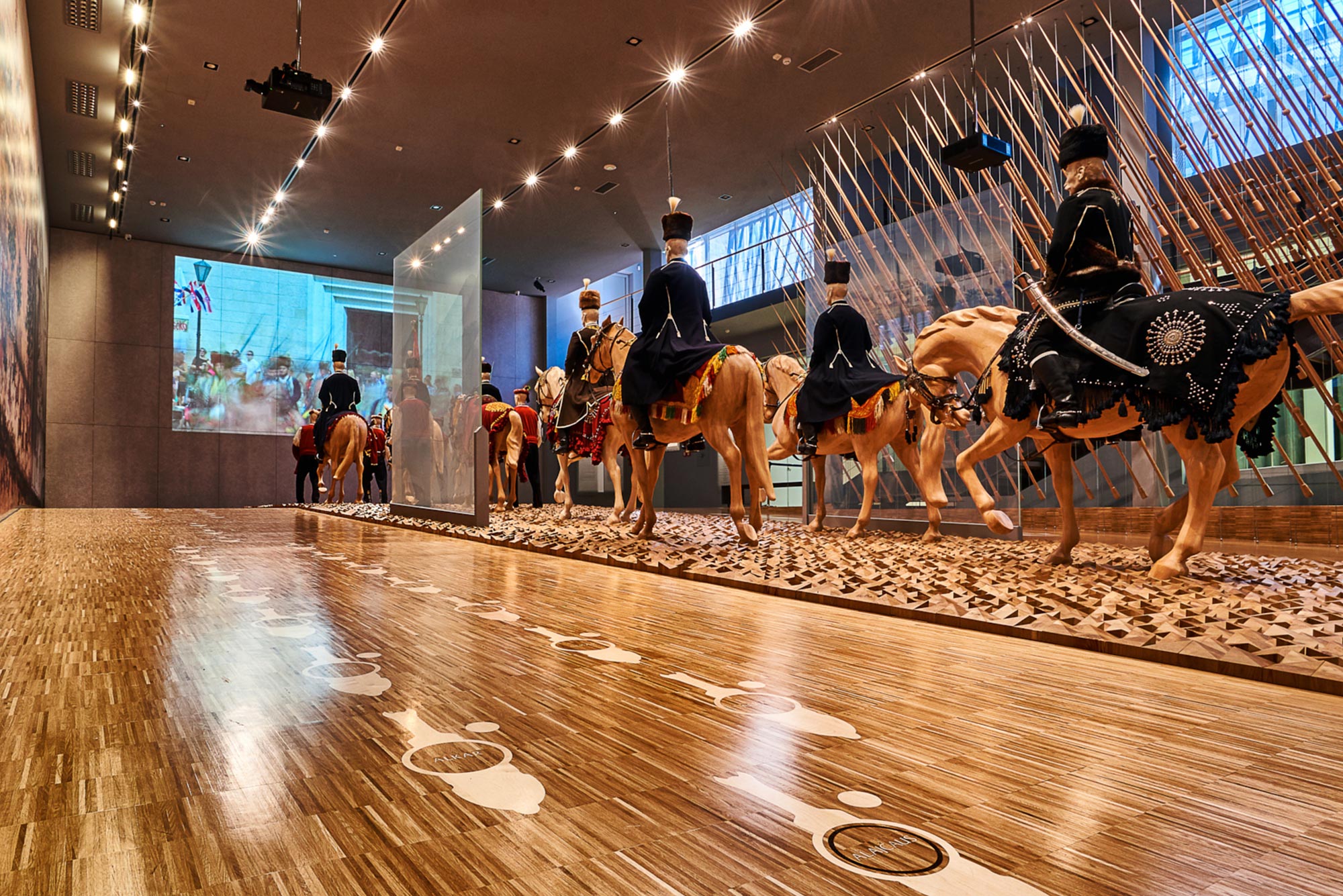
Gourmet's main reason could be Sinj's arambašići simmering in a pot with delicious bacon or tasty frog legs grilled in idyllic ambience of mystique and intriguing Trilj; or even hot delicious doughnuts from Vrlika. Those of more adventurous spirit may be drawn to this region by Cetina's rapids and its amazing blue eye over which you can practice adrenaline stunts to impress those less daring, with for example highline. Whatever it is you like about the Cetina region, we're sure you have good reason for it, but take our advice and sneak a peek into its museums – treasuries of history and culture. We're sure you'll love it even more!

CAN'T DO WITHOUT ALKA. To start this text in solemn and glorious way, it is enough to mention famous Alka, and its museum which you should look for in – Alka courtyard!
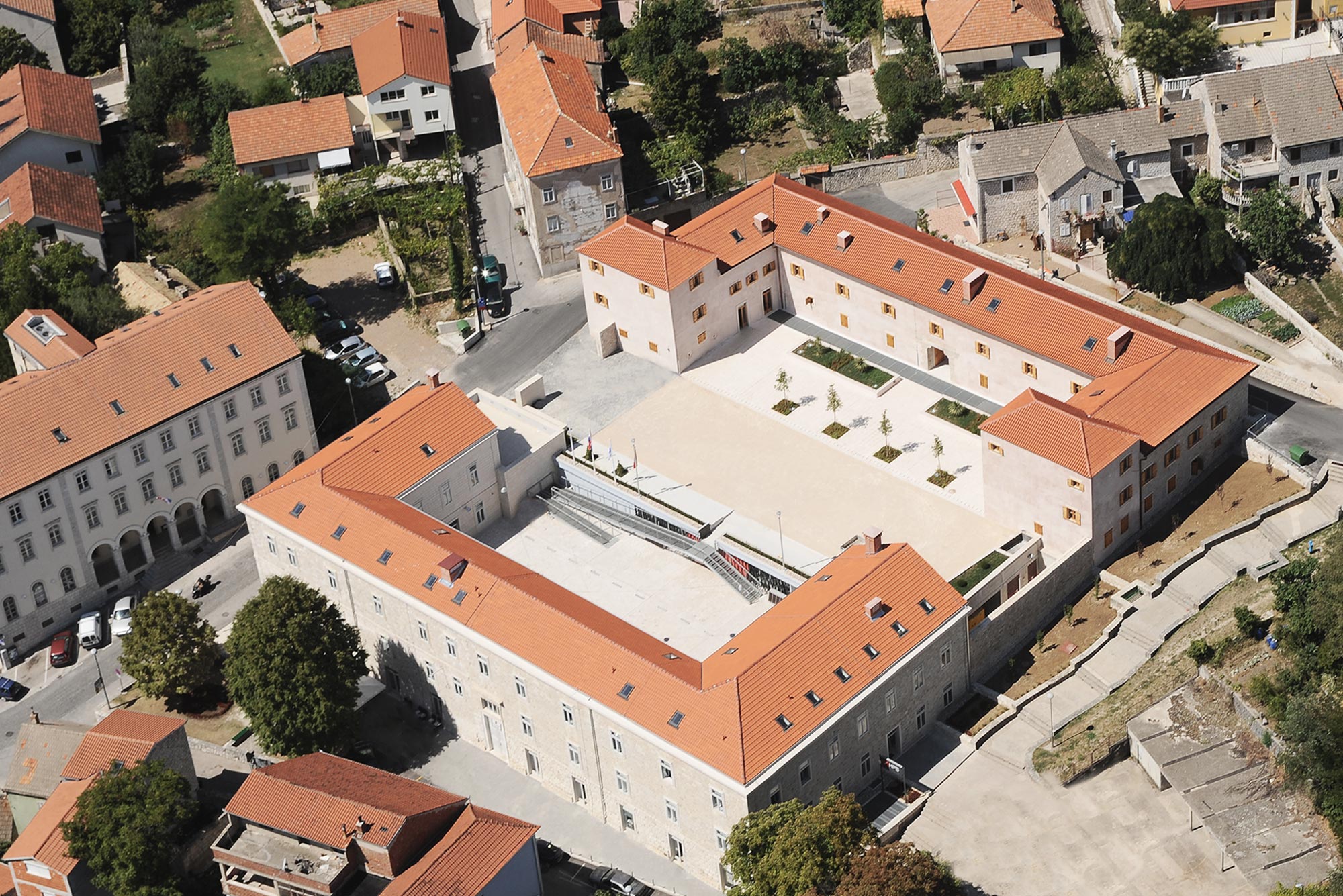
Alka courtyard with the Alka museum are located in one of rarely preserved Venetian kvartirs (barracks to accommodate the cavalry) in Dalmatia, so the very location is in its way sensational.

Museum, which gave this incredible knight’s game new presentational form, is an excellent blend of tradition and modern - do not miss to delve into a story of Alka told by the most contemporary equipment, thanks to which you can have a try at the game yourselves, fight with the Ottomans, see digitalizes archive documents and video materials of all winners from 1784 till today!

IN MONUMENT BUILDING PALACINA, which is a part of historical complex nearby Kamičak fort, another edifice worth visiting is located – the Museum of the Cetina region!

Culture enthusiasts will be enchanted with even 12 different museum collections, whose beauty is impossible to describe: archaeological, cultural-historical, ethnographical and natural history collections, as well as arms collection; orders, medals and plaques collection, collection of photographies and photographic equipment, document collection, poster collection, postcard collection.

There is even a collection which presents works of the 20th century Cetina region artists, so it is truly one comprehensive object, make sure not to miss it!
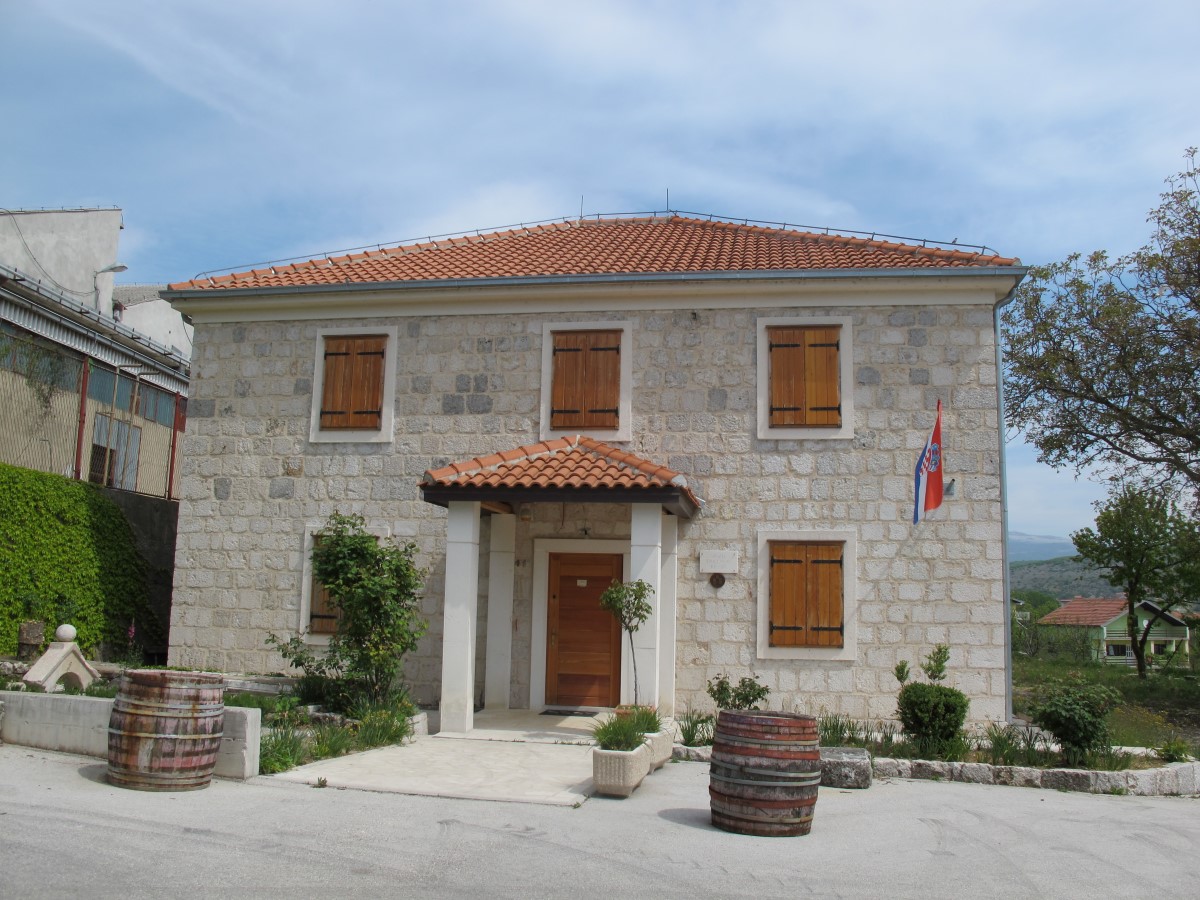
ONE OF THE YOUNGEST CROATIAN MUSEUMS is Trilj Region Museum, located since 1996 in adapted parish church. Main task of this museum is to present cultural heritage of Trilj through archaeological, ethnographical, cultural-historical and numismatic collection.
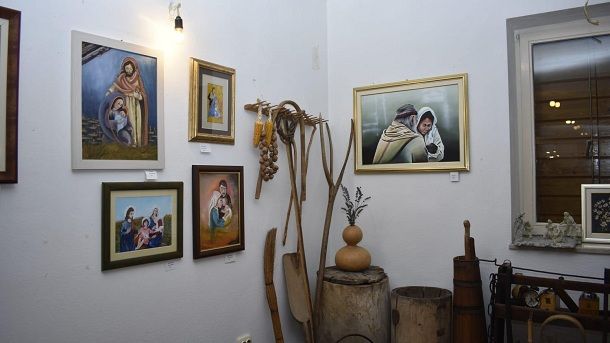
Visit this museum and see permanent collection ''Tilurij – Roman military camp'' and get a closer look of Roman legionary camp Tilurij in Gardun village near Trilj.
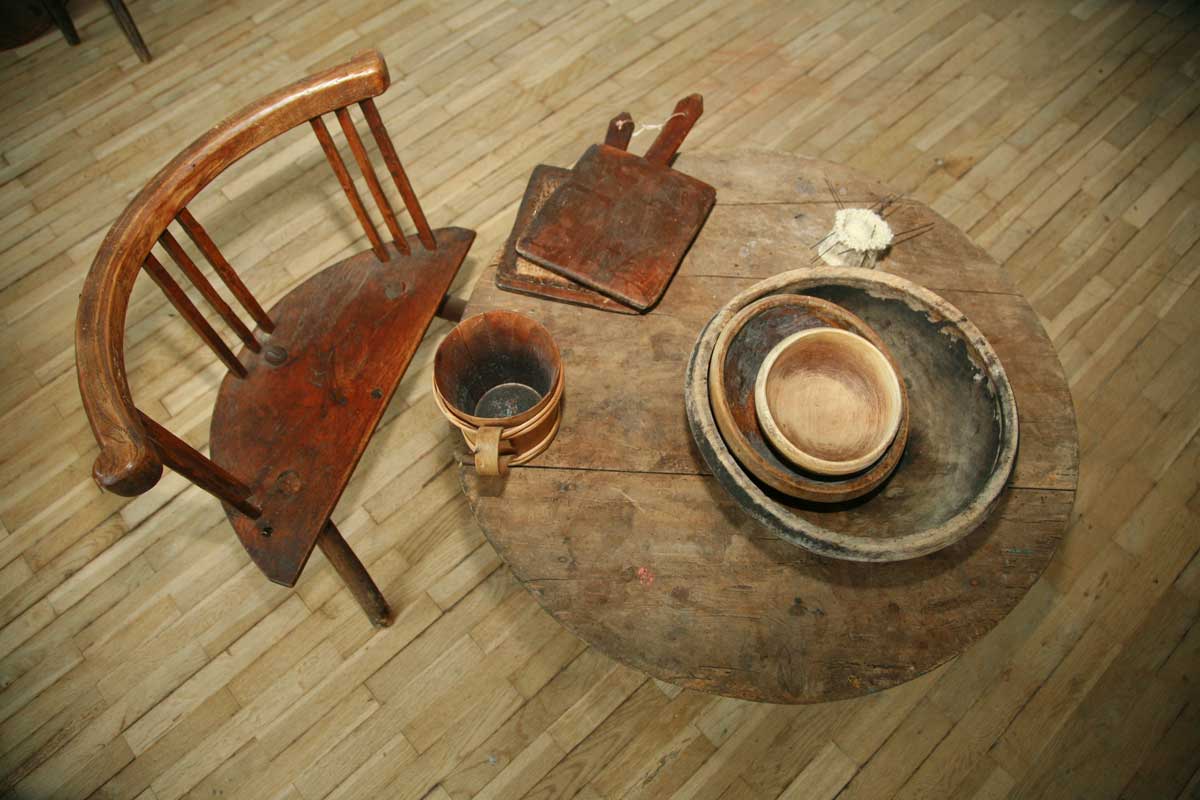
If you want to know more about traditional everyday life of Trilj region inhabitants from late 19th and early 20th century, a real treat will be its ethnographic collection!
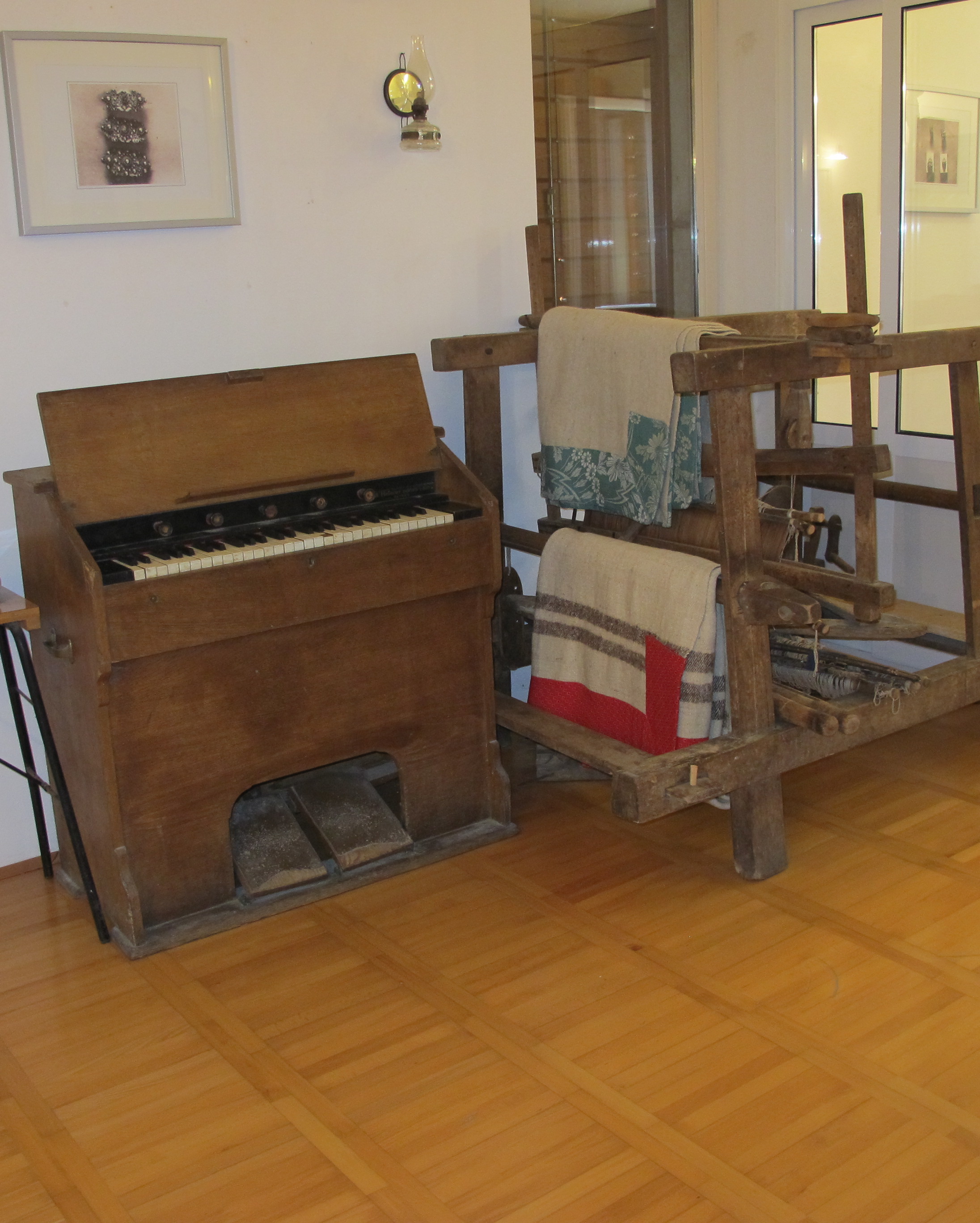
SIKIRICA GALLERY IN ITS FUNDUS HAS OVER 500 WORKS. Author Stipe Sikirica has always been especially close to Alka. The gallery is located in Alka courtyard. .

It bears the name of academic sculptor who donated his entire work to Sinj town. Sikirica is a sculptor of Sinj, the Cetina region and Alka. His public monuments are centres of town's public life.

Apart from public sculpture of the horse-rider on Alka's runway, Sikirica is also an author of a fountain On the Spring and doors of church of Our Miraculous Lady of Sinj.

GALIOTOVIĆ GALLERY IS A CULTURAL CENTRE OF Sinj people and their guests. It was opened in August 1999. Tt bears the name of its donator Iva Galiotović, who donated her life savings for its building. In the gallery there have been over 50 exhibitions so far. Great names of Croatian art had their exhibitions there, same as numerous Sinj artists. Galiotović gallery is also a place for classical music concerts, various workshops ad gatherings. It is located in three-story building on Alka runway.

ARCHAEOLOGICAL COLLECTION OF FRANCISCAN MONASTERY IS ONE OF THE OLDEST AND WORTHIEST IN CROATIA. THE REASON FOR ITS FOUNDING WAS A FACT THAT IN Sinj and its region many archaeological monuments were discovered. Objects in this collection do not come from systematic excavations but are mostly found by chance thanks to hardworking monks and people's willingness to preserve historical monuments. It is most famous for findings from archaeological site Aequuma near Sinj, today's village Čitluk.

DO NOT FORGET CULTURAL TREASURES – IN THE OPEN! Although museums are a true delicacy for culture enthusiasts, it would be a shame to visit the Cetina region and not to see other worthy monuments of cultural heritage that are like museums in the open!

Get inspired and look for sculpture Newlyweds, statue of St. Michael, a monument to the Cetina river, Trilj's Old bridge…or some incredible examples of sacral heritage, like impressive church of St. Spas near the Cetina spring – it is not only one of the most significant pre-Romanesque buildings in Croatia, but the one that takes a special place in European pre-Romanesque period!
Want to find out more? Visit: www.cetinska-krajina.hr
The project “Sinj u sridu” was co-financed by the European Union from the European Regional Development Fund and the Operational Program Competitiveness and Cohesion.
The content of this article is responsibility of the RERA public institution for the coordination and development of Split-Dalmatia County, and doesn’t reflects the position of the European Union and / or the Managing Authority.

Photo: TB Trilj, TB Sinj, TB Vrlika, Adventure Dalmatia

The newly-renovated Palace Elisabeth Hotel on Hvar - the first five-star hotel on the island - officially opens
The history of the oldest Hvar hotel and Empress Sisi were the
inspiration, motive and inspiration behind the hotel's grand opening. The hotel
has been rebuilt and redesigned with a new face and raised the quality scale
that guests expect when on Hvar.
The opening ceremony of the newly renovated Palace Elisabeth
Hotel was held on Hvar on Saturday, September the 21st, 2019.
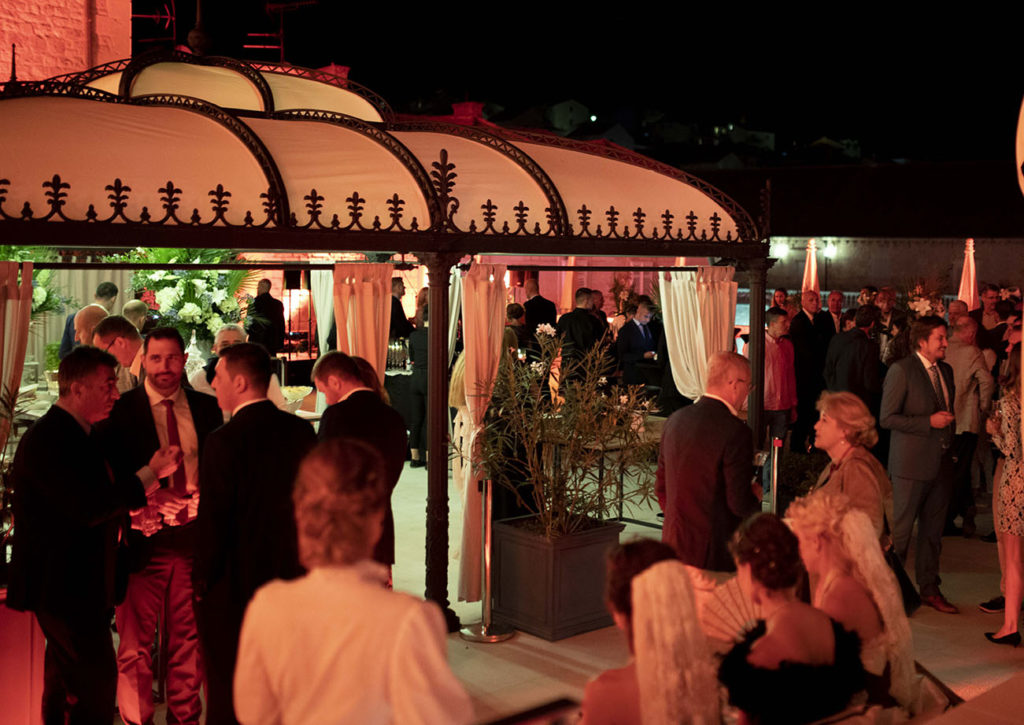
The first 5 star hotel
on Hvar
As one of the most beautiful buildings in this area, in
addition to the city Loggia, the Palace Elisabeth Hotel is considered one of
the symbols of the city of Hvar. It consists of 45 luxury rooms and suites of a
larger size, an indoor pool, a luxury spa and two outdoor terraces.

The hotel exudes elegance and promotes all the best of the
city, it has always been a favourite meeting place of Hvar locals and guests.
Therefore, a visit to the city of Hvar is not complete unless you have a cup of
coffee on the terrace of the Palace Elisabeth Hotel, because there are few
places where you can enjoy such a beautiful view of Hvar's historic centre, the
market, the waterfront, the Arsenal, the Pakleni islands and the city’s port.
The hotel was opened with the attention of the social elite and the world’s media
The opening ceremony was dealt with by Marie Vitek, the wife of
Radovan Vitek, the owner of Sunčani Hvar.
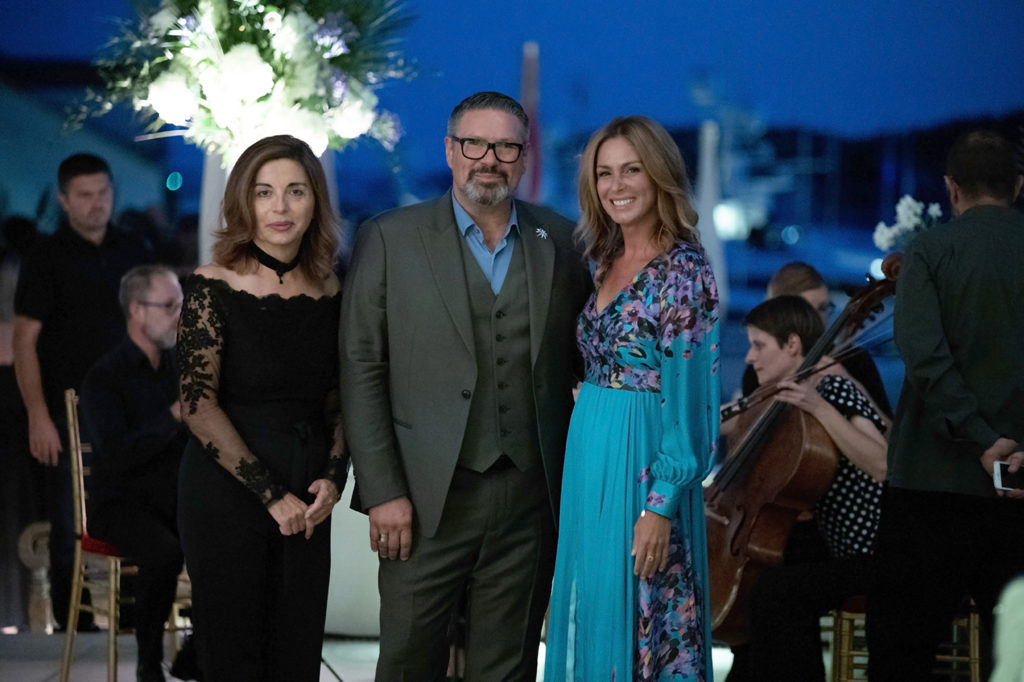
Speeches were delivered by Gordana Tomičić, CEO of Sunčani Hvar, Tourism Minister Gari Cappelli and Martin Nemeček, CEO of the CPI Group.
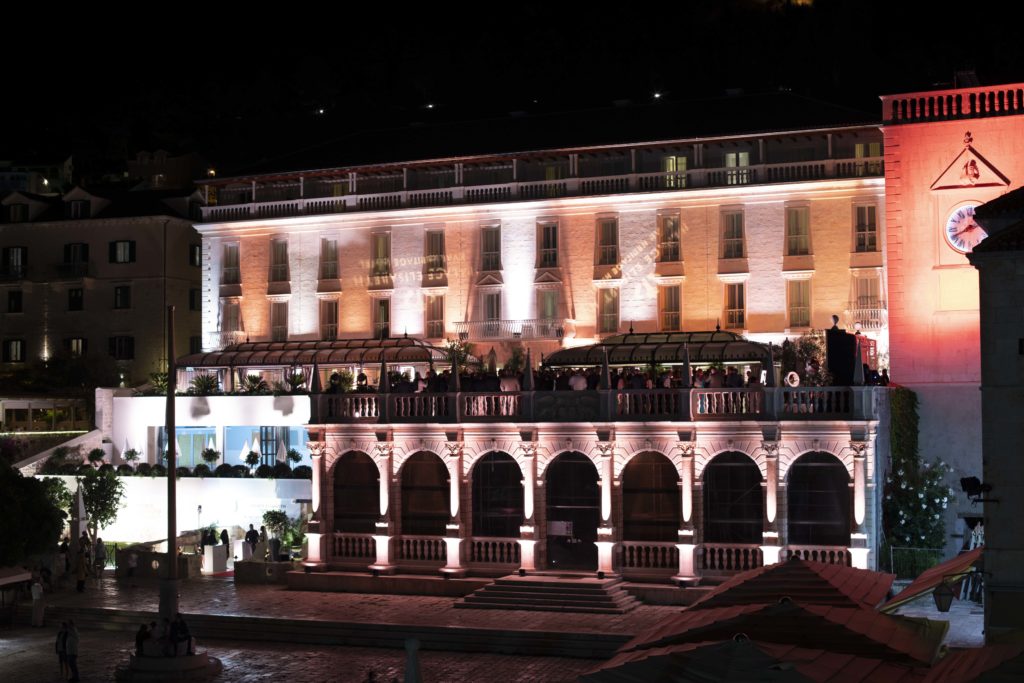
"The opening of the Palace Elisabeth Hotel further elevates the existing offer [of Hvar] to a higher level and at the same time contributes to the attractiveness of a destination that offers high quality holidays in all segments," said Management Board President Gordana Tomičić.
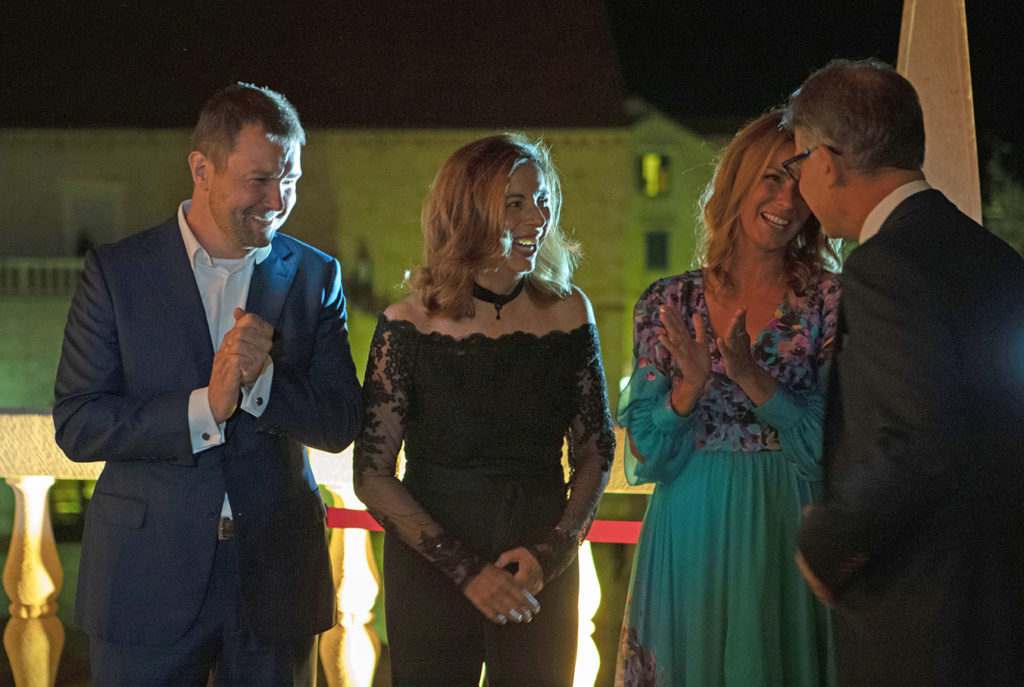
PThe history of the Palace Elisabeth Hotel dates back to the 13th century. In 1898, the hotel was rebuilt and named Spa Hotel Empress Elisabeth, after the Austrian Empress Sisi who was a generous sponsor of its construction.
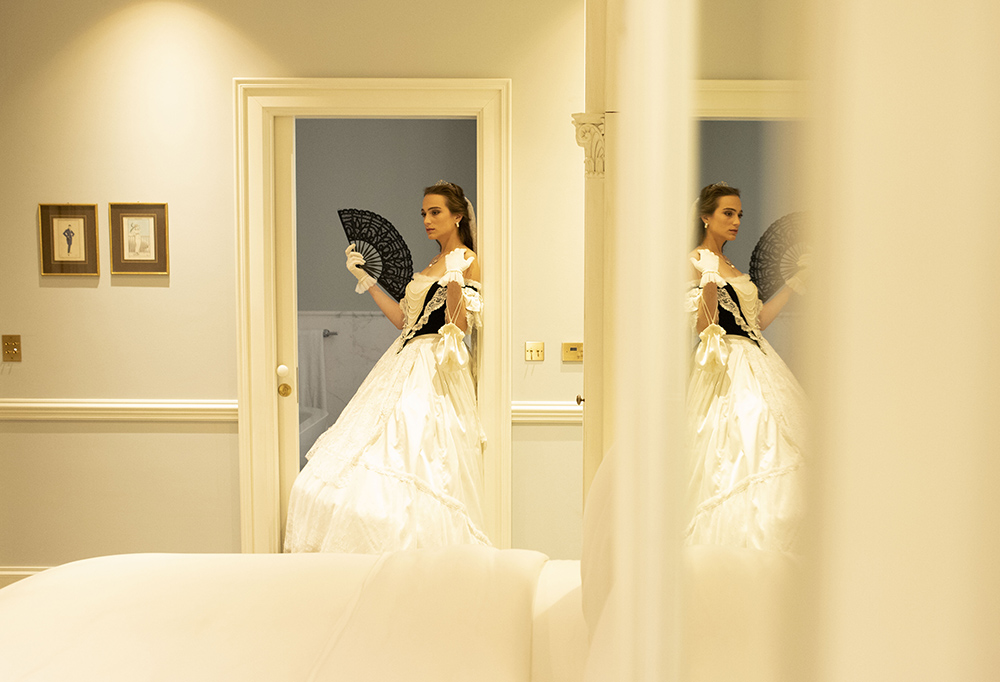
The history of this oldest Hvar hotel and the Empress Sisi were the inspiration, motive and inspiration of the opening ceremony of the hotel.
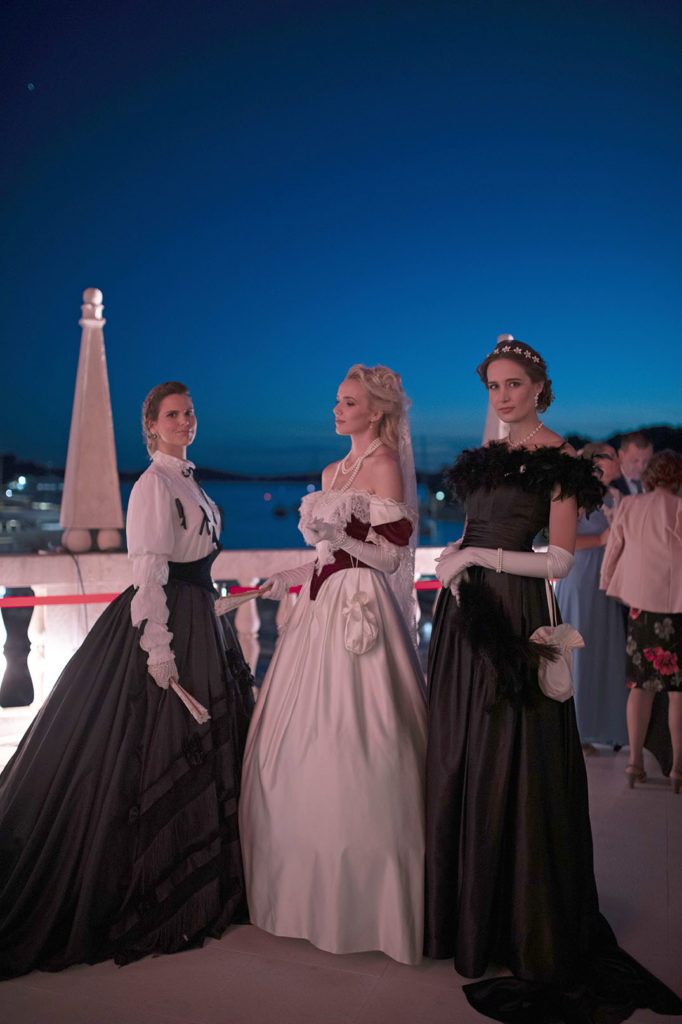
Thanks to an investment from the Sunčani Hvar tourist group, of HRK 100 million, Palace Elisabeth has become the first five-star hotel on the island, and a member of the elite hotel association of luxury hotels, ‘’The Leading Hotels of the World’’.
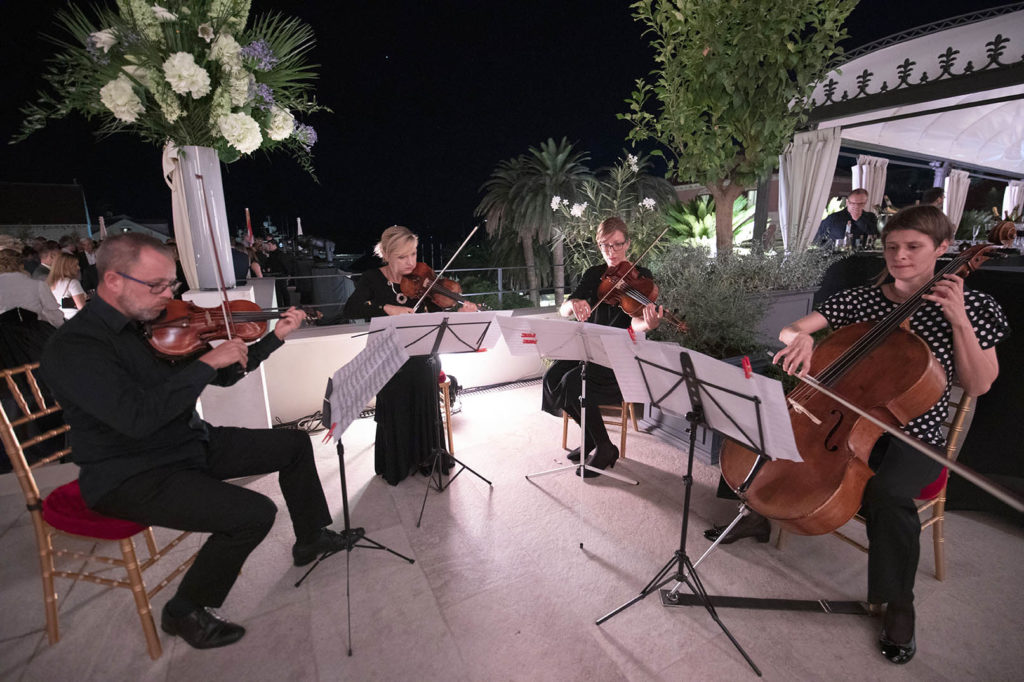
To be more specific, there was an investment of €300,000 per room, which is one of the largest investments in the Croatian hotel industry.
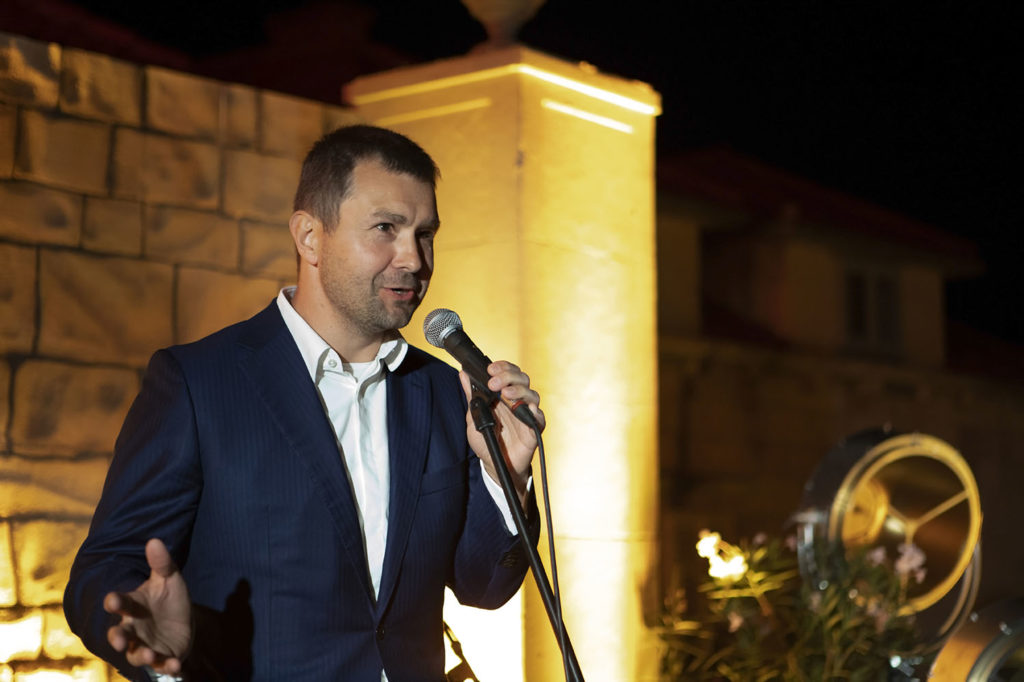
"Of all the facilities we have, the Palace Elisabeth Hotel is special. This was not an easy project to realise as it had to be handled with special care given its cultural heritage. We plan to invest in other Sunčani Hvar facilities,’’ said Martin Nemeček, the CEO of the CPI Group.
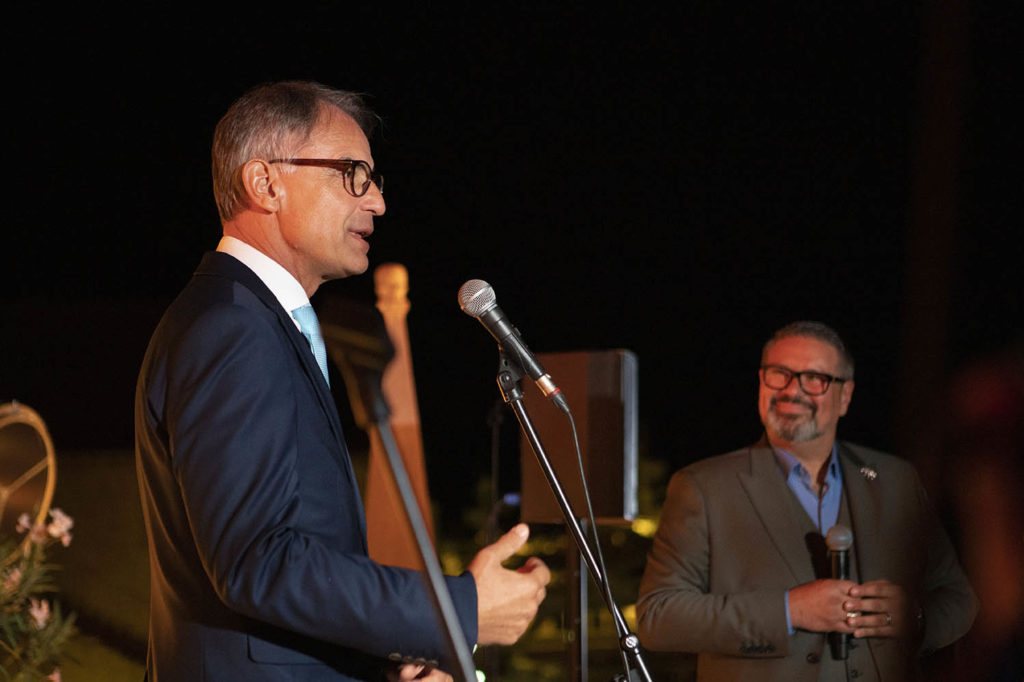
In addition to local journalists, many international journalists attended the opening ceremony. There were reporters from the New York Times, Robb Report, Vogue, National Geographic, Conde Nast Traveler and Architectural Digest, who enthusiastically followed the event.

Along with a number of distinguished guests, the opening ceremony was attended by Minister of Tourism, Gari Cappelli, State Secretary of the Ministry of Tourism, Tonči Glavina, Director of the Tourist Board of Split-Dalmatia County, Joško Stella, and the Mayor of the City of Hvar, Rikardo Novak.
More: www.suncanihvar.com
Discover the ethno - eco village Dol - The stronghold of Brač’s heritage and tradition
A visit to Brač, our largest island, is always intriguing, interesting, and many would say - delicious!
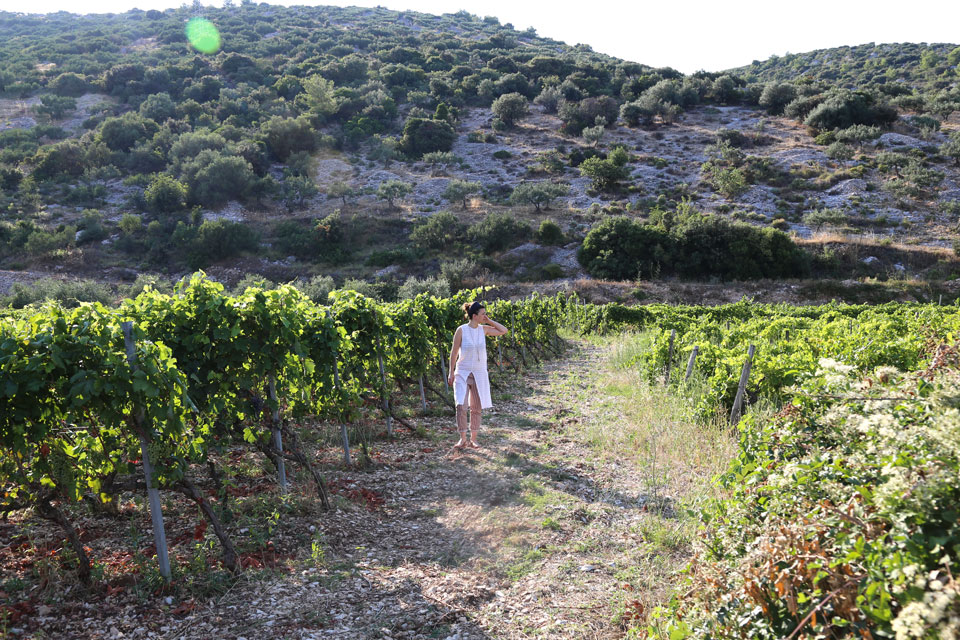
This is especially true of the charming ethno-eco village of Dol, which seems to have united the best of the island - it is a true stronghold of Brač's heritage and traditions!

Therefore, whether it’s Brač gastronomy that you love, or its cycling and hiking possibilities along well-maintained trails in an authentic island setting, doing a bit of sightseeing of the original architecture and picturesque cultural heritage, or looking for great insights into this island’s delights, here are three great reasons why you should include Dol in your itinerary.

1. It wins you over at
first glance with its architecture and culture!
Dol is an oasis of peace and tranquility, just 2 kilometers
from Postira, where the houses traditionally covered with stone slabs will leave
you breathless at the very entrance - just like the marvelous, grainy caves
made from hrapoćuša stone.

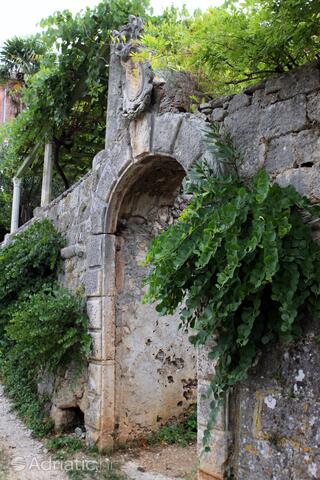
These caves used to be human dwellings and the basis for later upgraded houses, but today they are shelters for cattle, pigeons, owls and even the alleged mythical creatures which are to be discussed later - and they have also served as an inspiration for a truly special cake.

You will also be charmed by the picturesque churches that can be reached along properly arranged footpaths, such as the church of Sv. Mihovil from the beginning of the 10th century, or St. Petra from the 11th century - where you can see the oldest bell on the island of Brač!

2. Beautiful Dol castles
which hide great food within them
Is there a better spectacle for the palate than local
traditional delicacies seasoned with true hospitality? The enthusiastic guests
of the Kaštila Gospodnetić Castle in Dol, a building which dominates the view
of the place with its reddish wall colour in contrast to the famous,
old-fashioned green, wooden shutters, all agree - there is nothing better!

Just look at the reviews on Tripadvisor, which are bursting with praise. Perhaps they can best be summed up by a gentleman from distant, cold Moscow, who enthusiastically writes: “I wouldn't call this a restaurant. Rather an experience!”
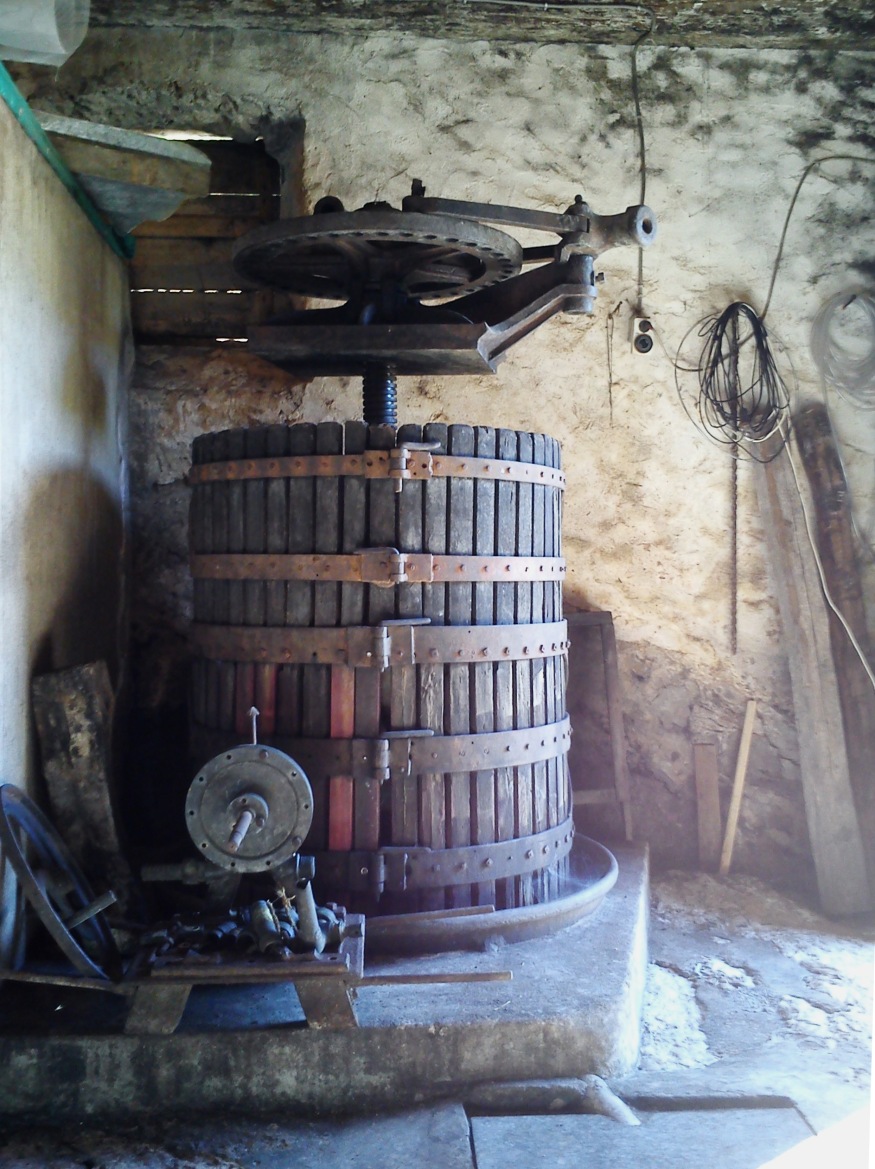
The famous octopus under the bell and delicious lamb from the spit, to put it mildly, did not go unnoticed, and the ovations of foodies with sweet teeth were also picked up by a juicy orange cake and the domestic variant of a hearty Plavac mali!

However, it would be a sin to talk about Dol gastronomy, and not mention the most special homemade dessert - check out why the famous Dol hrapoćuša cake made it to the list of intangible cultural assets of the Republic of Croatia!

3. Take Macića and
Vivera’s path
However, just so that one doesn’t think one can just eat well
in Dol, it’s worth knowing that this is a favourite destination for hikers and
cyclists, because it can be reached by well-maintained roads and trails from
various directions, and intriguing themed trails run through the place itself.

And when we say intriguing - we really mean it!
Intriguing is precisely what the hilly asphalt-gravel track of
Macića and Vivera is. It is named after supernatural beings, resembling
characters from Croatian fairy tales, such as those of Ivana Brlić-Mažuranić!
As Vivera is tied to the phenomenon of natural caves in the
reddish rocks made from local, grainy hrapoćuše stone, from which inexplicable
noise is supposed to be heard, don’t be frightened, but continue onto Škrip,
where you can get better acquainted with the magnificent olive traditions in
the fantastic Museum Uja, and taste some delicious domestic products!

More: www.dalmatia.hr
Photo: Tz Postira, Lidija Žižić, Kaštil Gospodnetić

A sensation for your palate - unlock the flavors of authentic Brač cuisine!
The whole island - on a plate!
The symbolic key, often used in our attractive promotional
campaigns by our island metropolis - Supetar, comes from one of the local
patrons, St. Peter, the locksmith of paradise.

And if you want to unlock a truly heavenly experience for the palate, we suggest you hop on the first ferry and head to one of the attractive Supetar restaurants, taverns, oil and wine tasting locations, or enjoy some agritourism! We’re convinced that this experience will make you a true gastro-expert.
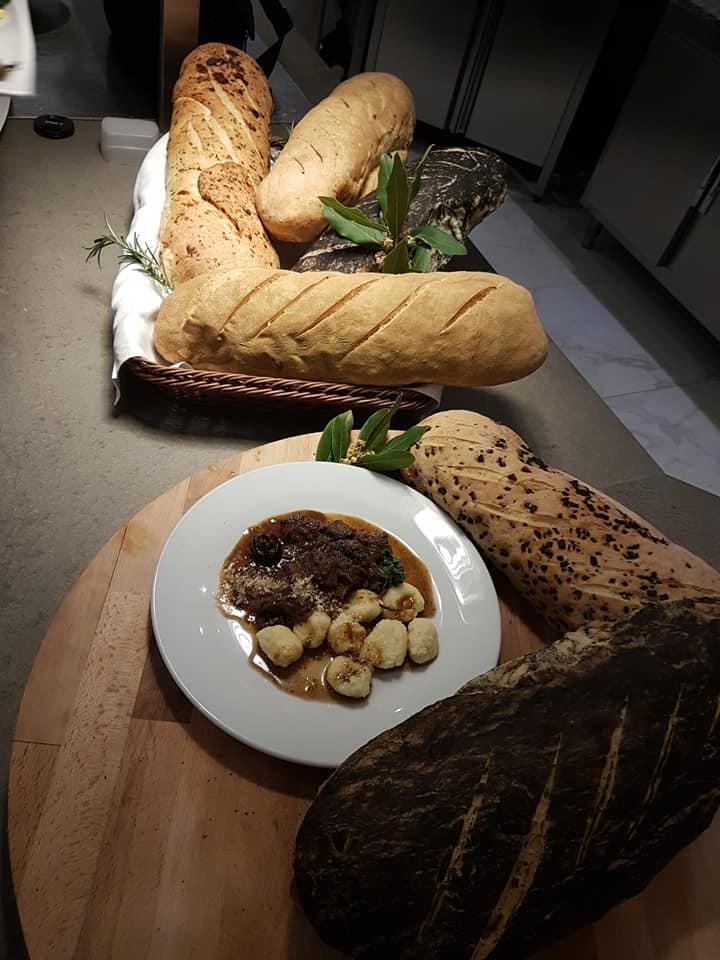
The Supetar Tourist Board and the Supetar Agricultural Cooperative launched this project aimed at promoting indigenous Brač’s gastronomy back in 2016.
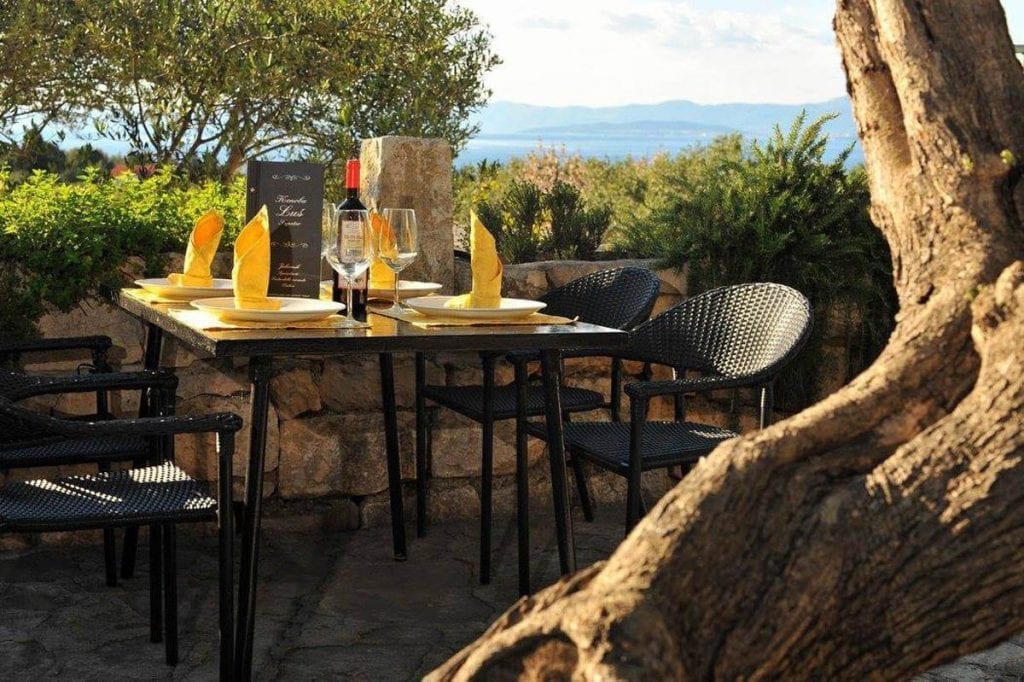
The best is - always autochthonous. We particularly like the Dolce Vita hiking trail’s offer when it comes to Supetar’s gastronomy, which, as its name implies, invokes a sweet life!

The trail, which starts at agrotourism location on top of Supetar, boasts a total length of just over six kilometres and connects several attractive gastro points together - five restaurants, taverns and farms, two art galleries, and even a family winery.
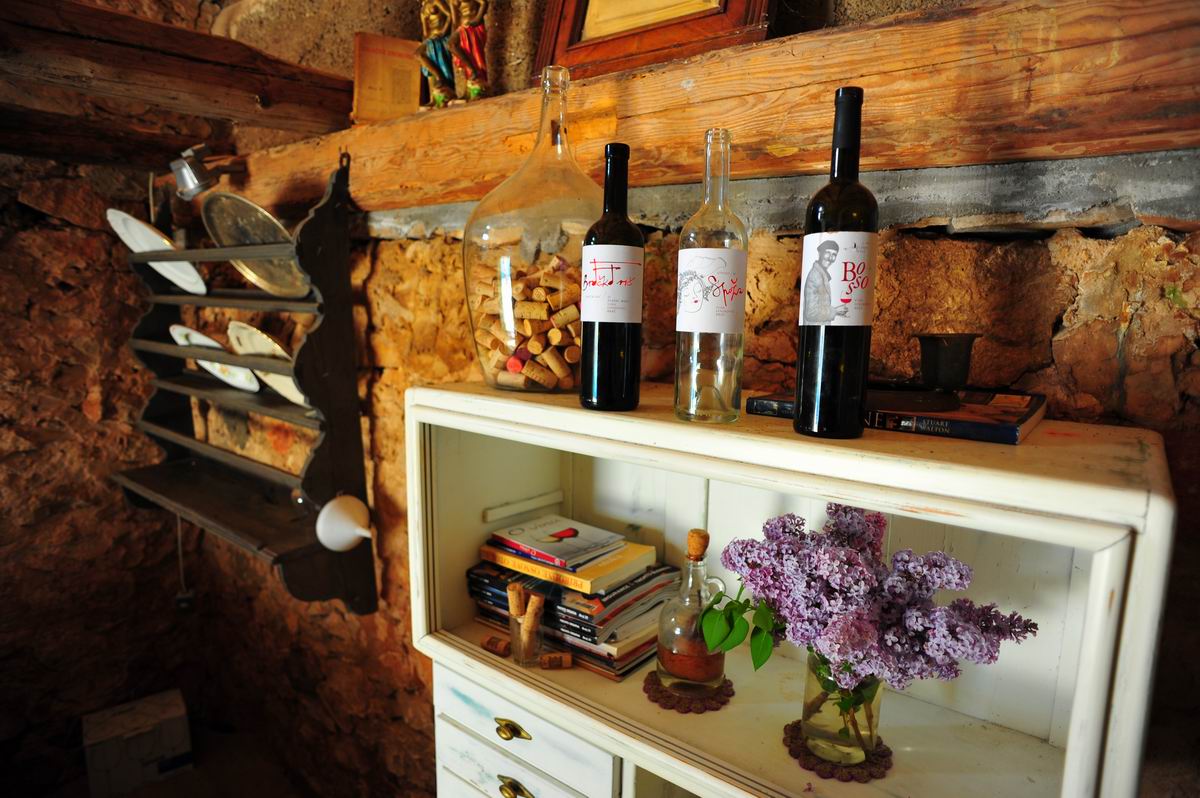

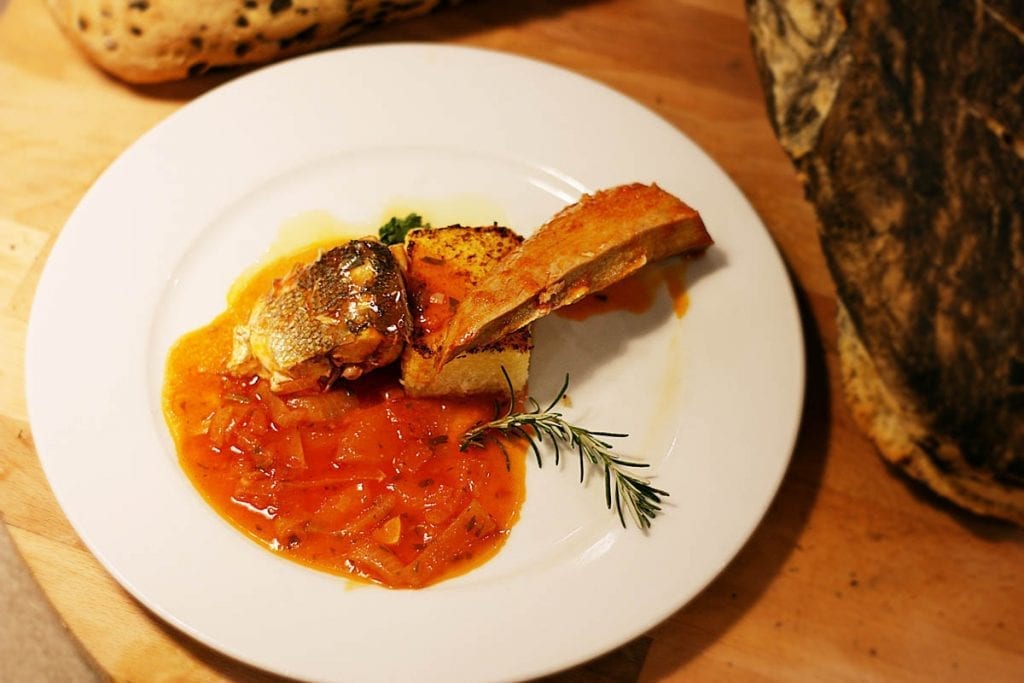
A few years ago, Supetar launched a laudable gastro-traditional initiative that has continued to take place to this very day. Namely, it is a project called Otočka kuhinja (Island kitchen), which tasked the city with returning the indigenous dishes made according to the recipes of local Brač grandmothers to the island’s taverns and restaurants, from ingredients obtained from their own gardens!
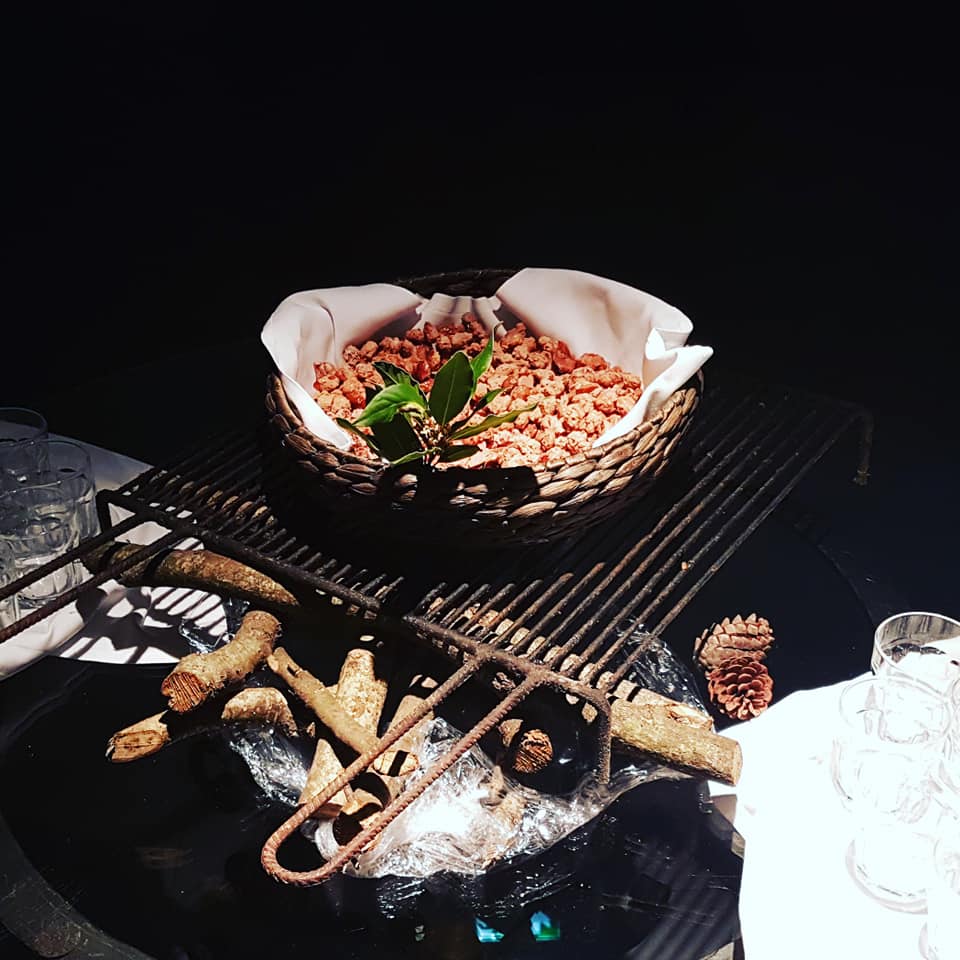
Through the process of assigning a special standard for the restaurants, taverns, OPGs, and tasting rooms, Supetar locals wished to bring back many traditional, native dishes back to the table and, of course, a few nice bottles of Plavac mali are implied!
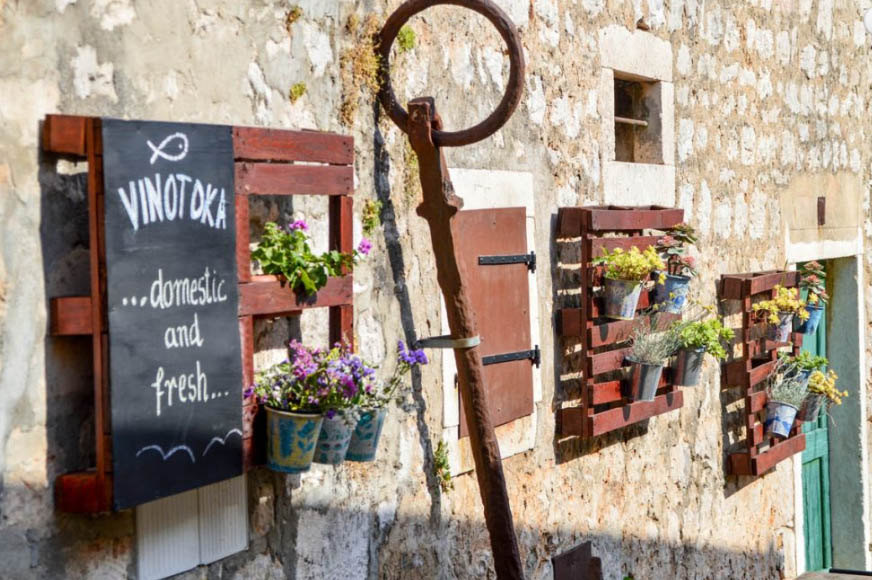
Seek them out and try one of the emblematic Brač-based products and the fruit of centuries-old tradition - olive oil of exceptional quality - at Museum Uja in Škrip.
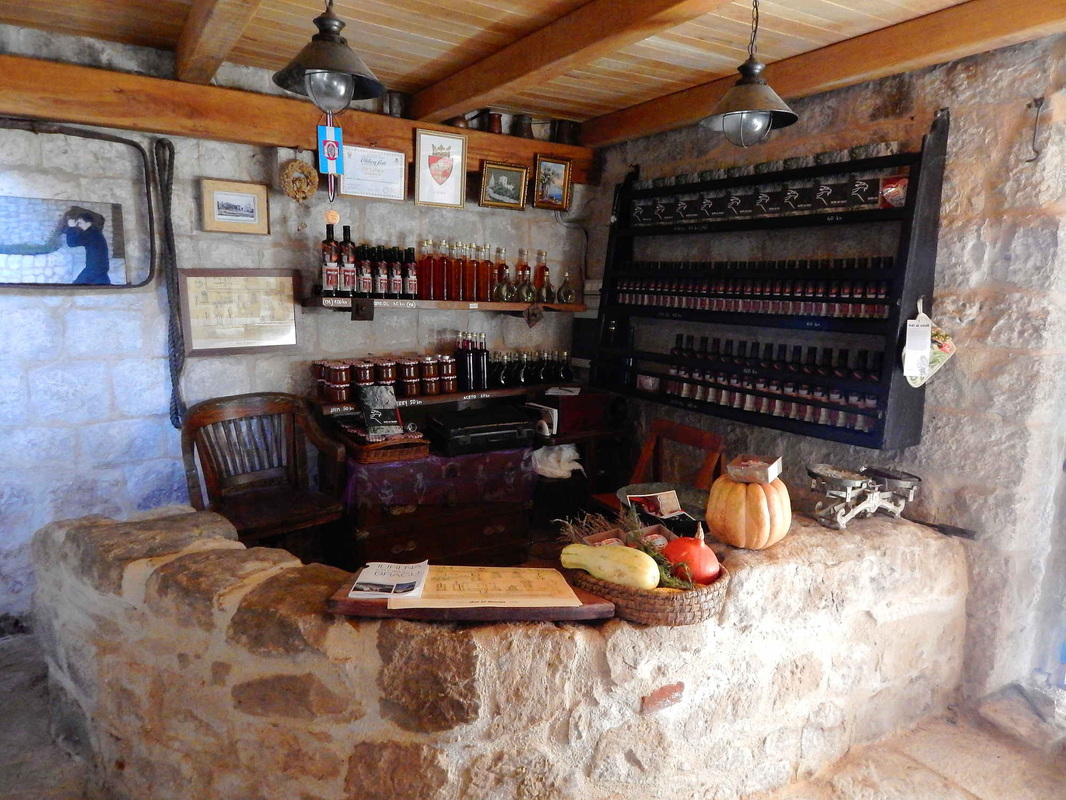
Don’t forget about the
gastro stars!
Is there anything better than delicious food based on healthy domestic
fruits and vegetables served in restaurants overlooking the island's landscape?

We don’t doubt it, but don’t forget the fabulous stars of Brač either - the delicious hrapoćuša cake, with the ruffled appearance of the Brač karst, and the ancient, crunchy vitalac, so unique and special, that they are included in the list of national intangible assets.
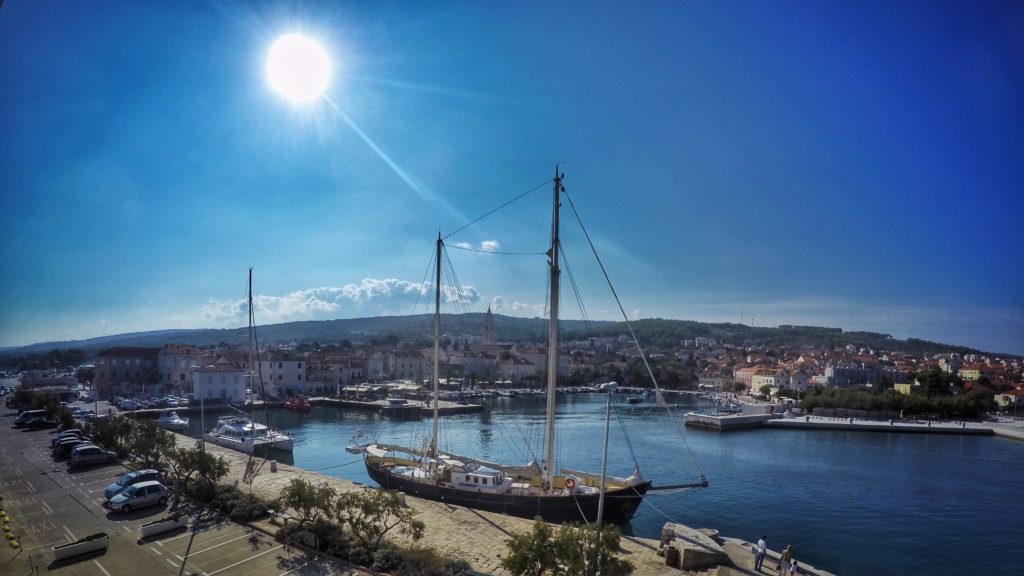
Photo: TB Supetar, www.supetar.hr
More: dalmatia.hr

In honour of the vines and the goats! Bikla Days in Vrgorac and the 20th ‘’Biklijada’’
Bikla Days in Vrgorac is a distinctive autumn tourist
attraction!
Time and place: September the 28th, 2019, at Korzo in Vrgorac!

Do you know what bikla is? This is a traditional drink of the
Vrgorac region, a blend of young, unripe wine and goat's milk, of a
characteristic colour, and a strong and pleasant taste, which has been produced
in the Vrgorac region for centuries after the grape harvest, in honour of both
the vines and the goats.
Many visitors come to the ‘’Biklijada’’ in Vrgorac to taste
this traditional Vrgorac beverage, which has been being made in Vrgorac for
over a hundred years.

Bikla Days and the 20th Biklijada are part of an autumn folk festival full of tradition, folklore and gastronomy organised by the Vrgorac Tourist Board and sponsored by the City of Vrgorac. It was created to honour the authentic customs and traditions of the Vrgorac region on the days when the bikla is drunk, at the town Korzo in Vrgorac!

The festival starts at 19:00 with an evening fair of local products, handicrafts and culinary specialties, while the cheerful atmosphere will be complemented by a folklore program, live music by the acoustic Gojak band and a concert by the VERSI group.

The Biklijada Folk Festival takes place at the end of September and the beginning of October, when the grape harvest is already coming to an end, and has become a well recognised autumn tourist attraction

Bikla has occupied an important place in nutrition in the Vrgorac region, especially in difficult living conditions, due to its strong properties. It is prepared by mixing hot wine with milk. It is important to pour the wine into the container first and then add the milk and slowly mix clockwise until the colour of cyclamen is obtained.

You then drink it in accordance with your work, while in the evening, you drink it in front of a warm fireplace and in a wooden ‘’glass’’ (Dalmatian: bukara) which contains half a litre. As such, bikla has gained importance in comfort in relaxing moments. It has remained in the tradition of the Vrgorac region to this day and in its honour, the Bikla Days are organised.

This traditional one-ethno and gastronomic festival nourishes
and revives this authentic custom, and with its offer of an evening fair of
local products and handicrafts, folklore and entertainment programs, the
festival makes this area richer, more meaningful and attractive for locals as
well as for guests looking for live and more authentic events.
See you in Vrgorac!

Photo: www.tzvrgorac.hr
More: www.dalmatia.hr

5 reasons to explore Hvar island - the one of the most popular nautical destinations in Croatia!
The island of Hvar, our sunniest island is one of the most exclusive destinations for nautical tourism in Croatia, and islands ports are usually full of elegant and luxurious yachts
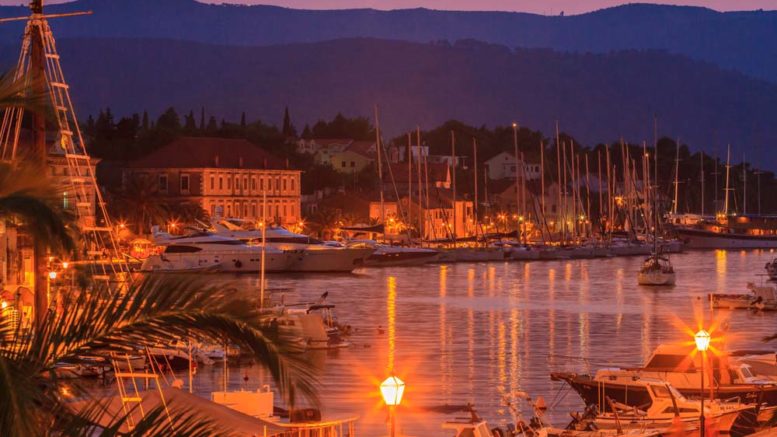
- Late summer and early autumn is the best time for sailing - the time that we feel more and more air, the darkness falls more quickly, the sun continues to shine during the day, but the nights are much fresher and slowly starting to spread from the households are the tempting scents of the winter that is in the making!

The experienced sea wolves know very well that this, alongside late spring, is the most enjoyable time for their favourite activity - sailing!
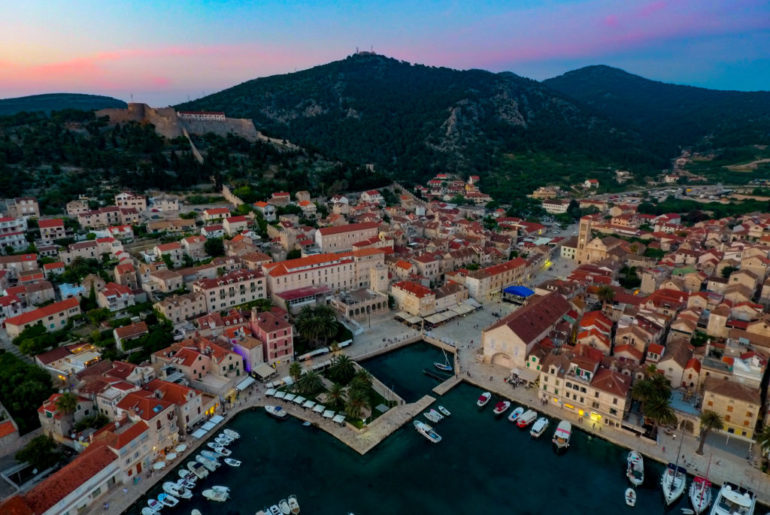
The temperatures are milder, the sea is calm and the winds are more favourable.

In addition to that, if you've been thinking about going somewhere out there in the open sea, know that the right time is - right now. And the right place, you wonder? Of course, our sunniest island - Hvar! The island of beautiful beaches, fancy restaurants and quiet coves, is one of the most popular nautical destinations in Croatia.
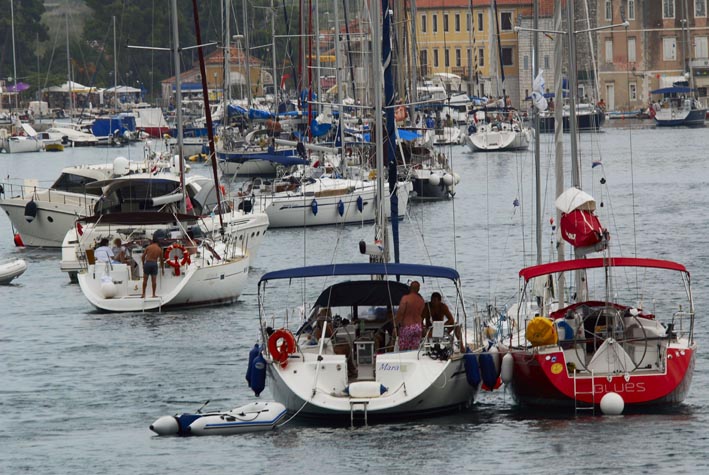
2. Explore the bay which enjoys - a cultural status! The way to do it is to begin from Stari Grad, because it is probably the first place in which you would have onced sailed onto the island, 2,400 years ago!
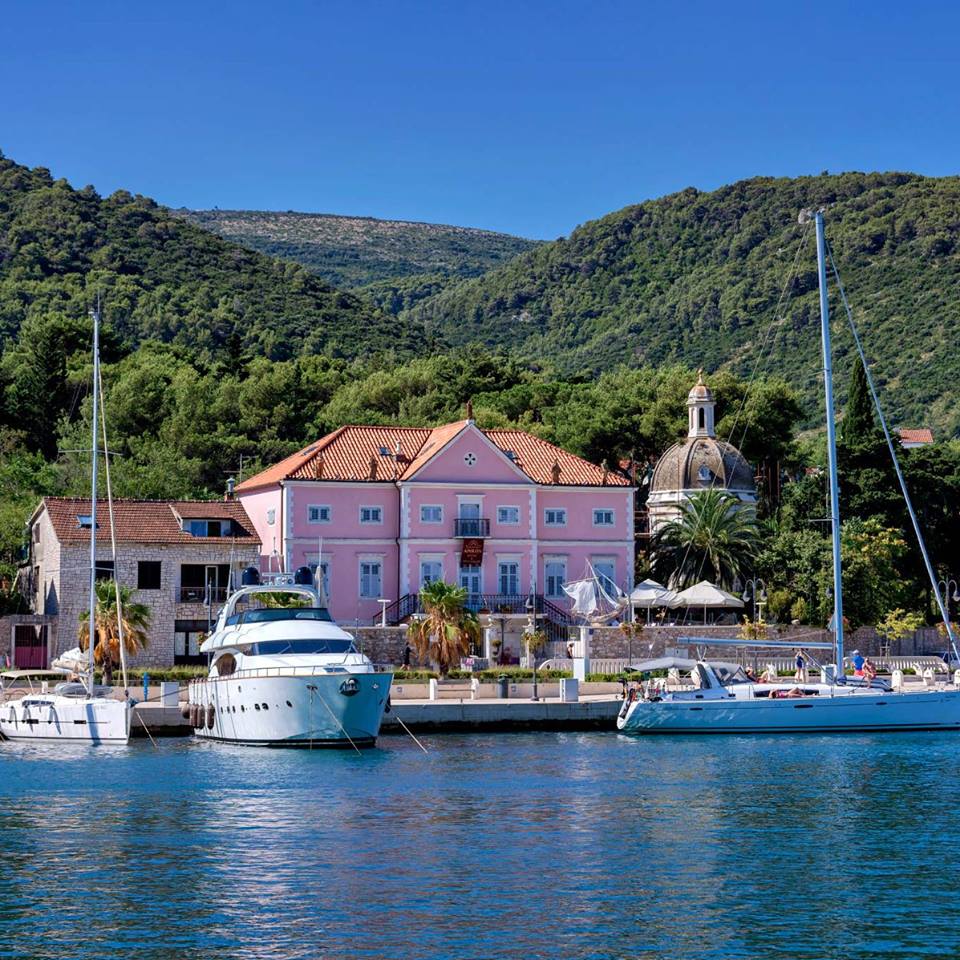
There, you’ll enjoy one of the safest natural bays on the Adriatic, which is specific in that it protects against all winds except the steady and uniform Maestral which is actually propulsion to fuel for your sails!
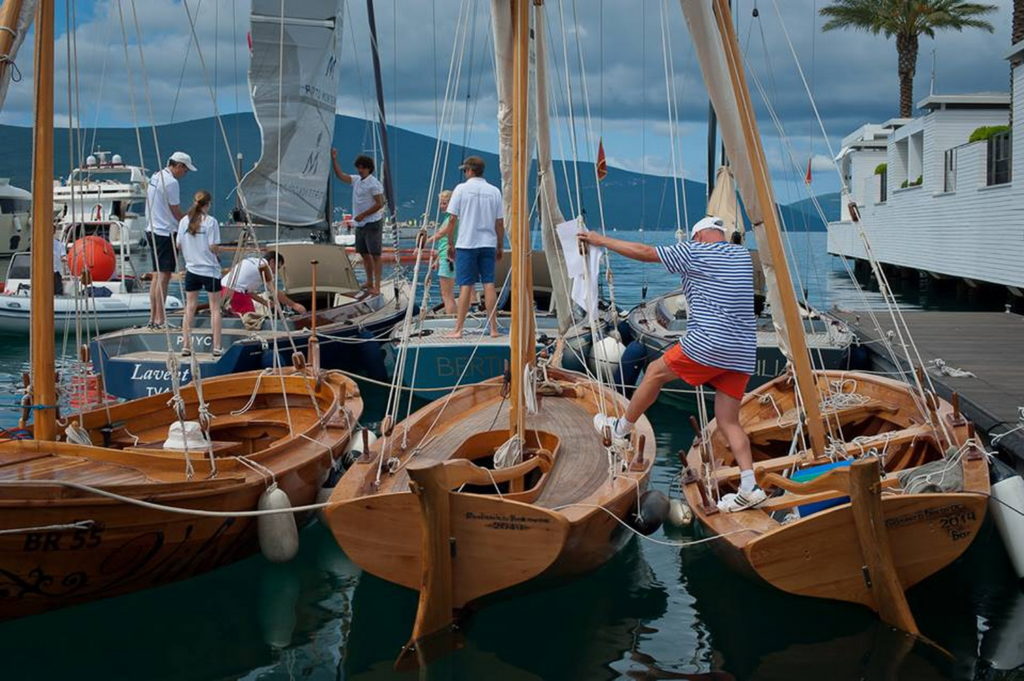
Explore the largest bay on the northern side - a port called Tiha, or if you fancy something different, the spacious and deep Zavala, and in the south, enjoy the smaller and more intimate bays, such as Gračišće and Maslinica. It's a great idea to anchor in Stari Grad itself, and enjoy the pleasure of sightseeing and looking at this picturesque beauty.
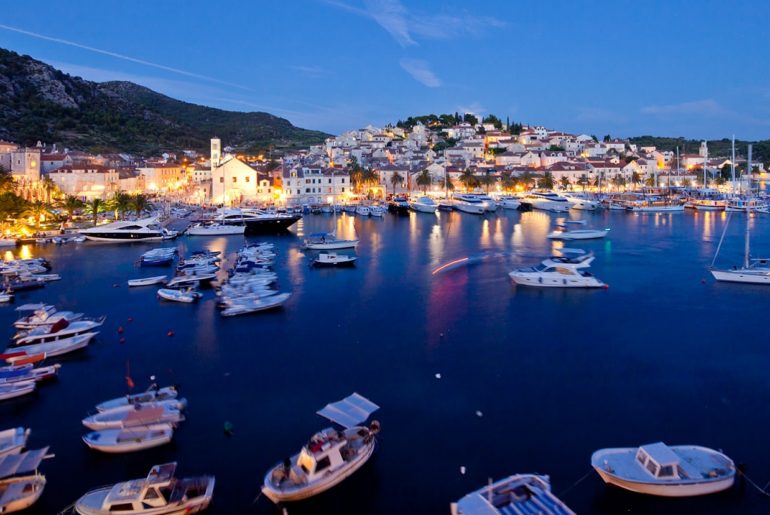
3. Take a peak at its beauty which won the hearts of world’s elite. How does a small sandy beach, several great restaurants, an imaginatively decorated lounge bar, and a promenade with exotic herbs brought here from across the planet sound to you?

This is exactly the magical backdrop of the nautical adventure which awaits you in Vinogradišće bay, on the southern coast of St. Clement, the largest and the most famous of the Pakleni islands. Just in front of Hvar Town and Stari Grad, the Pakleni islands are a real Mecca for boaters, and the deeply indented Vinogradišće cove is one of the most popular and one of the best anchorages in the entire Hvar area.

4. Navigation and a gastro experience - They go together well! Experienced sailors know one thing - there is no better spice to their nautical adventures than delicious home-made food!
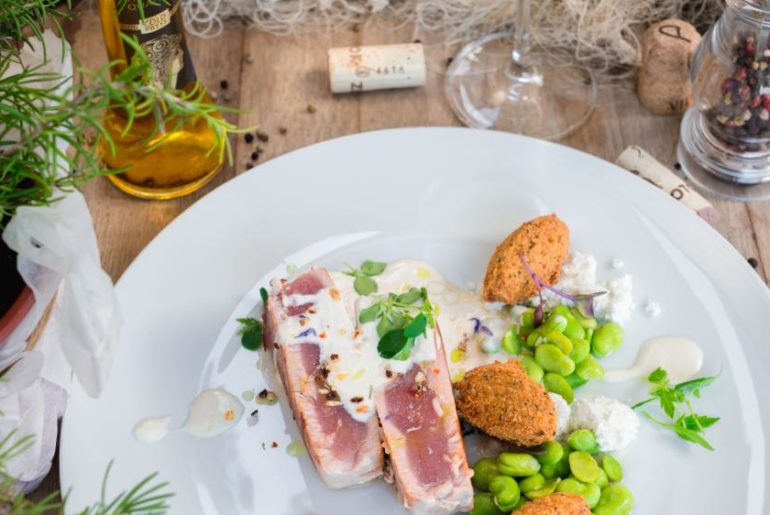
One of the most legitimate reasons for the wild popularity of sailing in precisely the waters of Hvar, is that the boater's plates end up with the most delicious seafood on them!
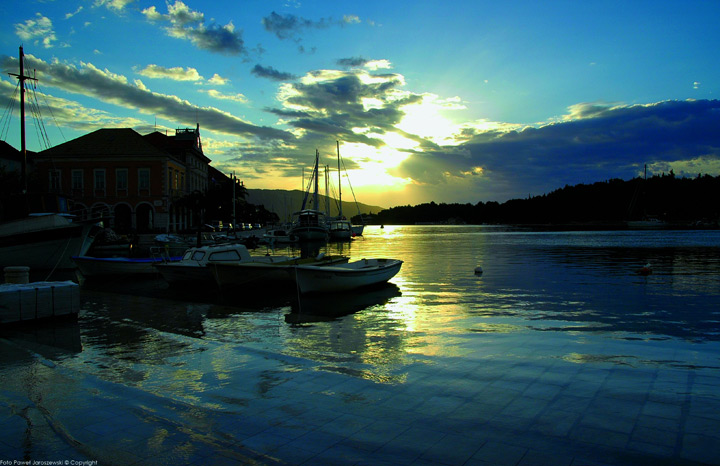
5. Hvar is known as the island of wine. Moreover, Hvar boaters are in their own sort of symbiosis with great restaurants, which, in addition to a tasty menu, also offer a secure berth for their vessels. If you ask them, it would be a real sin not to spice up the voyage with some grilled fish and a glass of quality local wine!

You will easily be convinced of this - it’s enough to taste the rhapsody of the flavours of the best species of white fish - such as sea bream, dentex or sea bass, or delicious snacks like fresh blue fish rounded off with a ruby red Plavac mali from Hvar, or a devilish, elegant Bogdanuša.
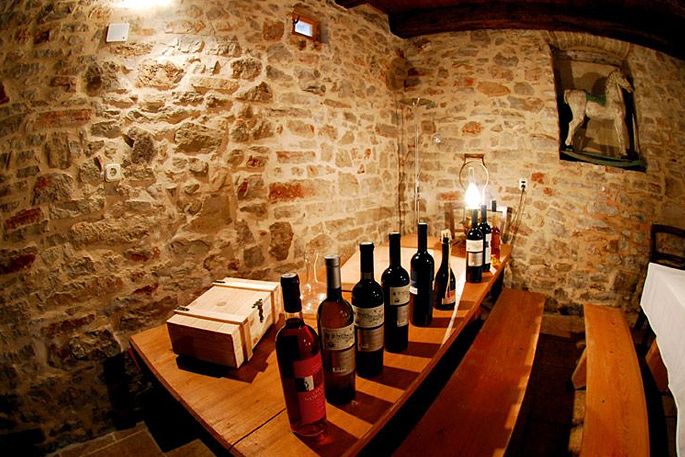
More: www.dalmatia.hr
Photo: www.dalmatia.hr, croatia.hr, archive of tourist boards of island Hvar, Pointers Travel

Explore Central Dalmatia top places for diving! From the perspective of a lover of the sea’s depths
If you were to ask any experienced diver if they’d recommend
that you dive in the central Dalmatian part of the Adriatic sea, the answer
would be categorical and enthusiastic - yes!
The reasons are not difficult to discern - from the sea with
its exceptional clarity that provides great visibility, excellent diving
positions (which, in addition to rich underwater walls, often include a sunken
ship or two!), and the absence of deadly underwater species.
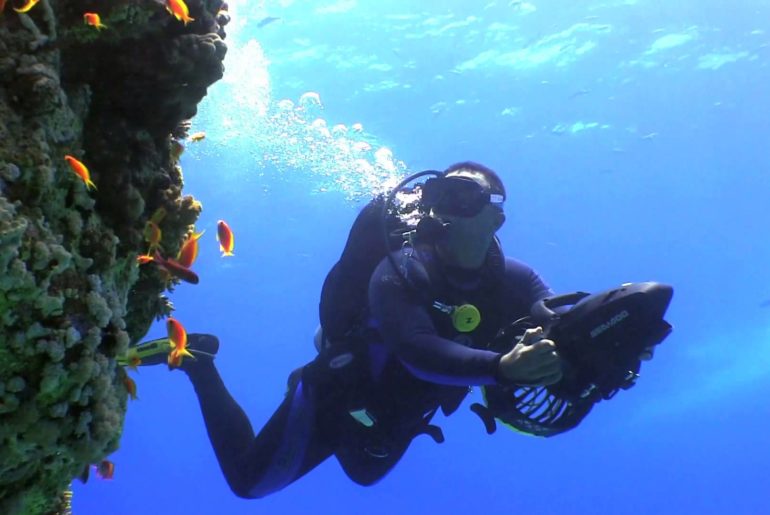
If you are in a diving dilemma, we have prepared three real gems that you cannot go wrong with for you - the islands of Šolta, Brač and Vis!
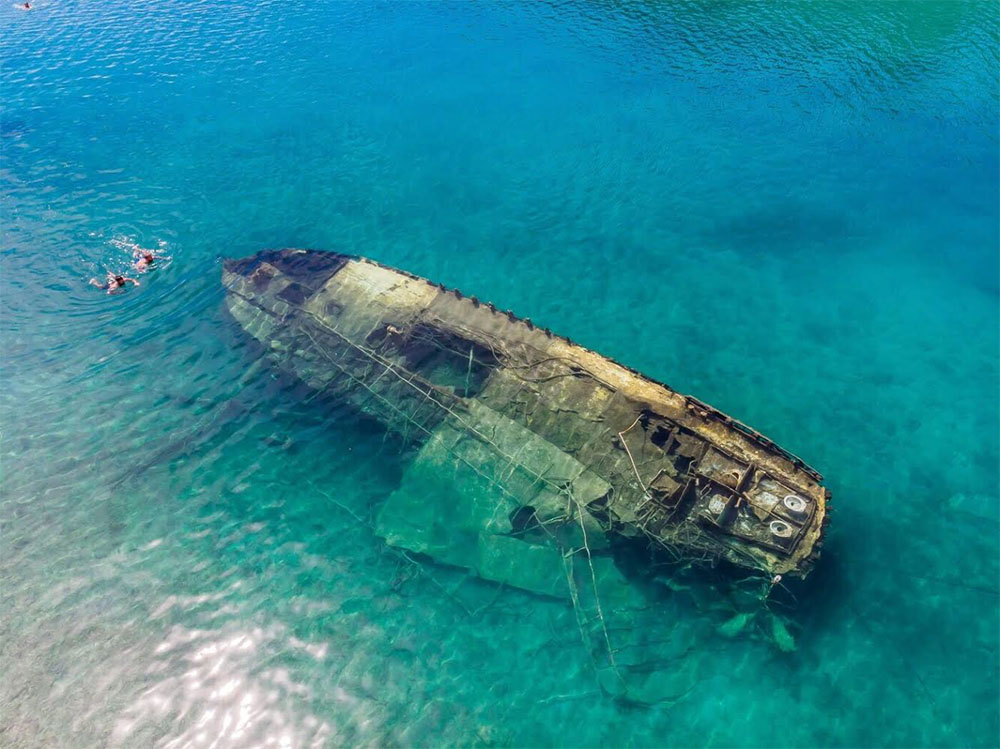
Underwater pyramids, ancient anchors and sunken fishing boats are what awaits you if you decide on Šolta! If you are most attracted to exploring a sunken fishing boat, then you’re in luck - this attraction at a depth of twenty metres is suitable for all diving categories, and you will find it on the northern side of the island of Šolta, near Stomorska at the Pelegrin position.
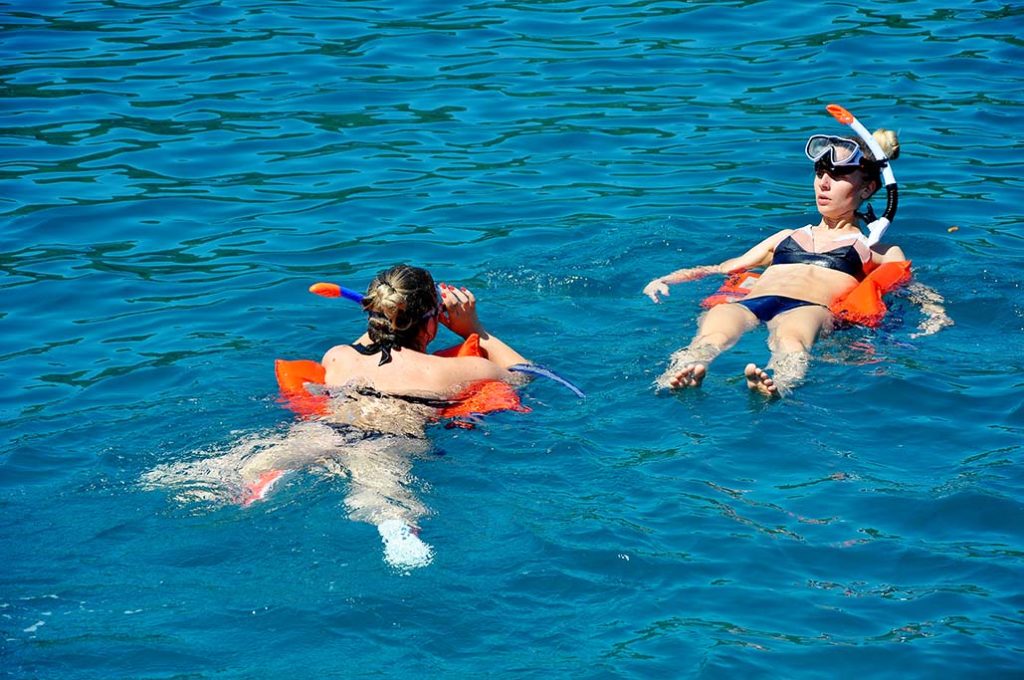
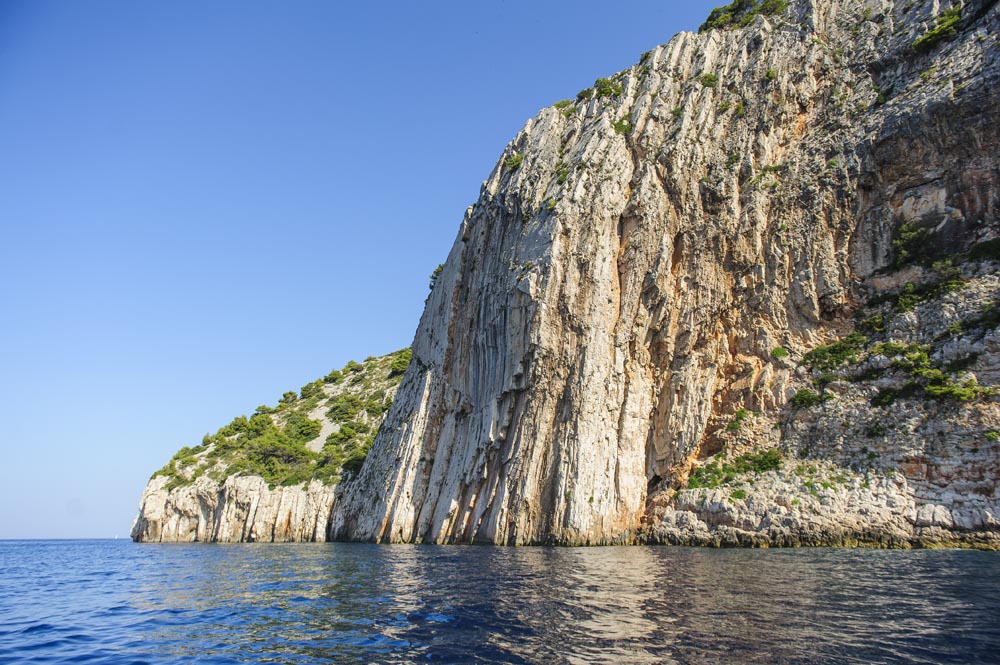
If you don’t want your underwater adventure to go unrecorded, choose the locations suitable for filming - a gallery along the cape of Livka bay with a vertical wall and a cave 35 metres deep, at the bottom of which lies an ancient anchor, or the position of Marie Grota.
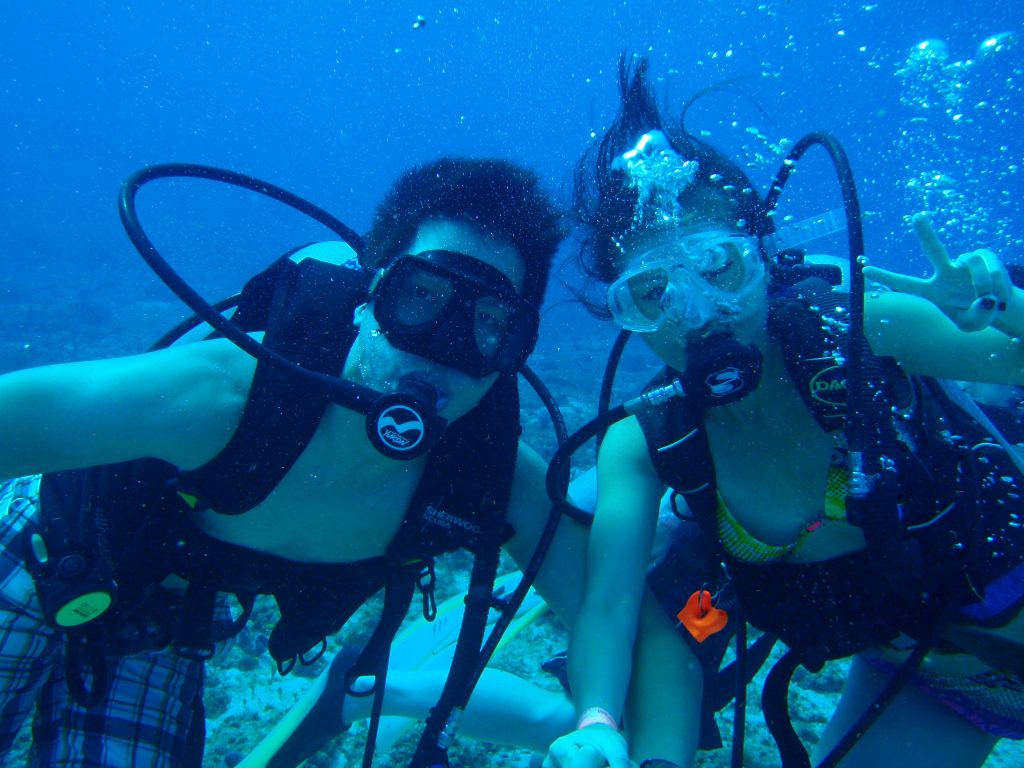
For experienced and advanced divers (and videographers!) we would recommend two true underwater specialities - the Pyramid location in Travna bay will reveal fascinating underwater peaks which look uncannily like mysterious buildings, and the Sipuja location in Stracinska bay is an underwater wall full of holes, crevices, canyons and gorgonia, which is also home to numerous fish species!

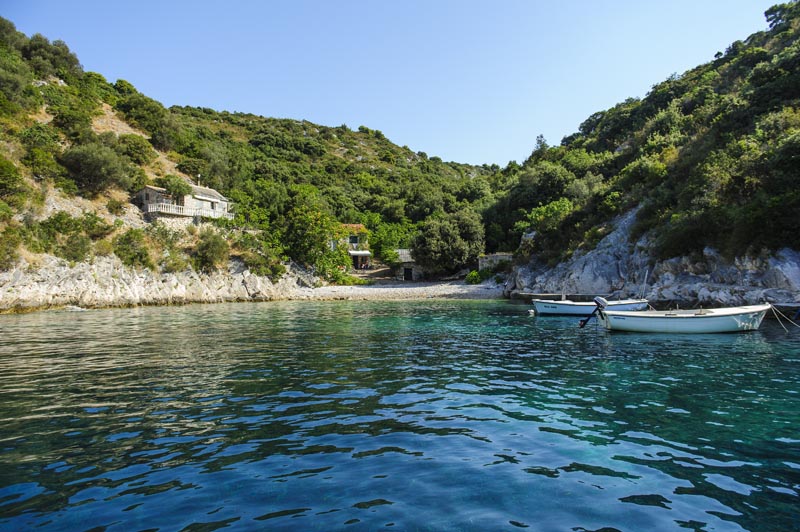
Geological diversity and large amberjacks which swim with the divers - these are the attractions you will come across if you decide to dive on our biggest island, Brač! Brač is mystical and interesting, just like its diving sites, and one of the most interesting is Ptičji rat near the town of Povlja.
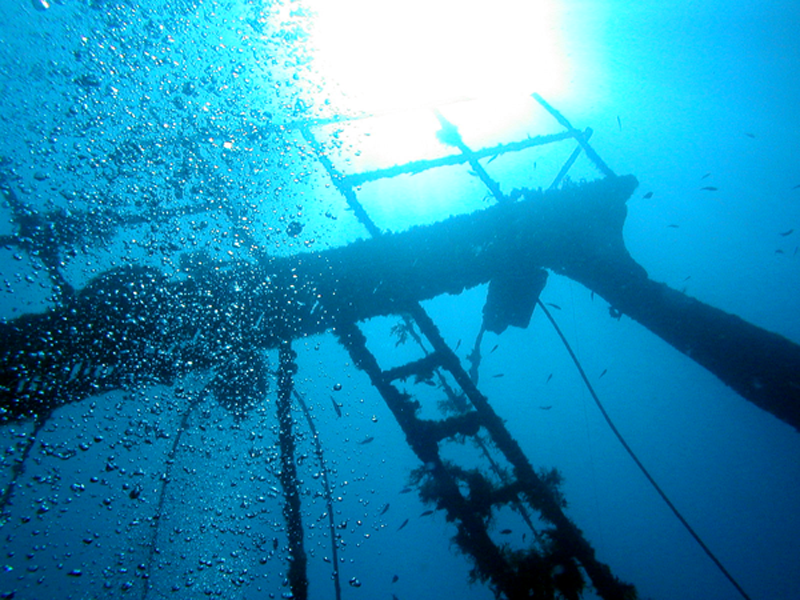
It is located between the steep slopes of Biokovo and a place called Vrulja where there are underwater caves and channels from which rivers flow.
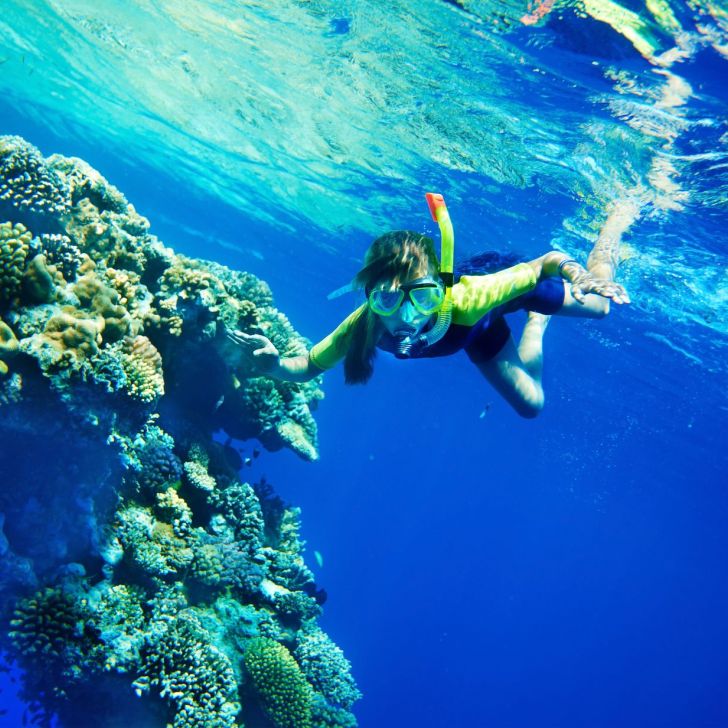
For everyone who wants to dive in an interesting company - there’s the amberjack fish! - You can do so in a cave in the "Lucice" harbour on the southern side of the island of Brač, and for more experienced divers, we recommend diving in the cabin part of the sunken ship "Meje".
Due to the depth at which the boat is located (37 metres),
technical diving with gas mixtures is recommended, and if you venture into this
endeavor, this position east of the little island of Mrduja with a
30-metre-long ship lying on the sand will surely delight you!

Our most mysterious island, Vis, a former military base, looks like a breathtaking location on a James Bond film, no less interesting is its underwater world!

There are indescribably exciting locations waiting for you with even a few sunken ships - from the merchant ship "Teti" in a location suitable for all diving categories (a depth from 14 to 35 metres), which is a common motive for underwater photographers, the Greek cargo ship "Vassilos T" (at a location for more advanced divers and for beginners), the "Brioni" steamboat which is now overgrown with numerous sponges and corals, up to the Ursus tugboat which was sunk by a British submarine in 1941, and even the wreckage of an American fighter jet from the Second World War!
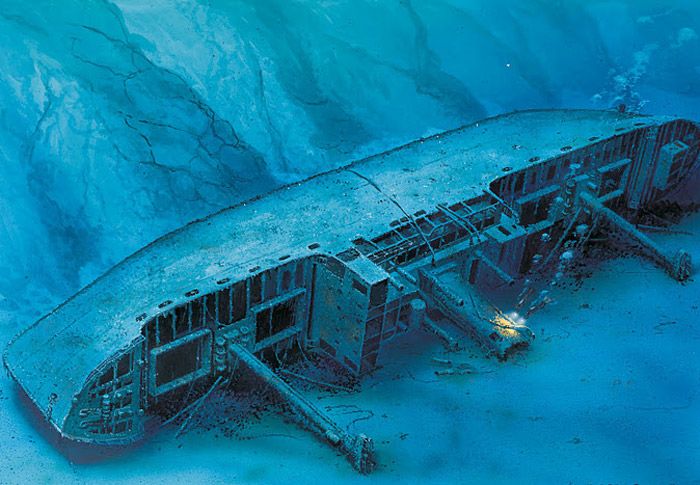
More: www.dalmatia.hr
Photo: www.dalmatia.hr, archive of tourist boards of Split - Dalmatia county

Explore why Omiš Half Marathon is called the 'hidden gem' of the running season!
If your adventure portfolio lacks a really unique running treat, save this September for a visit to Omiš. The minute you step foot in this small town surrounded by steep mountain cliffs, you'll understand why the Omiš Half Marathon is called the 'hidden gem' of the running season.

Many of its first-time participants are indeed baffled by the fact that a flat marathon course of over 20 kilometres is set within such impressive mountains, virtually reaching all the way to the sea.

And the course is indeed located in one of the most amazing sceneries in this part of Europe - in the Cetina river canyon which you enter through a small road tunnel right from the old historical part of town, where the Omiš Half Marathon both starts and finishes. And behind the tunnel, kilometres of pure untouched nature await.

This year's event again includes two races - the half marathon with the start and finish line in the old town of Omiš and a recreational 6 kilometre race, both within the Cetina river canyon, which has been a protected landscape ever since 1963.
Running through the canyon you'll pass some of the best rafting, kayaking, trekking, hiking and free-climbing locations in Croatia. The impressive scenery has attracted some well-known runners over the years, and the names of our last year's winners are perhaps the best evidence of the race's quality - Alija Imamović (Olympic runner from Bosnia and Herzegovina) and Nikolina Šustić (ultra-marathon world champion).

But don't let these impressive names intimidate you - the Omiš Half Marathon is an event for professional and recreational runners alike, and this year's fourth annual race is expected to host the greatest number of competitors so far, both from Croatia and from abroad.

The Omiš Half Marathon has, in a relatively short time, grown into quite a popular event, which is partly due to the quality of its attractive race course, but also to the fantastic atmosphere created around the race in our small town, which as a well-known adventure destination welcomes adrenaline and nature lovers with great enthusiasm.

The Omiš Half Marathon is a race you'll remember for years, or one you won't remember at all - depending on how enthusiastically you give yourself over to the mentioned heartfelt welcome by the locals after passing the finish line :)

To make this a day of true family fun, in addition to the two main races, the young ones will also be able to participate in a kids' race and a toddlers' obstacle course race.

The Omiš Half Marathon is organised by the Town of Omiš Tourist Board, in cooperation with the sport association of the Omiš Swim marathon, under the sponsorship of the Town of Omiš, the Split-Dalmatia County and the Split-Dalmatia County Tourist Board.
Find more FB: www.facebook.com/omiskipolumaraton/

HALF MARATHON IN THE CETINA RIVER CANYON – OMIŠ 2019
Race date: 28 September 2019
Race area: Omis – the Cetina river canyon
TYPE OF RACE: road race
START/ FINISH: Poljički trg (Poljica Square), Omiš
RACE COURSE: 21,097 km (round 4*5,274 km) 6 km
RACE START:
Half Marathon - Poljički trg (Poljica Square) 10:00 am
Recreational 6 km race - Poljički trg (Poljica Square) 10:00 am
REFRESHMENT POINTS: Start/Finish, 5 (10) km stop.
CATEGORIES:
Half Marathon:
Female: FU22, FS, F35, F40, F45, F50, F55 +
Male: MU22, MS, M35, M40, M45, M50, M55, M60, M65, M70 +
6 km race: Female, Male
RACE COURSE DESCRIPTION:
Half Marathon start:
Poljički trg/Poljica Square (turn left after crossing the bridge, 50m upriver) – 5,274 km upstream along the flat land course through the Cetina river canyon – turn around and head back to the start line – turn around – again back to the same location – the same course downstream to the finish line (the starting location).
6 km race start:
Poljički trg/Poljica Square (turn left after crossing the bridge, 50m upriver) – 3 km upstream along the flat land course through the Cetina river canyon – turn around and head back to the finish line (the starting location)
AWARDS
For the Half Marathon: Cash prizes for 1st-5th place in both categories (M+F)
Trophies for 1st – 3rd place in M/F overall ranking
Categories: medals 1st – 3rd place in both categories (M+F)
Sponsor gifts
Start packs
For the 6 km race:
Trophies for 1st – 3rd place in M/F overall ranking
Start packs
Cash prizes:
HALF MARATHON
Female 1st
1 500,00 kn
Male st
1 500,00 kn
All half marathon and 6K race participants will
receive a finisher medal, along with lunch.
T-shirts are guaranteed for the first 200 registered participants.
ENTRY FEES:
Half Marathon:
| by 26 September 2019 | 100,00 kn | |
|
after 27 September and at the start line |
150,00 kn | |
| 6 km | ||
| by 26 September 2019 | 30,00 kn | |
|
after 27 September and at the start line |
50,00 kn |
APPLICATIONS:
Registrations are possible
under www.stotinka.hr (https://stotinka.hr/eng/event/897)
and race entries are accepted at the start line from 8 – 9 AM on the day of the
race.
IMPORTANT INFO:
The race is limited to 2:30 hours; Participants with less than 10 km within a 1h 10min time frame, as well as those with less than 15 km within a 1h 45min time frame will be disqualified
The winners will be announced at 1.00 pm
Each participant runs at his/her own risk
More information is available under www.visitomis.hr
Facebook

More: www.dalmatia.hr
Photo: www.dalmatia.hr, visitomis.hr, archive of tourist boards of Split - Dalmatia county

The culinary personality of Central Dalmatia - Discover a region full of flavour!
Meet the dishes which speak - all languages!

Unique locations, a perfect sea and beaches, and an abundance of cultural and historical heritage are common motives for guests from all cantons to rush to Split-Dalmatia County.

But here's a real straightforward experience and a delicious domestic ‘’table’’of dishes, which combine Greek, Roman and Illyrian Mediterranean flavours with a magical touch of the orient!
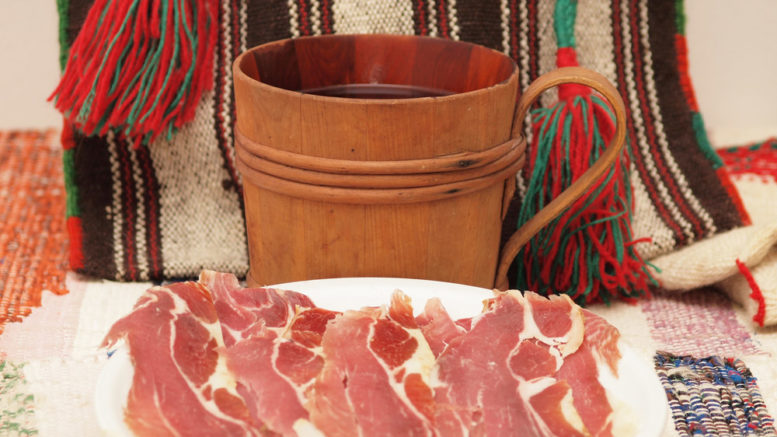
In order not to deprive your palate of sensations worth recounting, we have prepared an attractive list of dishes worth tasting for you - the luxurious tastes of which speak - in all languages!

1. The Dalmatian peka. It’s worth starting this list off with a real specialty - the softest and the most delicious meat ‘’under the bell’’, paired with domestic potatoes and herbs! They are simultaneously cooked and baked under an iron bell, which provides the most delicious veal and lamb (or seafood delicacies like octopus!) ever.
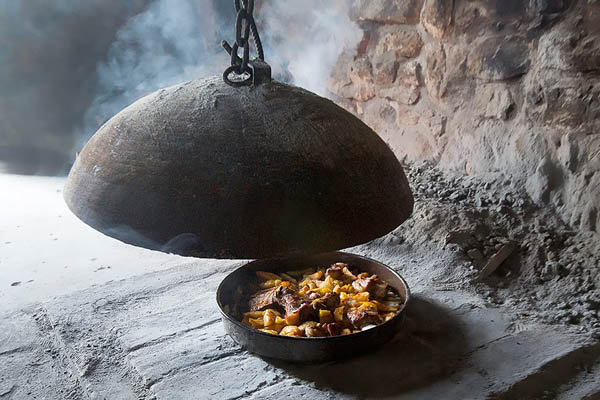
Check out why meat baked in cities all over the coast, but also in the Dalmatian hinterland, enjoys the true status of royalty!
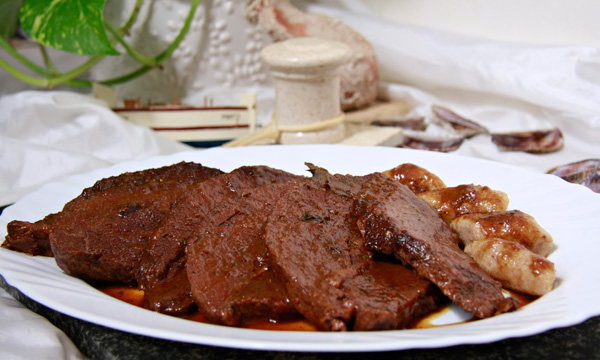
2. Pašticada comes a close second to the peka, the unadorned queen of all important events - for example, if you find yourself at a typical Split wedding, there is every chance that the meal sequence will involve this specialty of beef, veal or big game, with a portion of gnocchi sprinkled with sheep's cheese!
Sounds great, doesn't it? Don't miss out on this meal, and the traditional preparation of which that lasts for days!
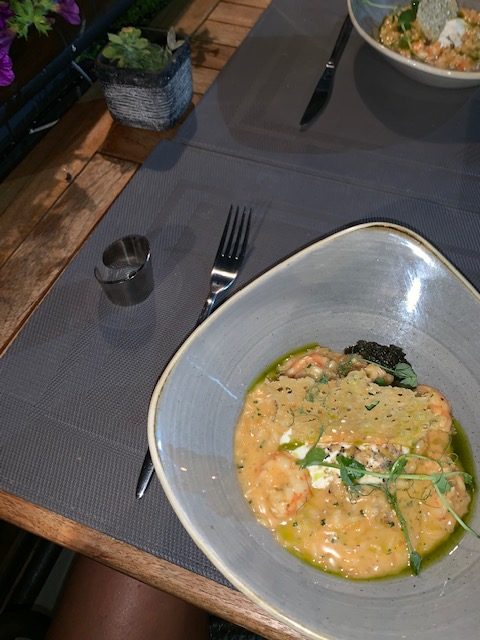
3. Creamy risotto is most often eaten in Dalmatian homes as a delicious appetizer, and culinary connoisseurs know this meal is nutritious and delicious enough to be the main star of an attractive Mediterranean lunch!

We especially like the variation of cuttlefish, which besides its excellent taste, also captures attention with its unusual black colour obtained by the addition of cuttlefish ink!
4. Island Pogača (bread pie) is a true example of an indigenous dish that has formed the basis of island nutrition throughout history. Look for Vis, Hvar (forska), or Komiža pogača and feel like a real islander.
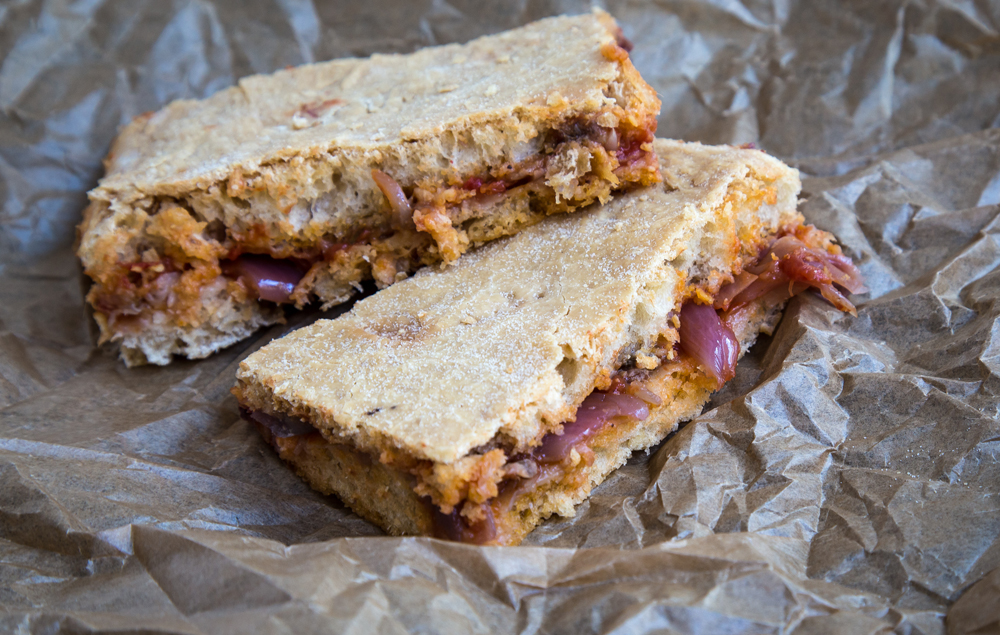
Komiža pogača is made up of a combination of sweet-sour tomatoes and salty pieces of fish, Vis pogača is made from a delicious dough topped with shredded anchovies or sardines, and the Hvar (forska) pogača will disarm any real foodie - namely, in addition to these ingredients, goat’s or sheep’s cheese is also hiding within it!

5. Sinj arambašići will always be served, in addition to delicious ingredients, with authentic local hospitality! These smaller scrolls of sauerkraut or fresh cabbage stuffed with a mixture of beef and pork, cooked for two days in a pot lined with pieces of dried meat or bacon, and they go great with a glass of bold homemade red wine!

6. The clean Cetina river is a real source of abundance and luxury on gourmet lovers’ tables - try some river crabs and trout with grilled or a real delicacy - roasted frogs wrapped in prosciutto, smelling of rosemary and drizzled with wine!
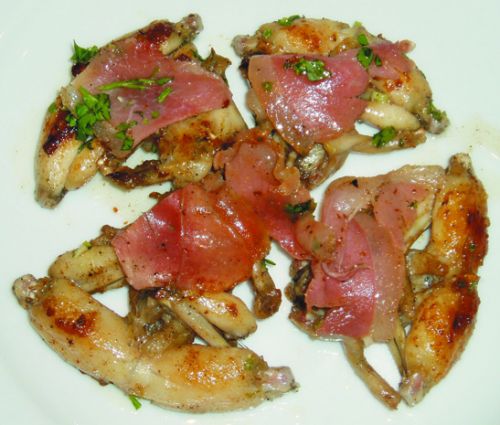
You will find specialties in the hinterland, especially in one small town - Trilj, which is a favourite destination for exhausted businessmen in search of sensations and refreshments for their palates!
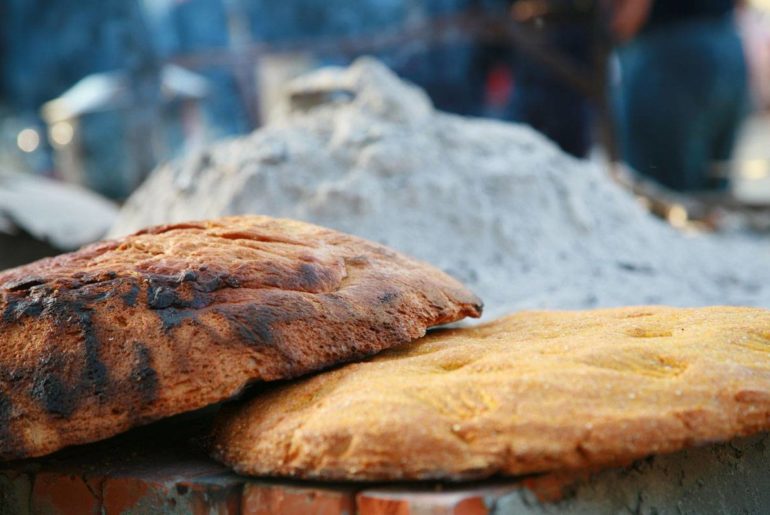
More: www.dalmatia.hr
Photo: www.dalmatia.hr, croatia.hr, archive of tourist boards of Split - Dalmatia County

Visit Omiš – a town of pirates!
They went any length even against the Pope, their fast boats were a thorn in Venetian's side, and not one ship could pass without paying them fee

Not much is needed for happiness, a saying familiar to the owner of a house where even today stays a writing Thank you Lord for my presence on this world. Locals especially like it, tourists find it attractive, so the house got a name The House of a Happy Man.

Relaxed lifestyle, perfect climate and beautiful landscape shaped by the Cetina canyon, the sea and Dinara mountain make Omiš people truly fortunate. Their town is not just another attractive holiday destination on the Adriatic, but also a place of rich cultural heritage.

The Nemesis of
Split and Dubrovnik
Historians would probably
start from the beginning – two thousand years ago when Cetina mouth was being
inhabited. But, we'll skip all those centuries of long and turbulent past and
take you to 12th and 13th century, in time of Kačić princes who had the most
famous pirate fleet on the Adriatic. Striking everyone with fear, Omiš's
pirates charged free sailing to everyone who passed their town.
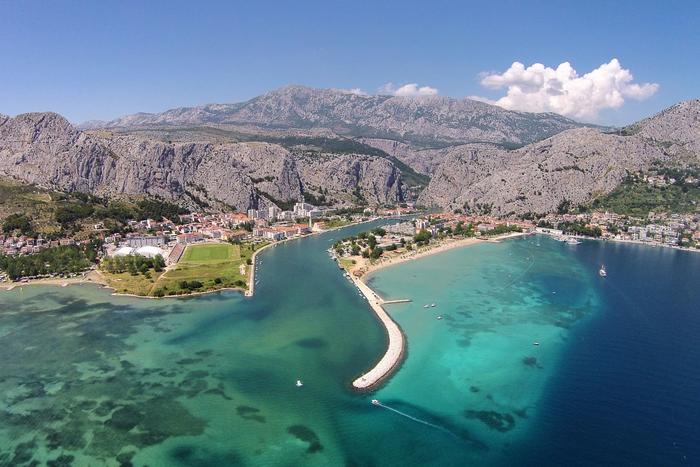
For almost two centuries they ruled this part of the Adriatic while attacking merchant ships of great maritime cities of Split, Dubrovnik, Kotor and Venice. They didn't even flinch before Pope's galleys sailing to Palestine. It was pope Honorius III who lost the First Crusade against Omiš people in 1221. 60 years later, in the Second Crusade, fought by Venetians on behalf of the Pope, Omiš pirates weren't so lucky. Not long after the lost battle Kačičs retrieved from the town, defeated and weakened, but not giving up piracy for a long time.

It resisted the battles, but not a thunderstroke
As a permanent reminder of famous history above the old town stands fortress Mirabela– former pirate lookout from which entire Brač channel is visible, ensuring that no ship passes unspotted. Thanks to Byzantine coin found in its foundations its construction is dated back to the 13th century.
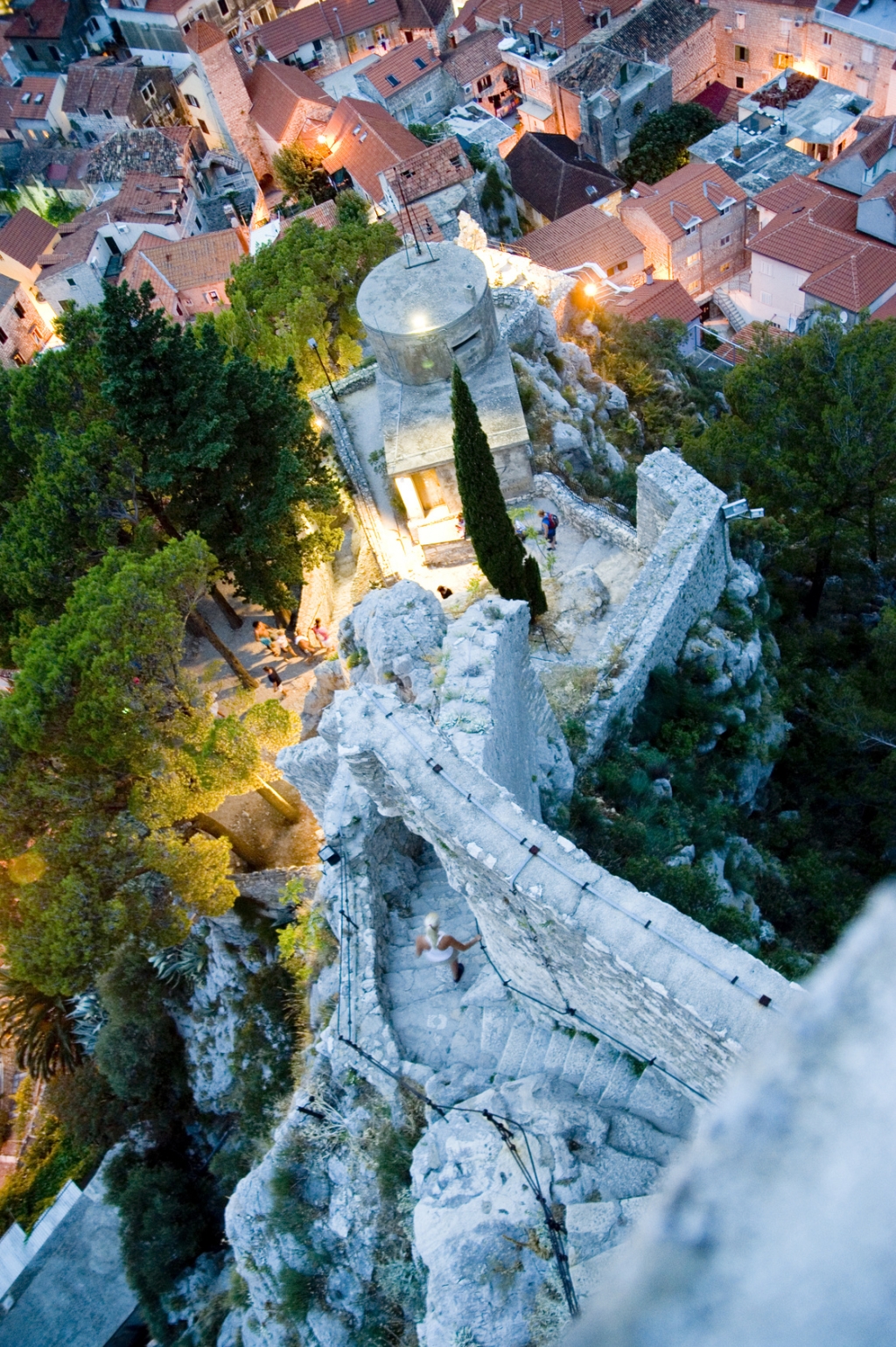
Those foundations resisted numerous battles and wars, but not a thunderstorm 30 years ago, when a thunder stroke at the top of the fortress and demolished it completely. Today it is restored into its original shape and is a favourite tourist site. It is most easily reached by steps that start at Omiš's largest church – St. Michael's.

The biggest summer
manifestation in Dalmatia
Although they've given up piracy centuries ago, Omiš
people still keep their sea agility, which is confirmed every 18 August. On
this day more than ten thousand visitors from all over the world come to Omiš
to enjoy in history revived and reconstruction of Pirate Battle between Omiš
people and Venetians. Apart from Omiš's pirates many historical groups take
part in this manifestation: Dubrovnik Trombunjeri, Klis Uskoks, Knight's
society Kumpanija from Blato on Korčula, Župski Gospari, Pirates from Župa
Dubrovačka and Cultural Society St. Juraj, Poljica.
More: www.dalmatia.hr
Photo: www.dalmatia.hr, croatia.hr, archive of tourist boards of Split – Dalmatia County

Full of life! Four things you ought to know about active vacation in Central Dalmatia
Bike&hike, big game fishing, sailing, diving, rafting, canoeing, kayaking, horse-riding, paintball, zip line – possibilities are endless and only one life to live! In Central Dalmatia they live it up to the hilt!
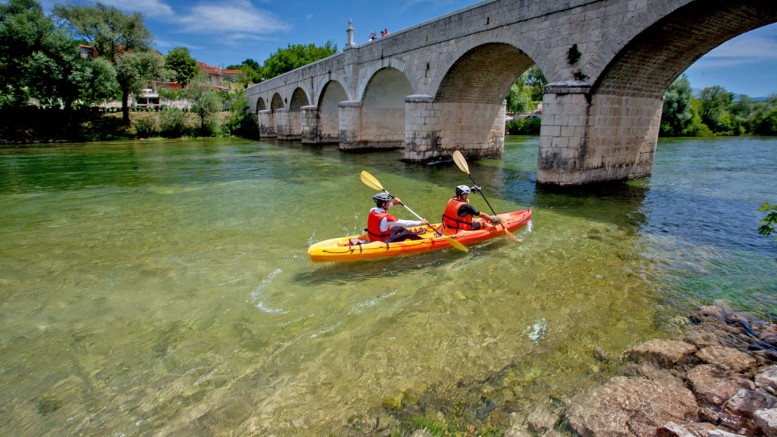
Beauty is in the movement – claim recreationists, sportsmen and active vacation enthusiasts. It offers a sense of freedom, makes you push the boundaries, open new vistas, feel pleasure, fulfilment and bursts of energy.

All it takes to experience real adventure is to get out of your comfort zone – Split-Dalmatia County is one of the rare places that offers extremely wide range of possibilities for this.
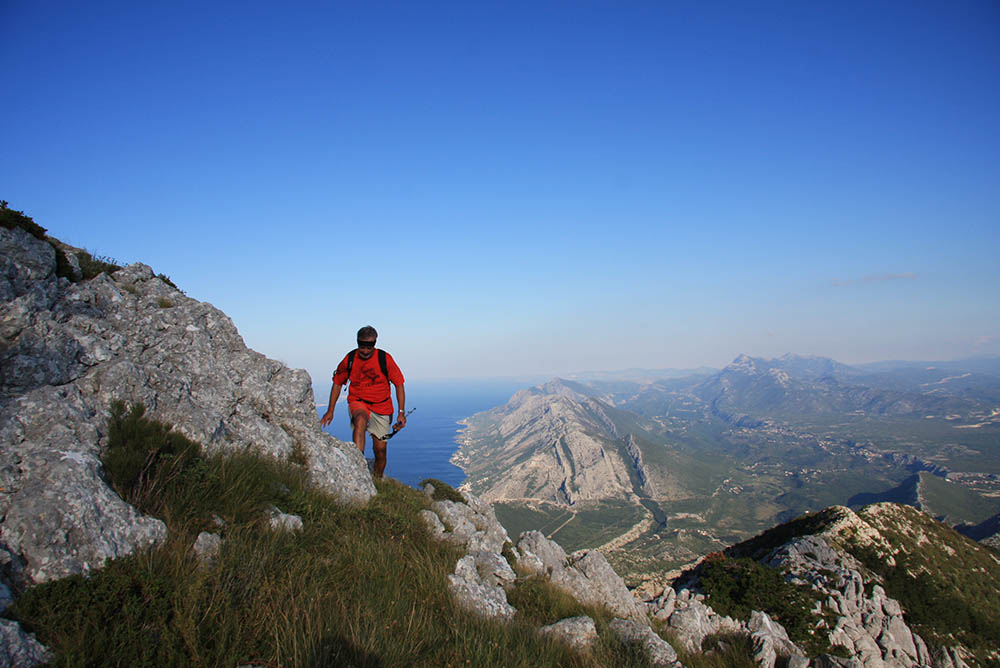
Slow down, what’s
the hurry?
Surprisingly, this
well-known saying in Dalmatia depicts contemporary adventurers the best. They
don’t rush around a destination, spending their vacation in superficial,
fast-paced tours. On the contrary, they truly soak up the atmosphere of a
destination, often taking two or three days for hanging out with locals to be
shown places they otherwise would never visit.
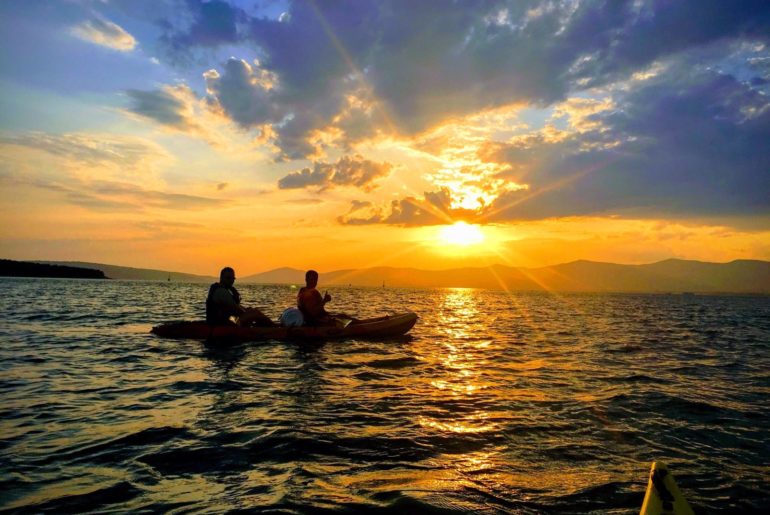
They enjoy in wild beauty of Dalmatian Zagora, leisure island lifestyle, discover rich heritage of coastal towns – some even on a bike. With a total of 128 cycling roads Split-Dalmatia County is one of the most desired cycling destinations.

Visitors’ goals vary from conquering mountain peaks, testing one’s fitness on hilly terrains, riding along the Cetina valley or near Red and Blue Lake, discovering old churches and architecture; whatever your aim is, you’ll have a priceless experience!
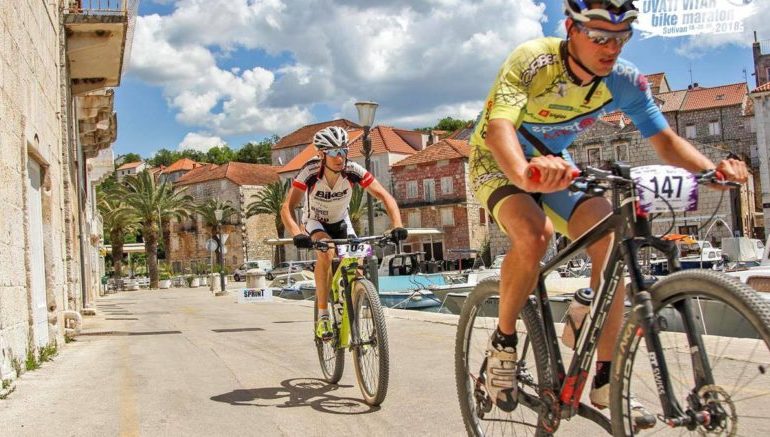
For those not
afraid to get off the beaten track
Guests in search of active vacation are most often environmentally
conscious so they avoid asphalt and prefer to move along macadam and country
roads. True challenge present hiking and mountaineering roads, which Central
Dalmatia abounds in.
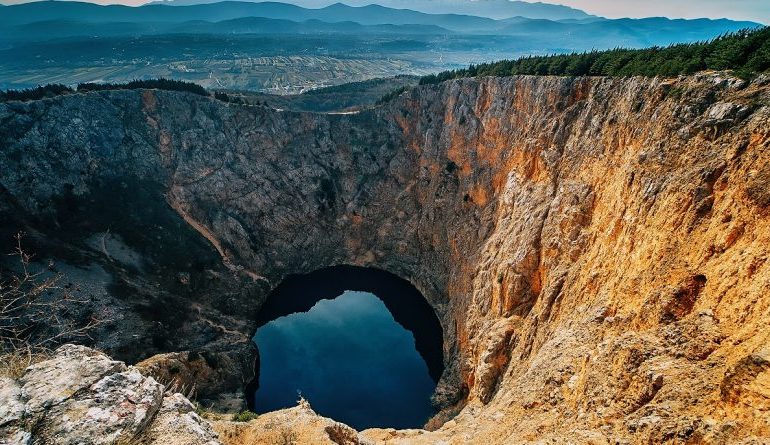
Spending time in nature makes you environmentally conscious, develops sense for natural habitats and your own health and helps to reduce noise and pollution – claim those in favour of bike&hike tourism, who find Central Dalmatia an absolute hit!
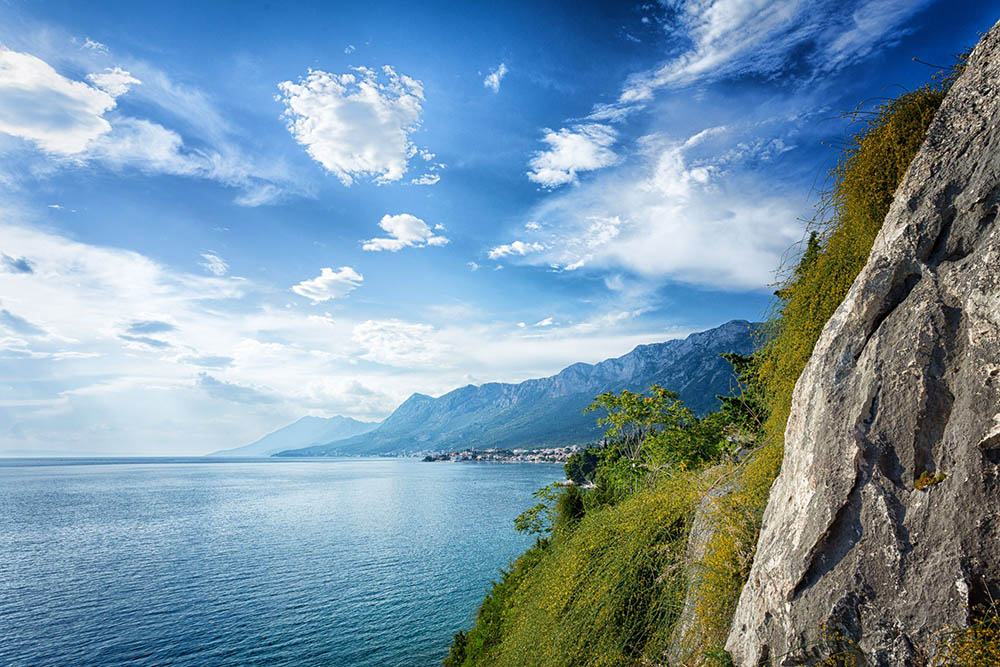
Biokovo, Dinara, Vidova gora…are hikers’ and free climbers’ favourite destinations, while experienced riders enjoy in famous equestrian clubs in Dalmatian Zagora, often choosing extended tours that last for several days.

It’s easier in
a team
Calm sea is a unique experience if you choose
kayaking, and they say that it’s best to do it on Brač, Hvar and Vis. For
sailing some wind comes in handy - together with an experienced skipper to take
you to most secret Dalmatian bays.
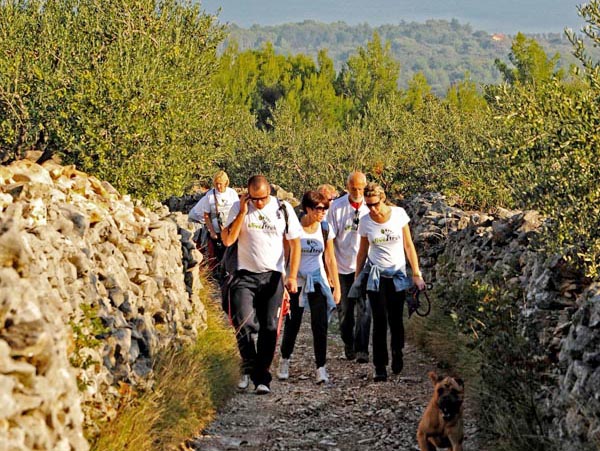
Those in love with big game fishing have discovered
Dalmatia as well, while divers have been familiar with it for a while now, so
there is an abundance of diving centres to take you to a dive of your life.
Whoever visited the Cetina was breath-taken. From its
spring in Zagora to its mouth in Omiš, it conquers with its beauty along all
104 kilometres.

For years it has been a number one destination for rafting and canoeing, equally enjoyed by the domestic and foreign visitors; don’t worry about your fitness level – all’s easier in a team!

Zip line – an experience to remember Those who are afraid of heights will miss one of the most beautiful views of the Cetina river. Descending along 2 100 metres long steel rope above the river in Omiš is really a thing anyone can do.
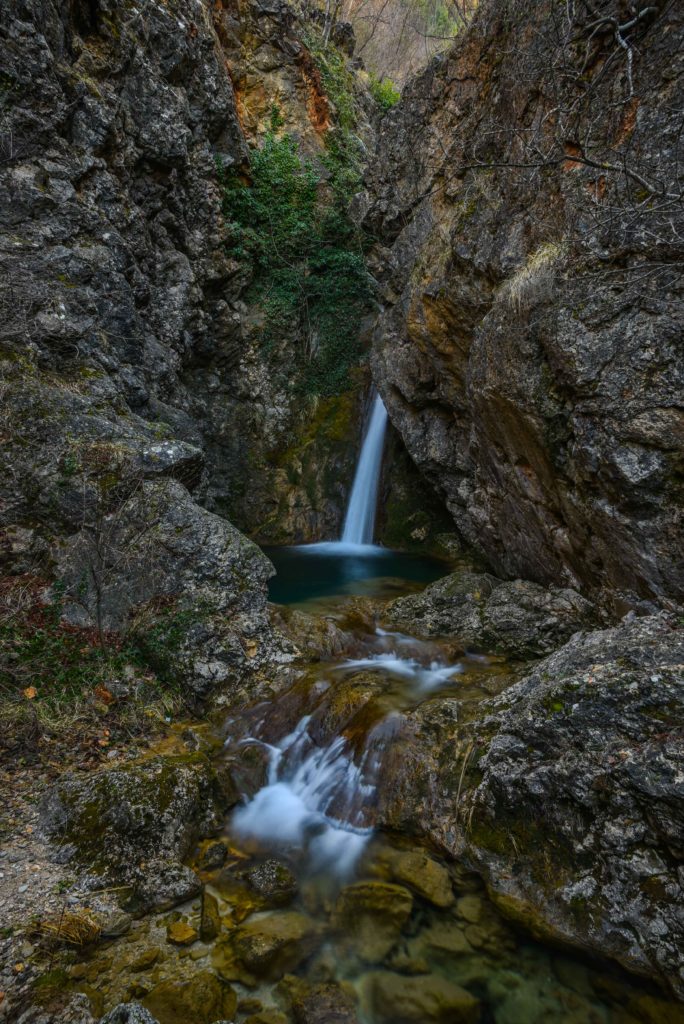
Believe us, you’re well-secured, you get a short training and as a bonus – a walk in beautiful nature.
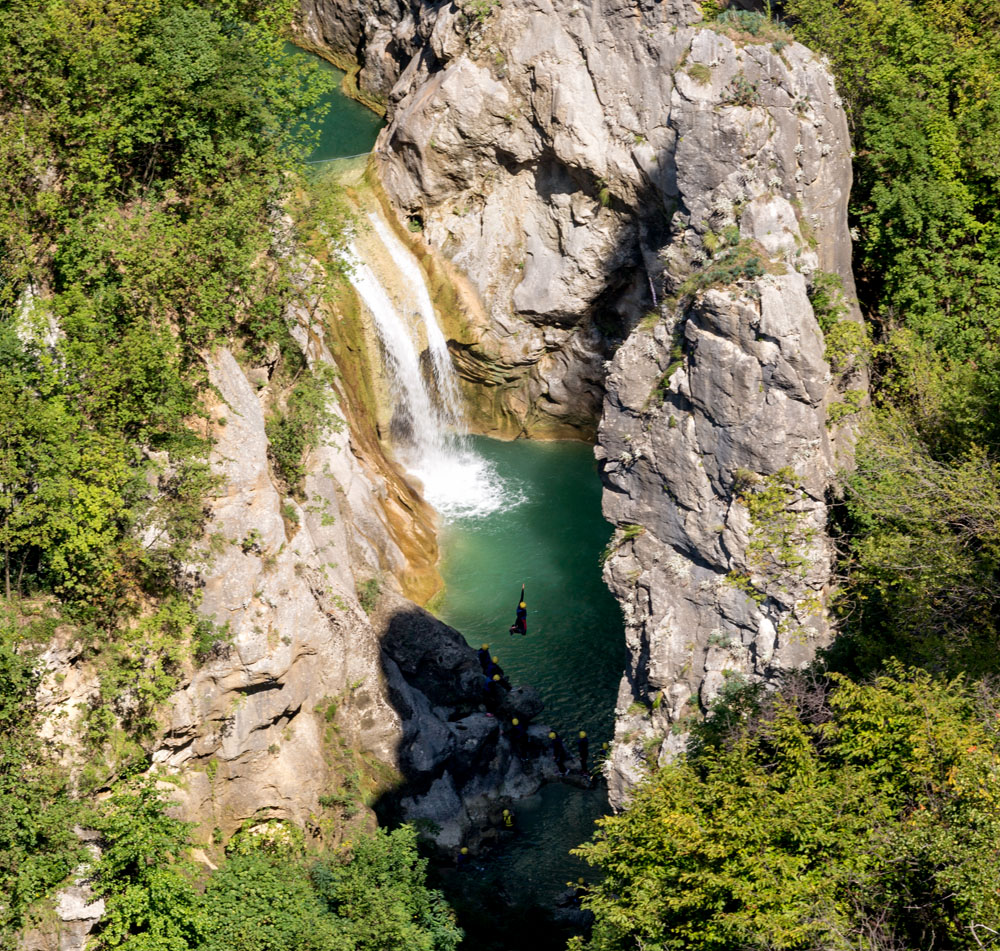
Fear is to be overcome – say experienced adventurers who slide along Omiš’s zip line with the greatest ease. Listen to them and do not miss an experience to remember for the rest of your life!
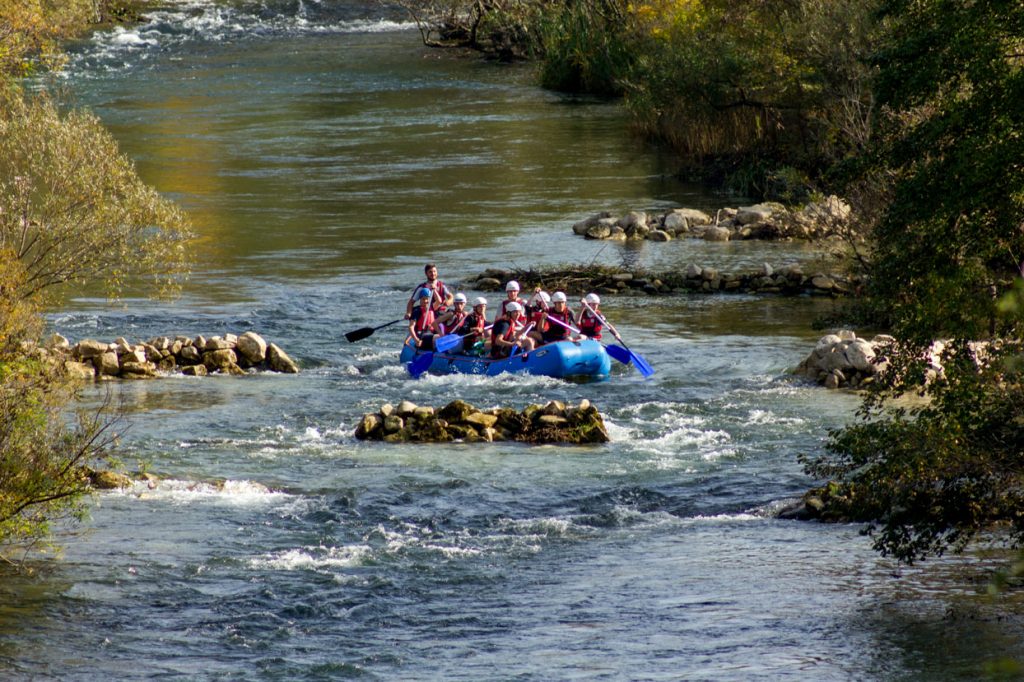
More: www.dalmatia.hr
Photo: www.dalmatia.hr, archive of tourist boards of Split – Dalmatia County


